

 ©2022 QSC, LLC. All rights reserved. QSC and the QSC logo are registered trademarks of QSC, LLC in the U.S. Patent and Trademark Office and other countries. Play Out Loud is a trademark of QSC, LLC.
Conner Pledger
©2022 QSC, LLC. All rights reserved. QSC and the QSC logo are registered trademarks of QSC, LLC in the U.S. Patent and Trademark Office and other countries. Play Out Loud is a trademark of QSC, LLC.
Conner Pledger



 ©2022 QSC, LLC. All rights reserved. QSC and the QSC logo are registered trademarks of QSC, LLC in the U.S. Patent and Trademark Office and other countries. Play Out Loud is a trademark of QSC, LLC.
Conner Pledger
©2022 QSC, LLC. All rights reserved. QSC and the QSC logo are registered trademarks of QSC, LLC in the U.S. Patent and Trademark Office and other countries. Play Out Loud is a trademark of QSC, LLC.
Conner Pledger

As you may well have detected from our front cover, this edition of Headliner USA places this year’s JBL Fest squarely under the microscope.
Held in the lavish environs of the Virgin Hotel in Las Vegas, the vast event serves as a veritable melting pot of new technology, masterclasses in the art of studio creativity, and live performances from world beating stars and the most exciting emerging talent alike. This year Bebe Rexha and Martin Garrix were among the chart-topping artists delivering show-stopping sets, while budding singer songwriter Bella Moulden showed precisely why she is being hotly tipped for big things in the new year. And she also found time for a chat with Headliner on making her JBL Fest debut.
Meanwhile, delivering his inaugural JBL Fest masterclass was acclaimed L.A-based DJ Morgan Page. Despite having cultivated a long-standing relationship with JBL, this was his first time giving a masterclass at the event, in which he offered attendees invaluable advice on how to maintain and develop their creative skills. He too made time to sit down for an extensive chat with Headliner to discuss not only
his JBL Fest session, but the evolution of his career over the past two decades, as well as the shifting sands of the electronic music industry.

We’ve also curated a 2022 JBL Fest diary, providing an on-the-ground account of everything that went down in Vegas.
Elsewhere in this issue, we hear from Turin Brakes about the making of their latest record, while Hollywood actress Alison Sudol, perhaps best known for her starring role in the Fantastic Beasts film series, opens up about the challenging personal circumstances that shaped her new album Still Come The Night.
What’s more, a typically varied lineup of talent from across live events, recorded music, and technology give us the inside track on their approach to their craft and invaluable insights on the trends shaping their particular corners of the world. In summary, it’s an absolute barnstormer of an issue. Enjoy.
Daniel Gumble Head of Music, Headliner


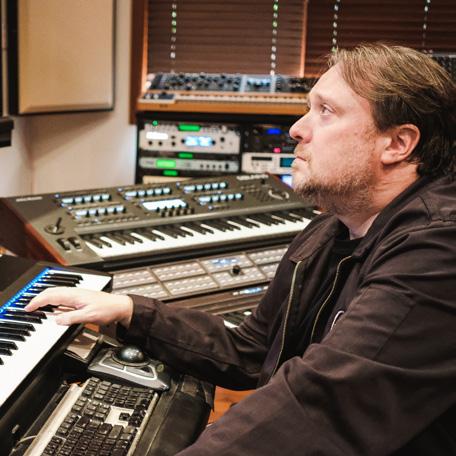
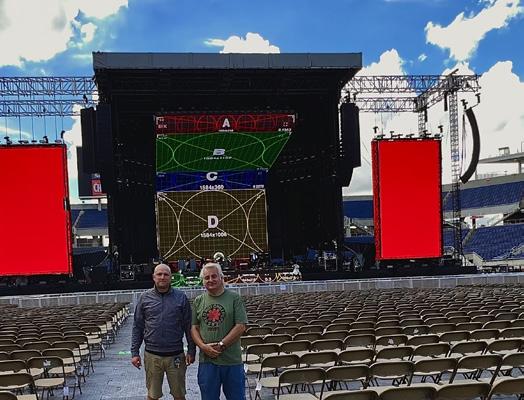

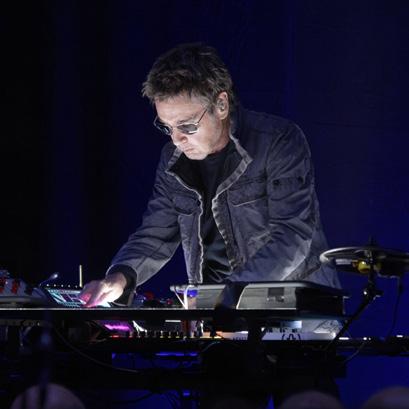
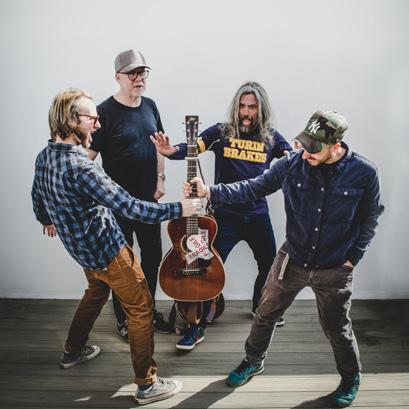






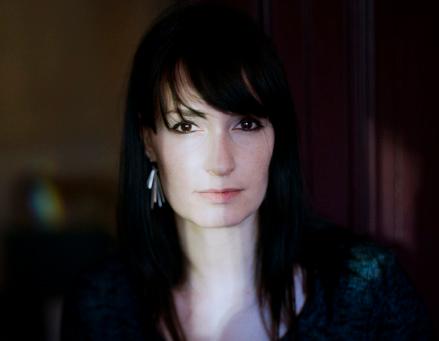

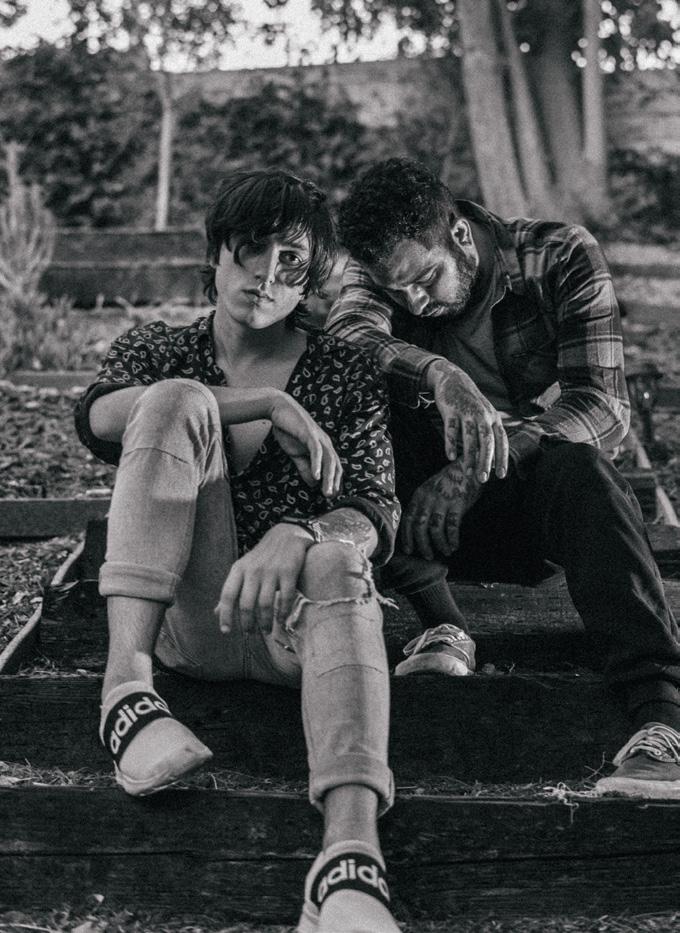
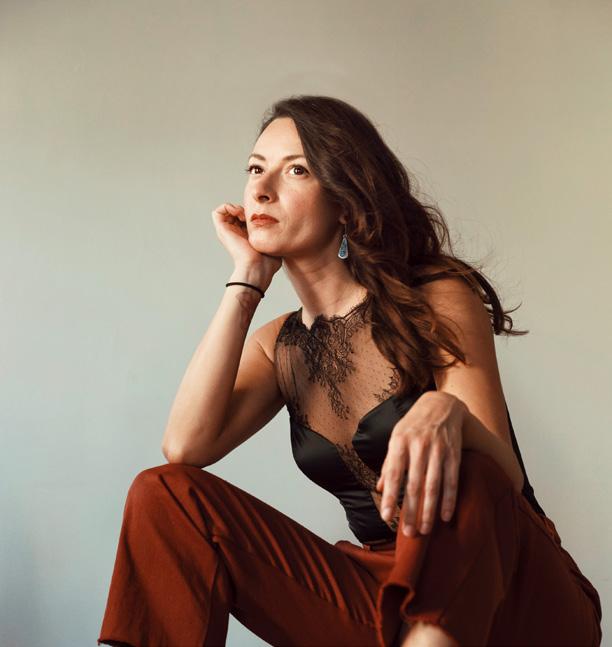
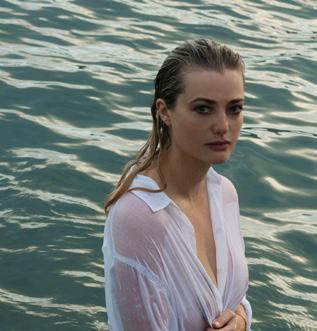

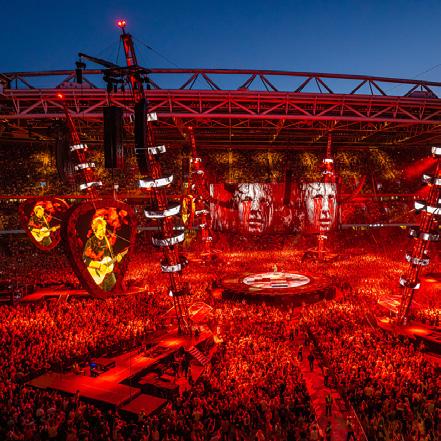
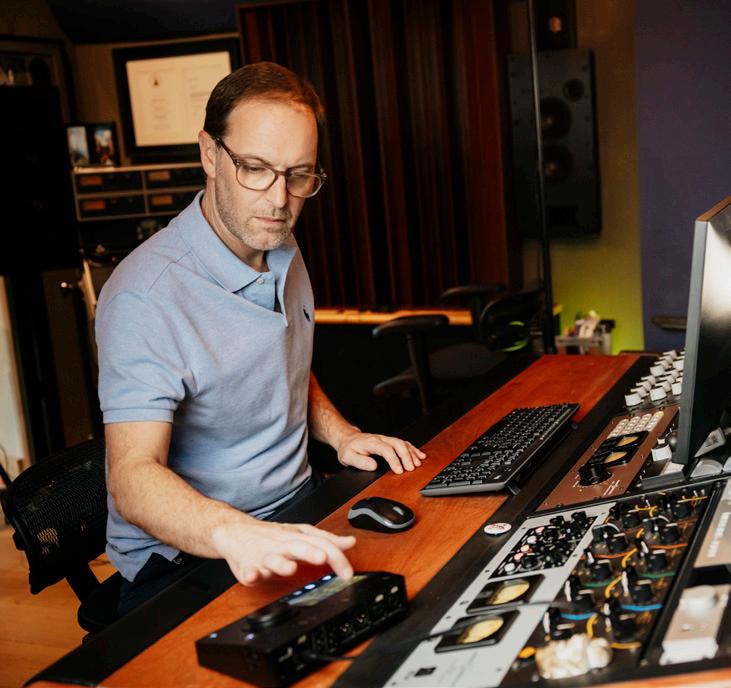

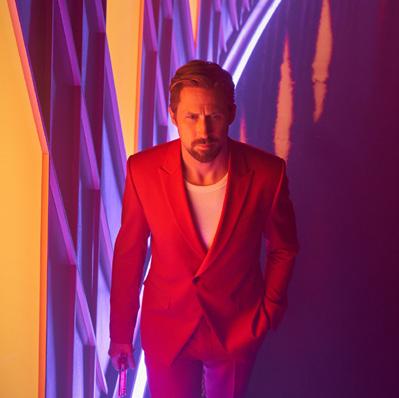

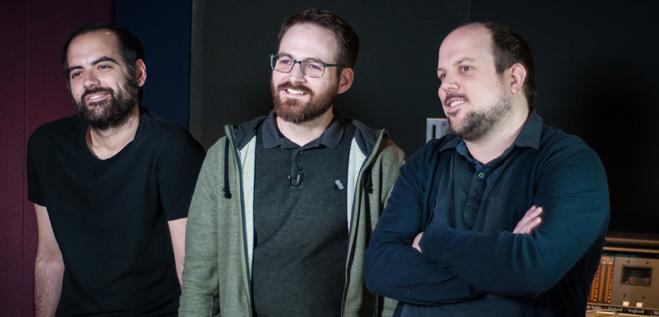

US pop artist and musician Katie Belle Akin, whose breathy voice and playful stage presence caught the attention of mega stars like Katy Perry and Luke Bryan on American Idol Season 17, talks to Headliner about the experience and the important role it has played in her understanding of the music industry and her own artistry.
It is common knowledge that Nashville has been responsible for breaking thousands of artists from varying genres and disciplines into the industry over the years, and Atlanta-based singer-songwriter Katie Belle Akin is no exception.
At the time of interview, Akin – who simply goes by her artist name Katie Belle – was getting ready to travel back to music city for a big session at Yamaha’s orchestra studio: “I have a good feeling that we’re gonna make something really awesome,” she tells Headliner excitedly. “Nashville was like my second home for a long time, and I still know my way around the city very well, but as I’ve progressed with my career and my sound, I’ve started going out to California for recording because I’ve
been gravitating more towards that vibe recently. I go back to Nashville as much as I can though; I really love the people and there’s so much talent wherever you go.”
Akin is well-known for her appearance on American Idol season 17, which was filmed in 2018 and aired the following year, right at the dawn of her musical journey. However, it was many years before this that she discovered her passion. A self-confessed music obsessive from the age of eight years old, Akin admits that she counts herself “super lucky” to have received such strong encouragement and support from the people around her.
“At first it wasn’t really anything serious, and then it just seemed like there was this snowball effect where I just kept getting jobs and opportunities, and people kept asking me to sing and be here and do this and that,” she recalls. “It really just happened organically. I definitely feel like I chose music, but I also feel like in a lot of ways, music chose me.”
Growing up listening to her mother’s favourite jazz and contemporary pop records, the likes of Norah Jones and Vanessa Carlton, Akin was always destined to be a singer-songwriter type. Her dad on the other hand was big into classic rock – Neil Young, CCR – so she developed a further appreciation for songs that are musically and lyrically driven. As she grew, as did her love for mega pop stars such as Taylor Swift and Katy Perry, the latter of which she caught the eye of when performing on American Idol
“It was such a surreal moment,” she remembers fondly. “I’ve watched her documentary a lot, and it just really helps me stay focused. When I’m feeling negative about my career, or maybe I’m tired, or maybe I have a lot going on in my personal life, I’ll go and watch that documentary and it makes me feel super energised. I had watched it a few weeks before I was on Idol, and it was just a really surreal moment seeing her in person.
“Genetically she’s one of the most flawless people I’ve ever seen; she was glowing, and is just a really cool person. Being in the presence of one of the biggest pop stars on the planet right now was incredible, and massively inspiring.”

It’s clear from our conversation that Akin’s appearance on Idol has played a huge role in developing her artistry, and has served as the perfect stepping stone for her entering the industry at such a young age. However, the timing of her Idol journey was thwarted somewhat by the global pandemic. Akin explains how just as the season was airing, and she was really starting to pick up momentum from her time on the show, Covid struck, cutting the overall experience short.
“That being said, I really don’t think that my experience on American Idol could have gone any better,” she says. “It was such an incredible learning experience. For me, as an artist, as a person – it pushed my limits. The schedule we were on was crazy, and the pressure that I had put myself under, as well as the added pressure of the actual show and all the filming, was a lot. I can’t speak highly enough of it though.
a pretty intense person; I really love to push myself and that’s how I learn. Idol was definitely one of those
experiences, and I do think that it boosted my numbers and my name a bit. It’s kind of hard to tell though, because Covid followed that up quite quickly and then no one was worried about American Idol – everyone was worried about staying safe and surviving.”
The conversation turns to the present day and the singles that Akin has released so far this year, two of which being Now That I Know, and Don’t – a fun pop record with a sombre lining, but a liberating message.
“I’m super excited about these two songs, Don’t specifically, because I’ve been working with a new team and we’ve just started warming up to each other and getting on the same page with everything,” she tells Headliner “For that track I got to go back to my songwriting roots, which I always prefer, because I feel like you develop a personal connection with a song when you’re a writer on it.
“I’m
“THIS IS PROBABLY THE FIRST TIME IN MY CAREER WHERE I MOST FEEL LIKE I’VE FOUND MY SOUND.”


“Usually I like to co-write with other people – definitely another producer, and sometimes I prefer to have another lyricist with me as well. When I get in the studio, sometimes we’ll work with a beat that we already have, and sometimes we’ll come up with a melody and build something from scratch. The thing that stays most consistent with me in my creative process however is being authentic; if I don’t have anything to say, then I don’t say anything. I never try to force that kind of creativity or emotion – it has to come to me. I definitely always try to keep things super raw and authentic.”
More recently, Akin has been figuring out how to bring her commercial pop sound to more of an instrumentdriven arrangement. While she undoubtedly considers herself a pop artist at her core, she is keen to strip down the production on her future records: “I’m into complex production, but I really would love to bring it back to more

of a band and live instrument kind of setting,” she says as we round up the interview. “We’re working on a lot more music that I’ll be releasing within the next year as well, so I’m really excited.”
Don’t forget to check out Katie Belle Akin’s latest single, Next Ex, available on streaming platforms now: “I just got out of quite a long term relationship,” she reveals. “So this one is for him.”
For over 15 years, GLM loudspeaker manager software has enabled sound engineers across the globe to utilise our Smart Active Monitors and dial in precise mixes that translate flawlessly to other rooms and playback systems. GLM automatically adjusts your monitor’s settings to counteract unwanted room-acoustic effects, ensuring that you hear the sonic truth, no matter where you choose to set up your system.
With the introduction of our powerful new GRADE report, GLM 4.2 offers you the unique possibility to completely understand and transform your entire listening environment – creating detailed readouts in a matter of minutes.
It’s time to mix faster and better.
Get to know GLM, visit www.genelec.com/glm
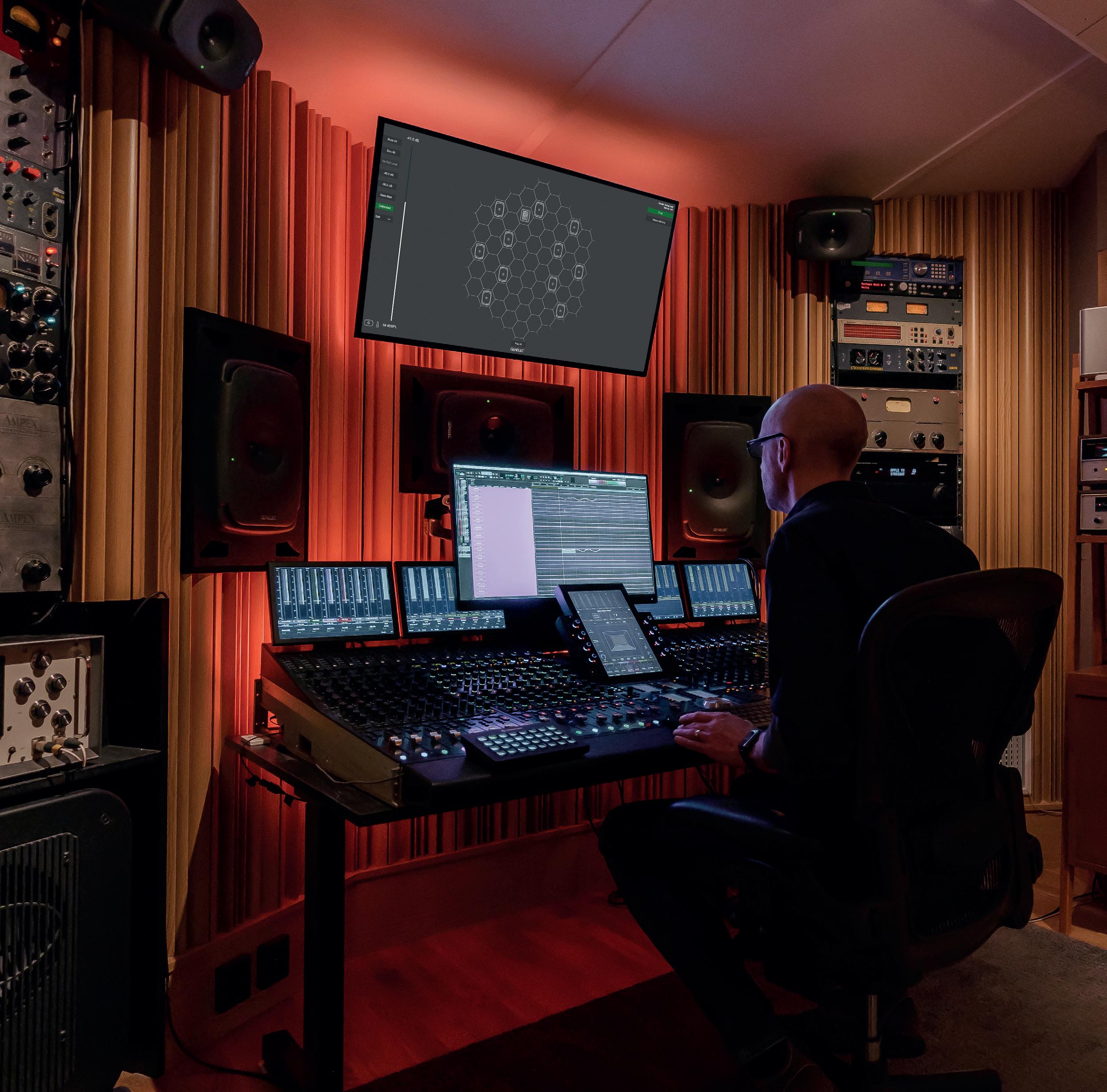
 Words by COLBY RA M YES
Words by COLBY RA M YES
Songwriter, producer, artist and multi-instrumentalist David Lucius King talks to Headliner about working out of London’s iconic Metropolis Studios, his extensive production and songwriting collaboration with Danny O’Donoghue and The Script, and reveals how oeksound plugins help to enhance his creative process in the studio.
Joining Headliner on a call from his studio apartment in the heart of South London, with its glass wall providing panoramic views of the capital, David Lucius King was keen to discuss his musical endeavors of late. Like many producers of his caliber, he started doing Zoom sessions during the UK lockdown, which opened up a completely new aspect of the songwriting world.
While King jokes that this may have “turned him into a bit of a hermit”, it was in fact at London’s iconic Metropolis Studios where he cut his teeth in production, and where he first became acquainted with some of his now long-time collaborators with whom he has cultivated rock-solid musical relationships.
“It’s incredible – it’s like Hogwarts for music,” King says of Metropolis. “It truly is the most magical musical place you could ever visit. You’ll see anybody and everybody there; I was walking back from the cafeteria one time with another producer friend of mine, and this older guy walks past us and goes ‘You alright?’, and we’re like ‘Yeah, we’re good.’ Then my friend goes ‘Do you know who that was Dave? That was Roger from The Who.’”
King admits that music was always the one thing he was good at growing up, picking up a guitar and writing songs from a young age. After starting a band with his four older
siblings, they signed a multi-album deal with EMI Records Germany. At 14 years old, King already had experience working with major labels, and subsequently fell in love with writing and producing the group’s records.
When he was 16, King moved to L.A. to pursue a publishing deal with Universal, and soon found himself spending studio time and writing songs with the likes of Toby Gad: “It was an incredible experience, and I think I just got lucky with some cool opportunities along the way,” he recalls. “Next thing I knew I was doing it full time – it was all a bit of a blur.”
Six years later he decided it was time to move to London, and not long after that, he started working with popular Irish rock trio The Script on their sixth studio album Sunsets & Full Moons, which charted at Number 1 in the UK and Ireland in November 2019. He
quickly developed a long-standing relationship with the band and their lead singer Danny O’Donoghue, going on to write and produce singles Run Through Walls, Hurt People Hurt People and Love Yourself. And he’s still working closely with The Script on their forthcoming releases.
“They’re on tour at the minute, and when they’re back we’re going to fully dive into the next record,” King reveals. “We’ve got a few songs on the boil at the minute that I’m quite excited about.
“We just became inseparable really,” he continues. “I’ve probably spent more time in a room with Danny O’Donoghue than I have with anybody! We’re always making music together, and honestly, it all started from a cold call.”
“I’VE PROBABLY SPENT MORE TIME IN A ROOM WITH DANNY O’DONOGHUE THAN I HAVE WITH ANYBODY! WE’RE ALWAYS MAKING MUSIC TOGETHER.”
For King, when it comes to his creative process in the studio, it’s always the song that comes first: “You could have the most banging production ever, but if your songwriting isn’t great, and the song doesn’t flow, it’s totally useless,” he says. “For me, if the song sounds good on a piano or on a guitar, it’s a good song, because it’s not hiding behind any production or sonic trickery.”
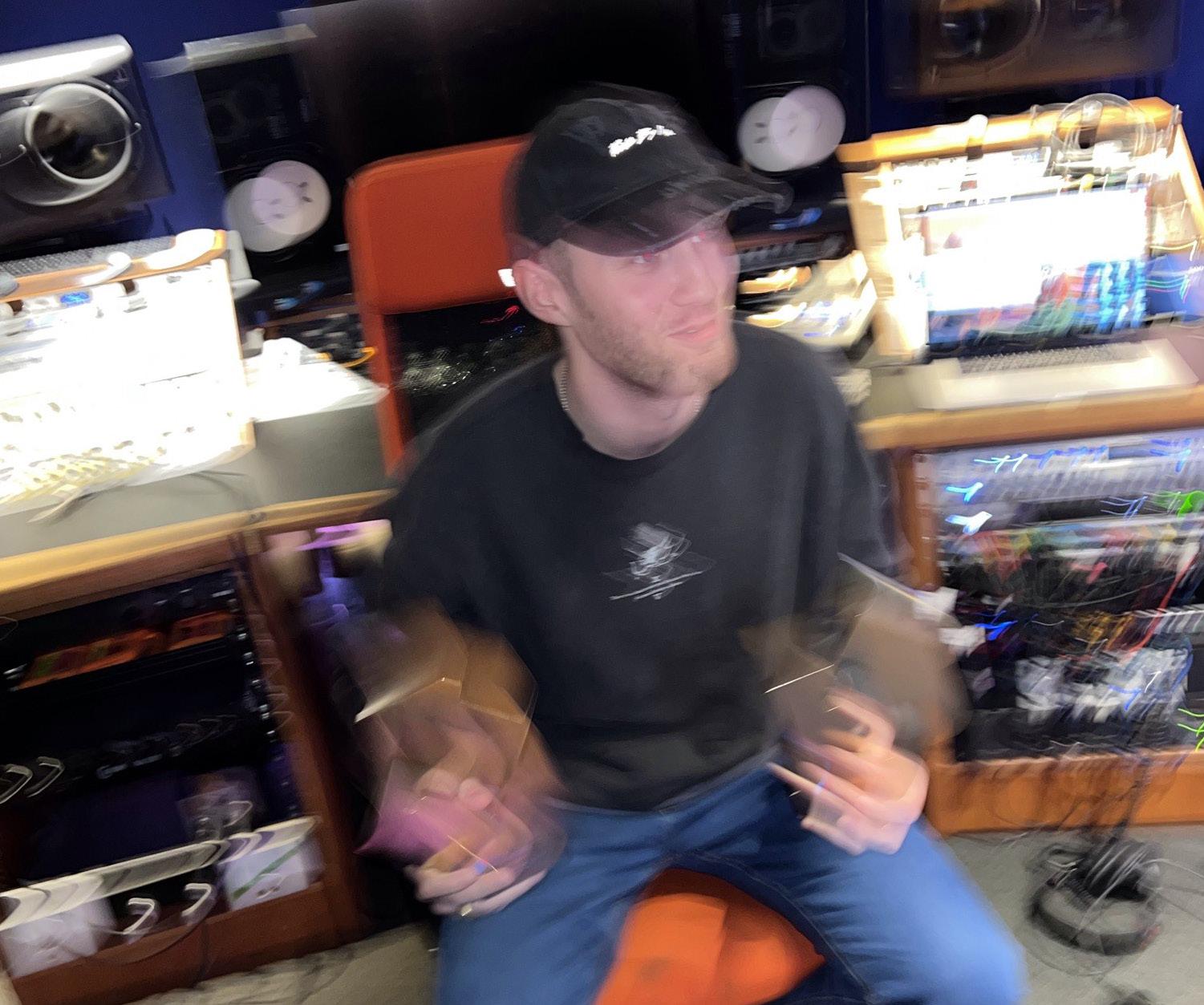
A self-proclaimed super fan of Roland synths – which he often picks up to inspire creativity – King mostly operates in the box with a simple yet effective digital setup. One pair of tools that he often finds himself relying
on these days is soothe2 and spiff from oeksound, which he says have revolutionized his workflow no end.
“Soothe is just such a problem solver in so many different ways,” he says. “I’ll use it to tame the tops of guitars to make it sound more friendly to the ear, or I might use it as a deesser sometimes. I feel like instead of crushing the esses, it just kind of soothes them, hence the name! It’s got so many different uses – I’ve used it on drums and snares, and spiff is also really great for that. I might use a little bit of spiff on the drum buss sometimes just to give it a little push. Soothe is essentially a smart EQ, but
the way it works is just great. Every session I do either has soothe or spiff on there, or a combination of both.
“When the boys are back from tour I just go underground – we’re constantly writing and producing and punching out tunes together.
In January my good friend and Taiwanese-American artist Vanness Wu is also coming over to the UK, so I’m really looking forward to working with him again too.”
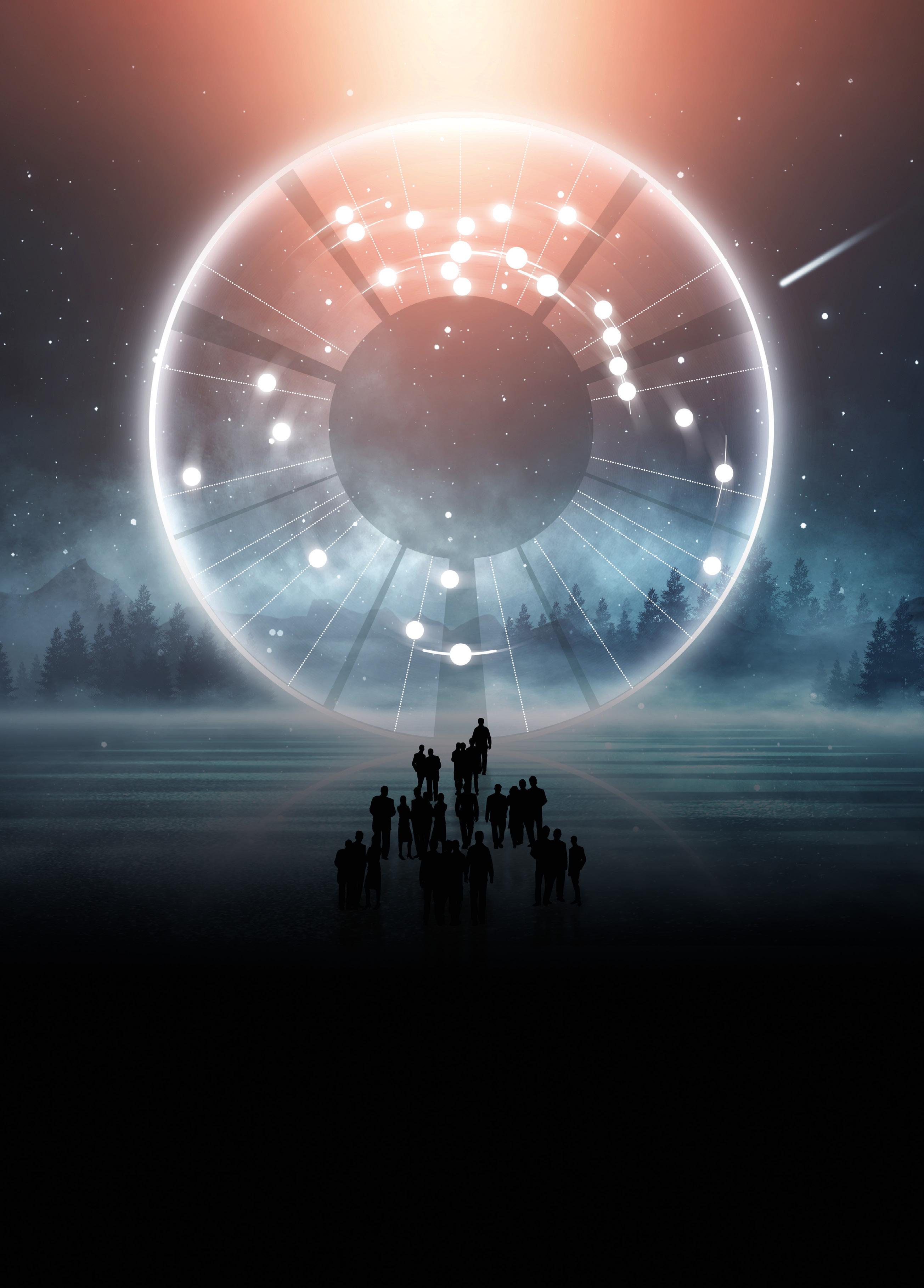

Whether creating new music of his own, remixing the work of others, or finding new ways to guide emerging talent, L.A-based DJ and producer Morgan Page is among the busiest exponents of electronic music in the business. Headliner managed to find a rare gap in his diary for an insightful conversation covering everything from his origins in the industry, what it takes to succeed in today’s market, his recent masterclass at JBL Fest in Las Vegas, and more…
“I’ve just done a remix for Julian Lennon,” a warm and talkative Morgan Page casually throws out when Headliner asks what he’s been up to of late, as the superstar DJ joins us via Zoom from his west coast studio. “I found out he was a fan of my music and he reached out and asked if I could do a remix of one of his singles.” There is no false modesty or showy name-dropping intended, it’s merely a measure of the vast and varied projects that have come to define his 20-year career so far. At the time of our chat, the track, entitled Lucky Ones, is without a release date,
although he informs us that it should be out by the end of the year.
Lennon is, of course, far from the first artist from outside the electro world to call upon Page’s remixing services, with the likes of Madonna, Katy Perry, Nelly Furtado, Korn, Alanis Morissette, Stevie Nicks, Adam Lambert, Coldplay, The B-52s, The Police, Tegan & Sara, and a great many more among those whose work he has remixed over the years.
“I think I’ve done over 400 remixes now,” he says, gazing skyward as if attempting to recall each and every one. “They are really fast turnarounds and really fun to do,” he continues, “whereas the originals take a lot longer, but can be more satisfying in the long run. Ever since the pandemic started, I’ve been doing livestreams as well. I started doing one hour mixes every week. They were livestreams that were totally on the fly. I’d pick an hour of new music I hadn’t heard before, curate it, and then mix on the fly in one take. That’s been a challenge; I have to find 20 new songs every week.”

His commitment to seeking out diverse and eclectic collaborators is matched only, it seems, by a steadfast determination to keep challenging himself technically and refining his already substantial chops.
This, he explains, has always been part of his makeup as an artist, but has become especially important to him during the most restrictive periods of lockdown.
“It’s crucial in keeping your skills together and flexing that muscle,” he says. “In music we can forget to practice as much as we should. A violinist or a cellist would practice and be very disciplined because of the physicality of their instrument, but as a DJ you have to stay sharp and keep brushing up your skills. And you have to be really organised. The most tedious part of DJing is keeping your library together, keeping all the metadata well organised and tagged.”
Such discipline has evidently served Page well since breaking onto the scene in the late-‘90s/early-‘00s. His
route to the upper echelons of the DJ fraternity was less than conventional, and he certainly trod his fair share of hard yards along the way.
“It was a sideways entrance into the music world,” he recalls. “I did it through radio. I was a radio DJ, and as a high school student I did my own mix shows at college stations. That lead to DJing in college and internships in the summer at record labels. I produced a little bit first, then did some DJing, and the internships allowed me to get some songs signed. At the end of high school, I was able to get some music signed early on, and I thought it would be a very quick start, but it was a long process - a 10-year overnight success, as they say.

Page’s first brush with success came by way of a “controversial” compilation of unauthorised remixes entitled Cease And Desist. He picks up the story.
“That was a bootleg remix album that was inspired by what Danger Mouse did with The Grey Album, where he did some mashups,” he reflects fondly. “It was a bit more controversial to do mash ups and illegal remixes at that time. There were remixes of Coldplay, Imogen Heap, David Bowie, Tegan & Sarah, and that led to a later collaboration with Tegan & Sarah. I sent my Imogen remix to her, and she said, “don’t put this out!” And I said, “I’m putting it out - I love it, and the reaction I’m getting is insane!” It was the song Hide and Seek, which is so good. It was a really tough remix because her vocals aren’t even on the grid, everything has gone through a harmoniser. So that was like doing bootcamp.
“I pressed up CDs of that and it was the first tipping point that led to remix work. I started to do two or three remixes
a week, which was insane. And then things didn’t really get going until I put out The Longest Road in 2008 and I had Deadmau5 do a remix. That was before he had the helmet, so it was really good timing with the arc in his career, when things were getting really busy. He stripped the song down and made it really simple and even more emotional, and that lead to touring.”
According to Page, the landscape for emerging DJs and producers is very different to the one he navigated a couple of decades ago. As he describes, many of the same principles remain when pursuing a career in the industry, but the point of entry has shifted significantly.
“It’s really different because there is a lower barrier to entry,” he states. “Before it was about being able to get studio time and the gear was really expensive, so some people were able to get through that door easier if they were rich or had a friend who had a studio. It was so hard to get started with just one piece of equipment. An
MPC2000 was $2,000, you had to be a drug dealer to get started! I was able to just cobble together used gear and save up my money to do one thing at a time. And computers weren’t that powerful then, Pro Tools was not affordable, they didn’t have an entrylevel version. I started with hardware sequencers and things like that, but it’s very different now.
“Some of the fundamentals are the same, like, you still need to have original music that stands out. If something is super polished and pretty it just passes people by, it has to have some texture on it to be sticky enough. A career can blow up much faster and fall apart much faster now. You can blow up based on a TikTok video, but that rarefied air of a hit record will fade faster for most people. You can’t make a career on one record. You can keep ratchetting that momentum but now you have to be ready with the second, third and fourth hit. It’s always been like that, but it’s faster now.”
Away from the studio, Page has spent ample time drawing upon his industry knowledge and experience and finding ever new and interesting ways to channel it to those pursuing a career in the DJ market. Perhaps the most direct and tangible manifestation of this endeavour is his Quick Tips card deck - a deck of 54 cards that each contains a quick tip on how to improve your creative process and efficiency in the studio. These cards also formed a core part of his masterclass at this year’s annual JBL Fest.
The event, which runs over three days, is packed with everything from product demonstrations and technology showcases to masterclasses and
education sessions from the likes of Page, as well as stellar live performances from some of the biggest names in music. This year saw chart-topping stars Bebe Rexha and Martin Garrix among those delivering showstopping sets to packed out crowds, with the former supported by emerging US singer-songwriter Bella Moulden.

“It’s a massive event and this was my first time doing a masterclass there,” Page explains. “I’ve done some guest lectures at Harman’s HQ in California, but this is the first time presenting all of my music making knowledge. I created a song from scratch, on the fly, illustrating my approach and
techniques using my Quick Tip cards. They offer creative approaches and strategies and are based around techniques I wrote down over the years when I felt like something was working in the studio. There’s a lot of workflow stuff. There is the rule of three, which is really interesting. It’s the idea that you can only really focus on three things at once, so you have to rotate those elements. You can think of that while you are arranging or composing song.”
So how did Page find his inaugural JBL Fest masterclass?
“I found JBL Fest great,” he beams. “It was so polished and well put together – it was also a much bigger production than I’d expected. There was a real vibe to it. And what was really cool [about doing the masterclass] was that the [JBL] guys just let me do my thing; they really wanted me to track the session live, which was cool, and a fun challenge. But the coolest part was that everything went so smoothly, and because there are so many experts in audio gear [on the team], everything worked and sounded great, with no latency. And what I really like with these guys is that they see the vision. Sometimes when you have creative cards and things like this, people don’t get it, but it’s cool as JBL understand and everyone in the team had a favorite card. They personally were so invested in the project, which meant a lot to me, and hopefully we’ll do another seminar.
While it may have been his first time giving a masterclass at JBL Fest, Page’s relationship with the JBL brand stretches back much further than the recent Vegas soiree.
“My relationship with JBL goes back four or five years,” he says. “I love working with brands and giving product feedback. It’s the other side of the coin, where beyond the creative side I can be helpful and analytical and ask questions about various product features. And I use
a lot of the AKG mics in the studio, I use JBL speakers for my livestream. It’s great to have that relationship and have some input. Sometimes designers have very specific needs that they think of in the lab, but when you go out on the road and you’re right in the thick of it you get a different perspective of what’s needed. But I love doing the guest lectures and showing that creative process. It’s really important to do those long form presentations that you don’t get on a TikTok post or a short YouTube video.”
While there are plenty of nuggets of wisdom to be discovered in those aforementioned Quick Tip cards on developing one’s creative skills, are there any pearls he can offer up on how to navigate the business side of a career in music today?
“Business advice is so hard because it is so context-specific to the person’s situation,” he ponders after a short pause. “You have no leverage or negotiating power until you are a ‘hot act’. I think it’s always a smart business idea to have remixes done, do swaps, have friends do remixes. Build intellectual property every day instead of just being precious and hoping one song will do everything. It took a remix of one of my songs to get my career started.
“So much is left up to the artist and you have to wear a lot of different hats. But one simple tip I would give is that if a manager or a lawyer can’t explain a clause in a contract to you
then you should fire them. If they can’t explain legalese or something that is confusing to you don’t gloss it over, because you will pay for that later in your career. I’ve made that mistake and glossed over contracts, but it’s still on you to ask people representing you to explain things in plain English.”
With a busy schedule beckoning, there’s just enough time for Page to fill us in on what the future holds as we approach the end of the year.
“Basically, a lot of touring and a bunch of new singles for [record labels] Armada Music and Spinnin’ Records,” he says before bidding us farewell. “And I’m cooking up the next card deck and where to take these next tips. I’d love to build it into something that I could take out on the road. A lot of people want to do music for fun, not even to sell or even make records... So there is a huge opportunity to teach people who want to dabble in it and just be able to learn a new skill. And I think there is also a lot of excitement around reeducation: how to learn really quickly and be able to jump around and try new careers. So, I think that’s a focus of the Quick Tips as that expands.” JBLPRO.COM MORGAN-PAGE.COM
“BUILD INTELLECTUAL PROPERTY EVERY DAY INSTEAD OF JUST BEING PRECIOUS AND HOPING ONE SONG WILL DO EVERYTHING.”

 Words by ALICE GUS T NOSA
Words by ALICE GUS T NOSA
After six seasons, two finger guns through a jail yard fence signaled the end of Better Call Saul, Breaking Bad’s critically acclaimed prequel (and sometimes sequel). For Dave Porter, it closes the door on 15 years of work with Vince Gilligan, with the L.A-based composer scoring the music for the entirety of ‘the Gilliverse’, comprising Breaking Bad (including its iconic opening theme), Better Call Saul, and El Camino: A Breaking Bad Movie. He explains why, despite it being all over, it’s all good.


Does Kim die? What happens to Jimmy? These are the kinds of questions Porter no longer has to
fend off from enquiring Better Call Saul fans now that the series has come to an end.
“My friends and family know me better than to have bothered me with those questions, but I am glad to not have to retain those secrets anymore,” he says, sounding relieved. “It is a pain, especially when everybody’s excited and you want them to be as excited as you are. But it is good to have it all out there.”
The core cast may have changed during the three Gilliverse projects, but Porter’s music has been a constant and integral part of the
overarching story. Better Call Saul gets darker in theme as the show progresses through the seasons, particularly after what happens to Howard, and in Jimmy’s bleak post Breaking Bad life as Gene. Porter took particular care to reflect the subtle change in tone in the music.
“There was a consistent evolution of the tone of the show throughout all six seasons,” he nods. “When we began Better Call Saul, we were adamant to make it sound different from Breaking Bad. It definitely had a breezier, lighter and more innocent feel as we got to know the early iterations of Jimmy, but as we start moving towards the Breaking Bad timeline and we get introduced to more and more Breaking Bad characters and the cartel, the show gets darker. And of course, Kim and Jimmy’s situation gets darker as the series goes along. When we jump forward to the post Breaking Bad timeline, it was like a new pilot. It is all shot in black and white, and musically I wanted to echo that huge shift, so
we did a very different score – a totally new orchestration and way of approaching it.”
The pressure was on to stick the landing. Breaking Bad’s Felina is up there as one of the best TV endings of all time. Better Call Saul had been so consistently good, many wondered if it could sustain it until the very end. The audience had been given death in Breaking Bad and revenge and escape in El Camino. Show creators Gilligan and Peter Gould provided a third option in Better Call Saul: jail time and redemption. Kim visits Jimmy in prison, and in a callback to their first ever screen time together, they share a cigarette.
“There was no question that there was a lot of pressure for the final episode,” says Porter. “Unlike Breaking Bad where Vince went into the script knowing the music that he wanted to end with, that was not the case here. I know that there were songs considered for the ending, but I’m never part of
those discussions. We had to figure out how the music was going to help tell the end of the story in the way that Peter and Vince wanted.”
The music subtly kicks in during Kim and Jimmy’s final smoke in the show’s closing moments – serving as a visual and musical parallel with their first onscreen moment together in the parking lot from season one. In fact, the music is almost exactly the same as that very first scene. Porter shares that this cue was actually the first ever piece of music that he wrote for the show back in 2015.
“It’s mostly unchanged,” he shares of the music’s full circle moment. “There’s an organ part in it that I dropped an octave to give it a little more gravity in the ending version, and of course, it’s longer. So there were some changes made to make sure that it worked with the picture and carried us through to the ‘finger guns’ moment. By design, it’s very similar. I think there’s a magic about that.
“WE WANTED TO LEAVE THE FUTURE UNKNOWN.”
“There’s an undying power in the kind of relationship and connection that Jimmy and Kim have that’s unbreakable,” he adds. “It’s powerful enough to redeem a man who seemed unredeemable. It helped her to move on with her life. There’s a lot of power in the simplicity of it and the callback of it, even if a lot of viewers may not realize. Just the tone of it, by its nature, having the more hopeful, innocent character about it – that was in my mind when I wrote it for season one. It sets it apart against the backdrop of the much more serious tone that we’ve been dealing with more recently.”
The last moments of Better Call Saul see Kim turn back to see Jimmy give her their trademark finger guns through a jail yard fence. Porter’s score follow’s Kim out, the last few seconds cutting to silence before the final credits roll. It is undeniably poignant.

“We wanted to leave the future unknown,” Porter says of the last few seconds of silence. “I think no matter what I could have done musically, if I
carried it through to the end, it would have tilted the scales one way or the other about the future for these two.
The story of the music is about the moment, it’s about what’s already transpired. It’s about what sacrifices they’ve both made for each other. That’s why the music very consciously ends at the finger guns. The future is unknown. Will she ever see him again? Will she work to try to get him out of jail? Is there any contact between them? What does her future hold? All those questions are better left unsaid.”
In his home studio, Porter has relied on Genelec studio monitors throughout the entirety of his score work on Breaking Bad, El Camino and Better Call Saul
“I have a very trusty pair of Genelec 1031As that I have owned for longer than I’ve been working on Breaking Bad,” he reflects. “I know them and love them. I have a spare in case one ever goes awry, but they never have! There was a quality about them that always resonated with me and so as soon as I could, I bought my own pair. I have never worked on anything else,
even though I know there’s a lot of newer models of Genelecs out there that I’m sure are awesome,” he laughs.
“For me as someone who’s a composer first and a mixer second –although I do take some pride in my meager mixing abilities – familiarity is a great thing, so I’ve never changed, and I do love them. When I move to other studios, I always request to have them. I’ve used them on all of [Breaking Bad, El Camino and Better Call Saul], and they tend to be in the mix stages when we do our final dubs, so I can always ask to hear them on the same speakers that I worked on, which is useful for reference. And when I do live recordings, which I don’t do here in my own home studio, which is strictly a writing room, I always make sure that they’re available for me.”
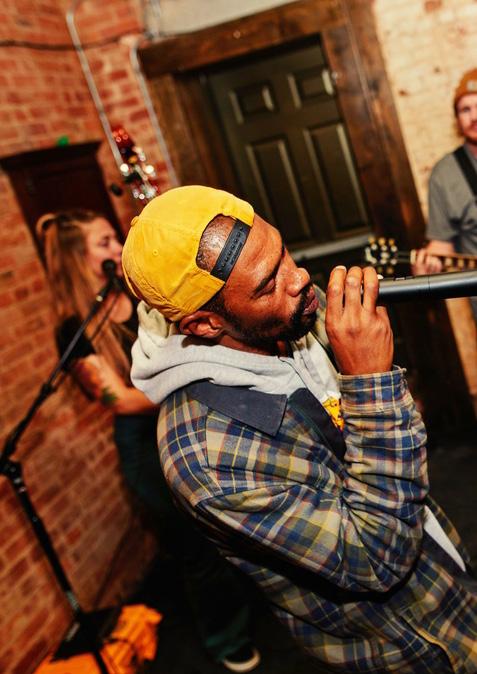
“I started rapping in 1993, in ninth grade,” recalls Free from his home in rural upstate New York. “My older brother had friends who were producing music at the time. It was serious gangsta rap as this was the peak era of songs about 40-ouncers and smoking blunts, but what I gravitated to were the skills of freestyling, beatboxing and dancing. I’ve loved hip-hop culture
since it first hit L.A around 1985. But in ’93, something just grabbed me, and I ran with it.”
In the early 2000s, Free was doing social work in Hollywood with the homeless and runaway youth where he met J Brave – “I used to give it to him on the basketball court,” he chuckles. “We were playing one day and some beats came on and I just
started freestyling. No one knew me at the time. I had a good job and wasn’t interested in rapping professionally. But J wanted to do music with me. One day, he just hit me up and I said, ‘Okay, you take a job at this center helping kids with me, I’ll start doing music with you’.”
J Brave took the job, and Free stayed true to his word. The two quickly became friends and moved into an apartment in Venice Beach where they started recording together.
“We moved right above a really dope artist named Myka 9 from a group called Freestyle Fellowship,” he says. “They are historic in terms of freestyling – they took the rap improv game in L.A to a higher level. It was Myka that pushed us to form a group.”
The group went on to become funkfolk-hip-hop ensemble, Luminaries. “Myka said we were just spittin’ out light with both our rhymes and our work,” Free smiles. “Once Myka put his stamp of approval on our stuff, it took off from there. We added a lot of live musicians to the group and wound up being 10 freaky, dirty hippies touring the West Coast in a school bus converted to run on vegetable oil! We had a good run but as bands do, we got older and seasons changed.”
That brings him to where he is now: happily married with children in rural upstate New York, which, after over 10 years on the road, was quite the culture shock:
“Tell me about it! There are not a lot of people here who look like me, if you know what I mean. So, for one, making the album [Rocketship Theory] was an antidote to my seasonal depression, because I’d never lived through a real winter before. But I wanted a place to be a good dad and husband, so
using music therapy as a tool, Marv Ellis [producer and engineer] and I started talking about the spaceship as a metaphor for a journey. Marv and the Free Creatures produced every aspect of it,” he adds. “It was mastered by Nine Theory. Emily Turner is all over it on upright bass. Myka 9 is on a track. Anthony Brewster is on a track, so is the amazing country singer Cassandra Lewis.”
Free describes himself as a “spiritual rapper”. Always precise, always positive, but never too polite, his words have explored themes of world peace, hope, justice and the oneness of humanity – poetry that surely helped him earn an opening slot for fellow wordsmith and rapper Matisyahu. Free’s album, Rocketship Theory, frames his personal growth as a journey through outer space:
“It’s about my rites of passage, about leaving everything I knew and loved in L.A and moving to effectively the woods of upstate New York,” he nods. “It starts on Earth, with liftoff, and the songs represent stages as you get older and go through rites of passage. My big one was moving East.
“There’s also my name,” he shares. “I used to go by ‘Freewill Luminous’. In many cultures, once you’ve reached maturity, you get to name yourself. My government name is Felix Harris, and I like the first part of that, so I combined it with my nickname ‘Free’. That reflects a new place I’ve come to. In this way, each song details all the things I had
to do to cope with a challenge. The final song is Blip, which refers to when you’re finally well on your way. No one can really figure out what you’re up to and so they make assumptions. You know where you are, but on their radar, you’re just a blip because they can’t conceive of how much you’ve grown.”
Tracking vocals a continent away from Ellis’ studio, Free searched for the perfect vocal tone. Having used Audix mics onstage, he finally navigated to the AP41 wireless version of the OM5. It had been his live mic of choice, so not only was it already there, but he felt it captured his voice better than his studio mics.
“Marv had been using a legacy Audix wireless mic onstage that I think is no longer really allowed in terms of radio frequencies, but it impressed me right away,” he explains. “We were looking at my live shows maybe three years ago, really breaking down the board tapes and seeing what might work better for my voice.”
“I’m a very animated performer onstage,” he stresses. “I cannot stand in one place in front of a mic stand! I had been looking at some other big names in wireless mics, but Audix just struck me as a better-built product. When I was on tour with Matisyahu, there were a few dates with some huge stages. If that space is there, I’m gonna run all over it! I even ran out into the crowd several times. I didn’t hear one dropout or one pop and the audio quality didn’t change.”
“ROCKETSHIP THEORY WAS AN ANTIDOTE TO MY SEASONAL DEPRESSION, BECAUSE I’D NEVER LIVED THROUGH A REAL WINTER BEFORE.”
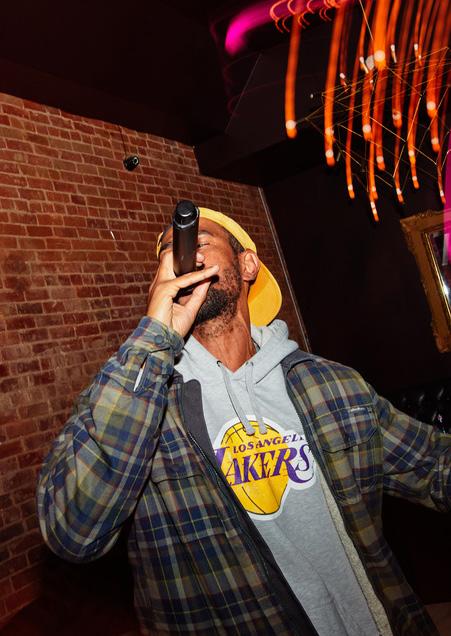
Audix’s OM5 dynamic vocal mic is his weapon of choice on stage, which he says suits his distinct voice perfectly:
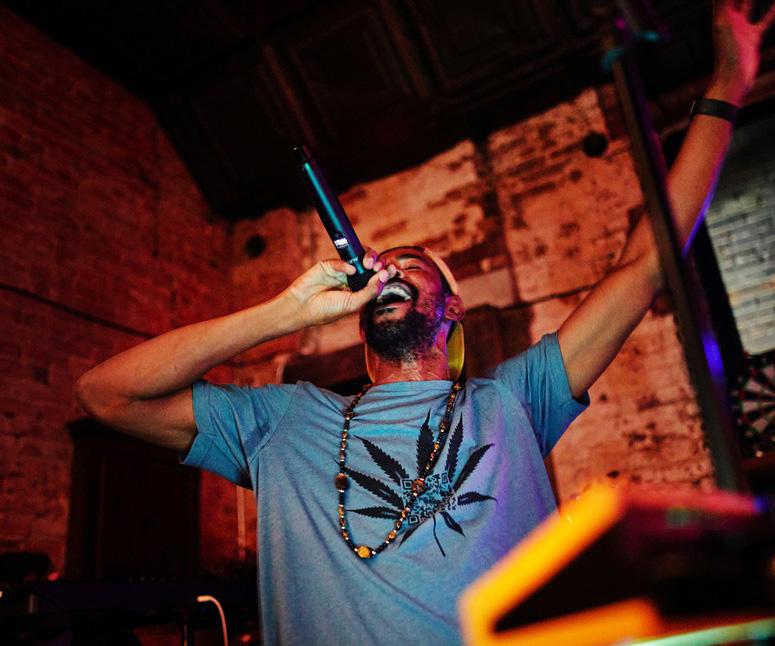
“I can have a nasally voice sometimes,” he admits. “The OM5 doesn’t make it sound more pinched. Instead it compensates for that by picking up the bass of my voice really well, not just the mids.”
He also used the OM5 to record Rocketship Theory ’s Orbit and Blip
“I was recording vocals into Logic Pro to send to Marv. Keep in mind that I was learning to record and then digitally transferring tracks to Oregon where he was producing it, adding music, all that. We were never once in the same room. I decided I’d A-B the OM5 with my studio mic, which shall now remain nameless. With a pop filter on it, the Audix just sounded better. For one, my vocal didn’t need a lot of EQ or compression after the fact.”
“I’d bet we’ve used Audix vocal mics on more live shows than any band I know,” interjects Ellis. “What we liked about Felix’s OM5 on the tracks he sent us is that he found his voice. His delivery – everything just came together. We were trying to figure it out together, because Felix is a stage performer first, not an engineer, and I’m trying to get the best tone from someone across the country.
“We’d started working on the album over a year and a half ago,” he furthers. “Finally, he sent me those last two songs, Orbit and Blip , and everything gelled. The difference was that on those tracks – he had that Audix mic. Over the course of the album, Felix taught himself how to record, and in terms of his vocal tone and performance, it was like those last two tracks were the goal the entire time.”

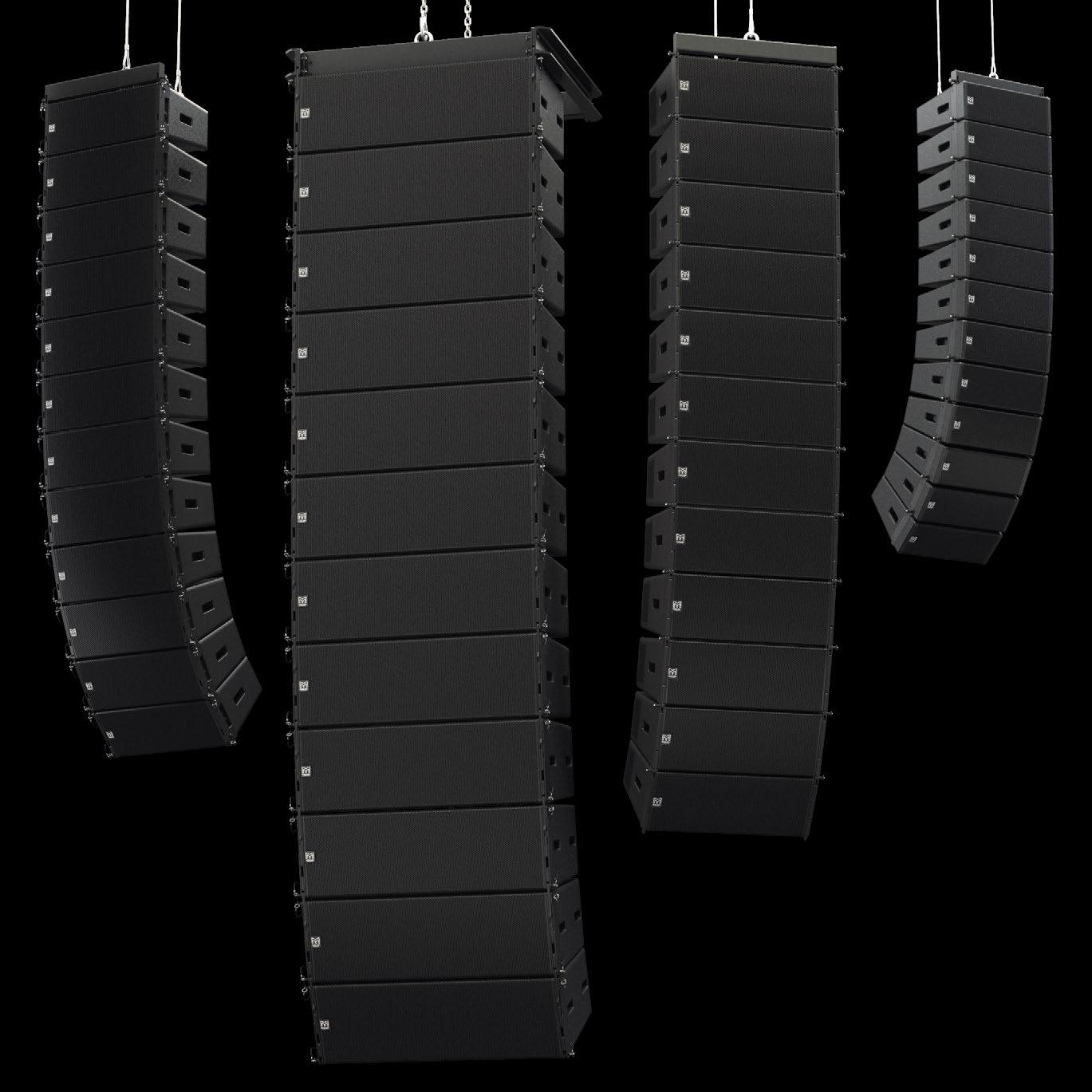
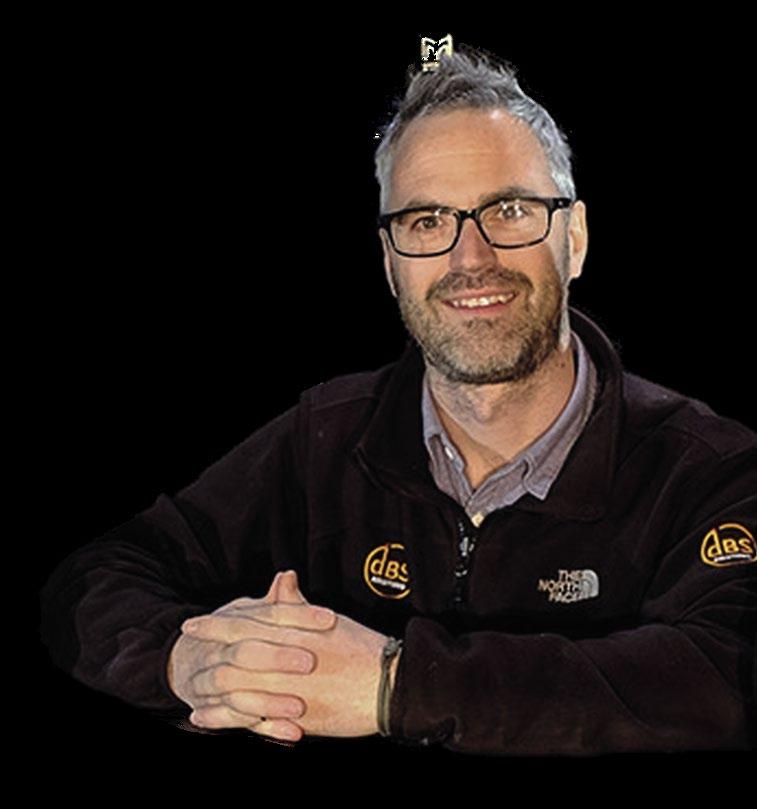

One Las Vegas hotel, a handful of top-drawer artists, three big concerts, influencers-a-plenty, and a core pro audio backbone were just some of the key ingredients at this year’s extraordinary JBL Fest. Headliner was on the ground to take it all in...
Pulling up outside the Virgin Hotel (formerly the Hard Rock) just a halfmile or so from the Las Vegas strip, it’s immediately evident to any onlooker how big a deal this week-long festival is. JBL Fest branding is in prime location outside the main doors, as well as inside the main doors, splashed across the lobby walls which surround the casino, along the corridors... you get the idea. It’s a takeover, all bar the casino tables themselves – and less said about those the better, which is a story for another day.
The JBL presence is, of course, unsurprising when you consider the calibre of artist that will be performing throughout the week: Bebe Rexha, Doja Cat, The Kid Laroi, Tigerlily, and Martin Garrix.
We begin our journey pre-soundcheck outside House of JBL with emerging artist, Bella Moulden, who will be opening for Bebe Rexha here this evening. Moulden was selected to perform at JBL Fest as part of Headliner’s ongoing Emerging Headliner initiative to champion standout up-and-coming artists who are making waves in the industry, after impressing at the NAMM show in June.
“I haven’t even been able to think about the show, so it hasn’t really clicked in for me yet,” admits Moulden, with a smile, as the stage is prepared behind us for soundcheck. “I was at Dunkin’ Donuts earlier with the JBL guys discussing
it, and they were like, ‘yeah, Bebe already approved you [for this show]’, and I was like ‘what?!’ [laughs] and then I started getting nervous! So now I have to make sure my performance is perfect because I can’t let her down, you know?”
Soundcheck is solid, and Moulden’s innocence of youth allows for several more pinch-me moments as she spots herself on the various big screens, working with the house engineers on establishing the right tone for her backing tracks and vocal mic, as audio begins to fire through the JBL A8 and B18 ground-stacks and her VP 7212 MDP stage monitors. 40 minutes
later, she’s all set, and retreats to her hotel room to prepare for the evening ahead.
It’s 8.15pm, and Moulden has her red carpet moment, which she takes to with ease, posing for photographs with team members and fans alike as she’s snapped by a string of photographers, before heading into the venue, which is filling up nicely.
9pm, and Moulden is on stage, cutting shapes with her trademark doubleneck guitar and accompanying synth, utilising her loop station to maximum effect during a three-song Day two begins with the Harman Tech Conference, which covers a wide variety of technologies –Headliner’s highlight is without doubt listening to a great interview with Tesla co-founder, Martin Eberhard, an inspiring and humble individual who reveals how Tesla came to be:
“I’d always wanted to buy a Porsche, but I decided I didn’t want a 19 miles per gallon vehicle, so I decided to design my own,” Eberhard smiles,
set that comprises two cover versions: Eurythmics’ Sweet Dreams and Grimes’ Oblivion; and her very own Season of the Witch, which went viral with over 100,000 creations on TikTok.
It’s a slick set, which at one point sees Moulden work her audience into a clapping frenzy, but for the most part she just does her thing: she’s vocally sound, and musically on point. And she is received warmly, which is fully deserved.
“Out of all the live performances I’ve done, that’s probably the best sound quality performance I’ve ever had,”
Moulden declares, post-show. “I remember performing at a different event and the audio was terrible, but this was phenomenal. I was also able to hear myself clearly through the monitors – everything just sounded really nice.”
At 10pm-ish, Bebe Rexha dons the stage and proceeds to nail her hourlong headline set – she’s the kind of artist whose songs you might not think you know, but then you hear them and soon realise, ‘oh, she did that song!’ This happens to Headliner at least three times during her set...
adding that the process began effectively on a scrap of paper. “That’s kind of how the idea of Tesla was born.”
Eberhard goes on to discuss the driving experience in general, and how it’s important not to lose that human touch within the technology. He also discusses the importance of delivering quality audio into vehicles and how Harman is at the cutting edge of that side, and the potential of
immersive systems. It’s a fascinating insight.
Next up is the AV Masterclass, hosted by Saben Shawhan, director of audio applications and support group at Harman. Before Shawhan dives into the various JBL product lines, FOH engineer Daniel Reed (5 Seconds of Summer, Troye Sivan) takes some questions from a packed room of engineers, influencers, artists, and audiophiles.
“IT’S
FRENZY.”

He answers a great question about how he takes his mixes into brand-new venues and spaces he hasn’t been to before:
“It all starts in rehearsals and the very beginning of preproduction; that’s where we do all of our mix-building,” Reed reveals. “We live in a digital world where I’m able to save all of my settings on USB sticks. I’m able to have my console, whether I’m bringing my own or having one supplied; and I essentially want the mix to be as close to a record mix as possible.”
The mic is then handed over to Shawhan, who talks the audience through the EON ONE and PRX ONE speaker systems on offer from JBL. He’s very excited to introduce the “brand new product” that is EON ONE, with lots of demos to be shared with the crowd over the two hours of the masterclass.
The first song to show off the capability of these speakers is Lorde’s Royals, which sounds more stunning than ever, and crystal clear.
“Pretty cool for a little portable box,” Shawhan notes. “I wish these had been around back when I used to perform in parking lots!”
Shawhan then takes the attendees through the new JBL SRX900 series.
“This brand new series is scaleable, very affordable, and the features are crazy,” he says. “It has a really innovative three point rigging system, and it’s lightweight, so it keeps all the costs down for transporting it. It uses our top of the range VTX system, which you heard last night at the Bebe Rexha show... You’ll also have heard it at the Grammys and the Superbowl!”
It’s interview time again as Gary Scott, principal of the Ridgeline Hospitality Group, takes the stage to answer questions about his work on refurbishing the venue at which JBL Fest 2022 takes place, the Virgin Hotel Las Vegas.
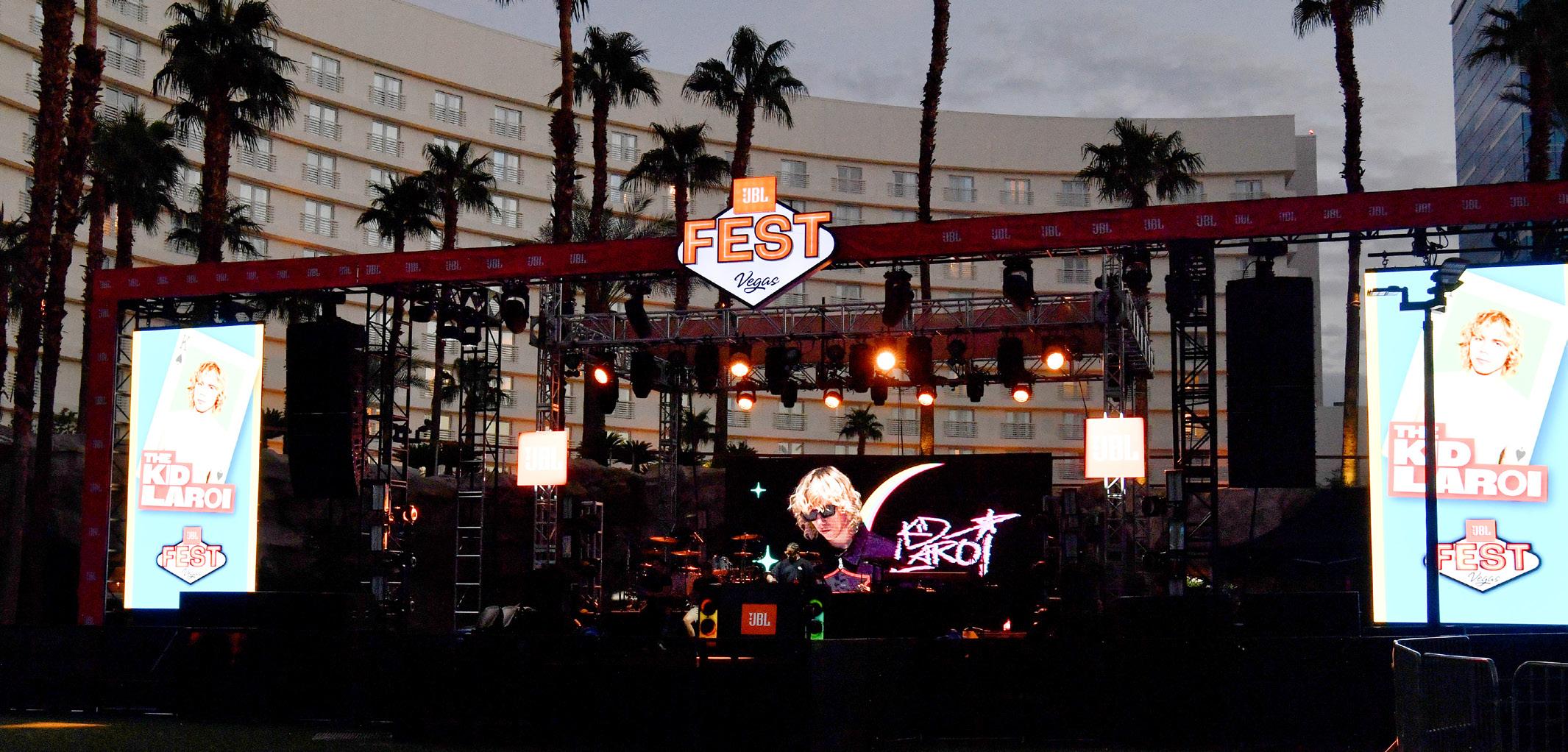
“It was a case of making sure every room, whether that be a restaurant, room or casino, has the right sound quality,” Scott explains. “And we’ve had a longstanding partnership with Harman and JBL, a really wonderful relationship. So we worked together to really spec out the whole building: the podium, the bedrooms, the suites... And it’s been a brilliant experience.”
As evening draws in, it’s time to head outside to The Lawn main stage for JBL Live! featuring The Kid Laroi and Doja Cat. Both artists deliver seamless sets with The Kid Laroi getting the audience riled up just enough for Doja Cat to send them over the edge with a powerhouse headline performance. It’s at this point that the scale of JBL Fest really does start to hit home: these guys are performing through a main stage rig centred around JBL’s A series: two flown hangs of 8 x A12s complemented by a pair of A8s as main array extension (for the VIP area), 9 x A8s for front fills, and a further 12 x A8s for side fills. And sonically, it’s sublime.
And even above the stage in the VIP area (where Headliner watches the majority of the Doja Cat show), it’s kitted out with delays which provide ample coverage: 8 x A8s, 4 x B18s, 4 x VRX 18SPs and 4 x VRX 932LAPs. Power for all these JBL Fest shows is via Crown Amplifiers: a scaterring of 3500 and 12000 Amp Racks are deployed throughout the venues.
The third day’s first highlight is an insightful masterclass led by Morgan Page. The electronic producer and DJ uses bespoke Quick Tip Cards to achieve ‘the flow state’ in front of an audience of influencers, emerging creatives and audio professionals.
These cards were born after Page started writing ‘tips’ down for music production. That led to a 900-strong spreadsheet of tips, which he then took to Twitter, randomising the tips and firing three out per day as Tweets. That gave him valuable market research, and led to the creation of a 56-card deck of Quick Tip Cards, which he is using as his mantra today to help create a song from scratch.
“These [Quick Tip] Cards are like knowledge compression,” opens Page. “Boil them down so they’re in your hand with no distractions; take them on a plane or into the studio, and get into the flow state faster.”
“It’s a wholistic process that repeats itself,” he continues, adding that to achieve that in his workflow, he created six categories [for his Quick Tip Cards], which started out in music production world, although their reach is far more wide and varied, and can help anyone in any industry, he claims.
To Page, the flow state is when you’re working in such a state that you don’t think about eating, going to the bathroom, or even time as a ‘thing’. Time slows down, in fact – as most
“I remember before I did music for a living,” Page smiles, arms wide. “I was 12 years old and doing a bit of remixing, and I got into a flow state for the first time. I remember thinking, ‘I can feel it in my blood, this is what I was born to do!’ I was up all night doing a remix in my parents’ basement. Music unlocked a flow state.”
For the next 60 minutes, Page runs through a great number of his cards and provides valuable and indeed authentic advice, some of which really resonates with me due to my music production background. The whole time he is implementing these ideas into actual creation – making a song up as he goes: he applies loops, bass lines, leads, pads, pianos, and plenty of side-chain compression “to make it pop”.
As this inspiring masterclass comes to an end, Page reiterates the importance of practice:
“You need to practice perfectly; it’s easy to get lost tinkering, making small changes, kicking the can down the road. So dive in fully, practice and fail; and it’s usually not as scary as you think. Consolidate sessions, delete files, check your batteries – get rid of the maybes. Batch them together and it becomes fun. Find a theme for each day of the week for regularity, and
The finale of JBL Fest takes place at Hakasan in the MGM Grand – Martin Garrix headlining, with support from talented Australian DJ, Tigerlily. The venue is epic, as is the sound: Groundstacks of A8s (8) and B18s (4) flanks the DJ booth, with four VTX S25 and eight VTX V20 DJ monitors.
At numerous DJ sets Headliner has seen over the years, the DJ’s hands are often seen flailing in the air celebrating more often than they’re on the DJ decks and mixer itself. Not the case here – Garrix, an accomplished music producer in his own right, of course – is more hands-on than Headliner has ever seen a DJ. He is working three elements (at least) at any one time, skilled crossfading, using mutes to great effect, and his actual mixing is quite brilliant.
What’s also remarkable about Garrix is his ability to take a popular song and make it his own – even Radiohead, and we mean a dark, piano-led Radiohead track off of Kid A. That little gem somehow makes its way into the set, and he has it pumping. It’s a real skill, being able to adapt art like that, add your magic sauce, while respecting the original. As Headliner says, he is not your typical DJ.
“GARRIX, AN ACCOMPLISHED PRODUCER, IS MORE HANDS-ON THAN HEADLINER HAS EVER SEEN A DJ.”creatives will acknowledge when they’re in their ‘zone’:
you’ll be rewarded by better flow in the process.”
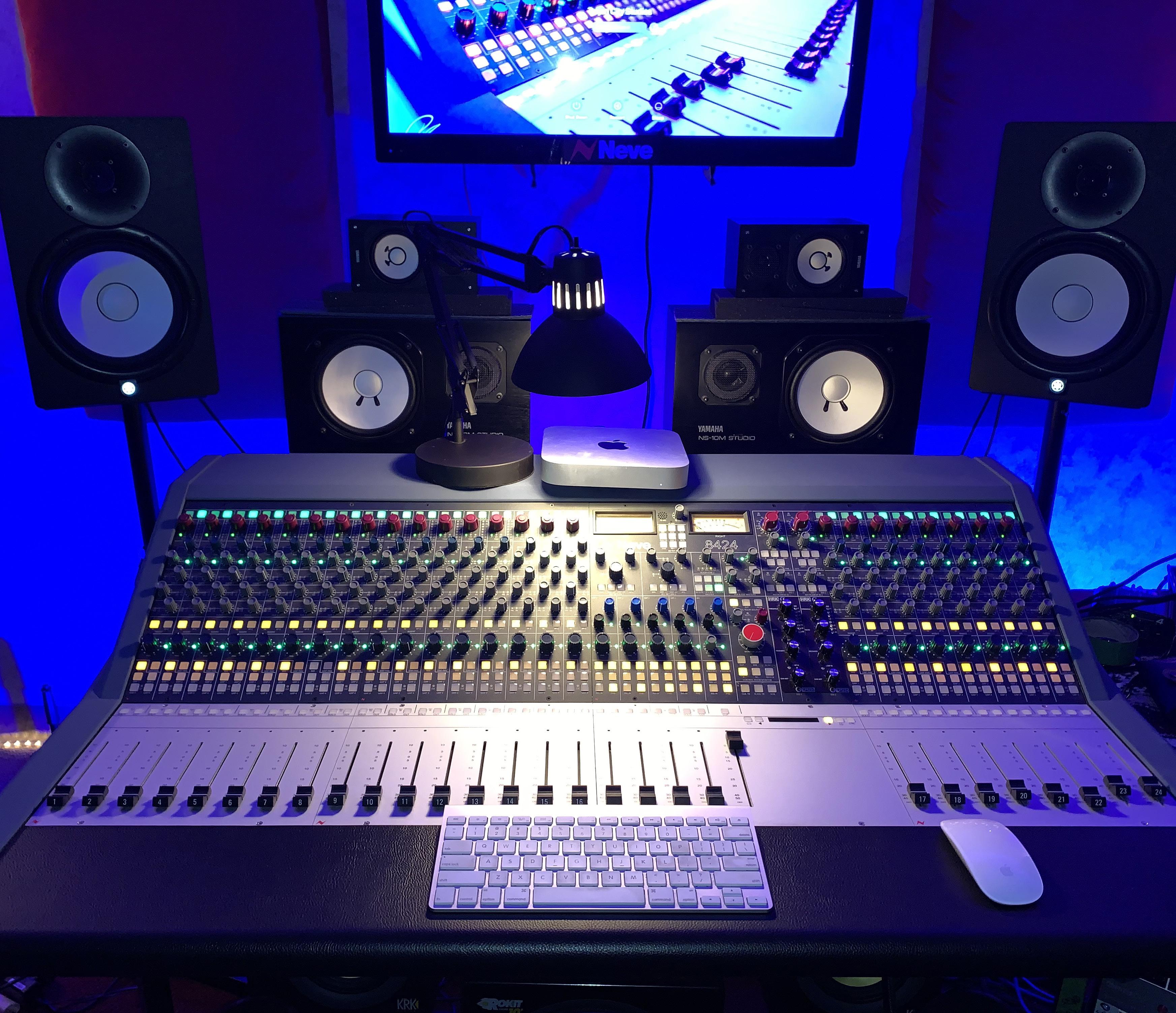
A pair of home recording enthusiasts have taken the plunge and opened a new recording studio to help local artists push boundaries with their music, thanks to the international sound of Neve.
Chris Stewart and Seth Canan combined years of experience in their local music scene in Troy, Ohio, to create Trojan City Studios, with a Neve 8424 console as the centerpiece.
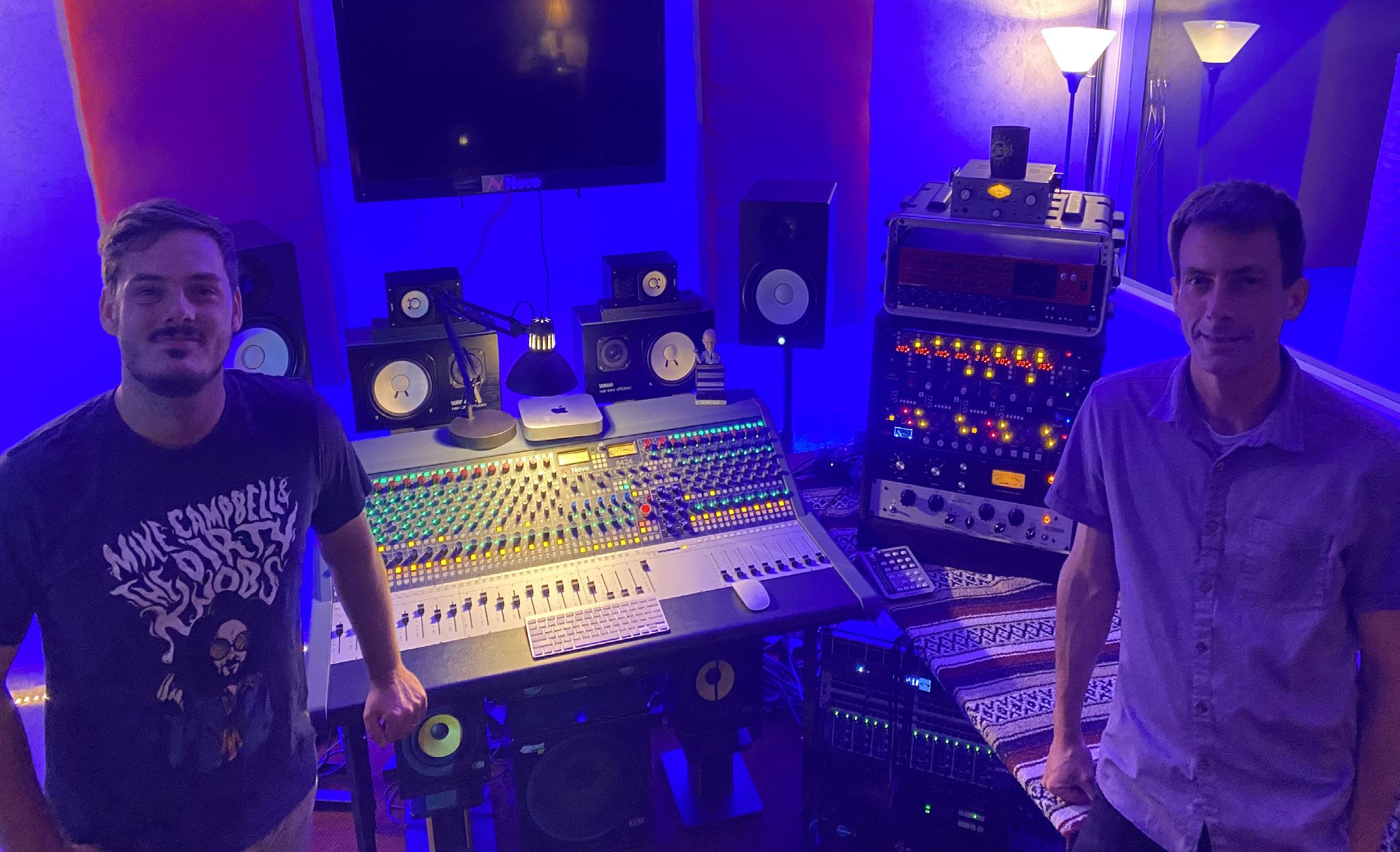
The producing duo, who had both been operating their own home studios for years, decided to team up to help promote local artists by using the best production equipment to create great new recordings.
“I approached Seth with the idea of finding a space to merge our studios and incorporate a high-quality console as the centerpiece,” Stewart explains. “We are both huge fans of the classic sound that the Neve 80 series consoles produce. However,
our budget did not support going after a vintage console.
“After narrowing down our choices, it was clear the Neve 8424 console was a perfect match for us. Being well aware of the phenomenal musicians in this area, we have made it our goal to help local artists push the boundaries with their music, and raise awareness for all the talented artists around here.”
Trojan City Studios opened in January this year, and was founded on the idea that the best way to success is enabling artists to bring their sound to life with the best gear possible.
The 8424 console’s design fits the needs of the modern hybrid studio, featuring multi-DAW automation and superior connectivity to outboard gear.
Stewart and Canan also ordered the Neve 1073OPX eight-channel
preamp, which would provide the studio with a total of 10 channels of 1073 preamp, including the two on the 8424 console.
The 1037OPX suits modern DAWbased workflows where space is at a premium, while also offering the classic 1073 sound.
Before opening the doors to Trojan City Studios, Stewart and Canan ran their first test on the 8424 and 1073OPX with a drum kit and mics, and were stunned by the sound.
“I was immediately blown away by how the huge kit sounded,” says Stewart. “Having that many 1073s at our fingertips while tracking has allowed us to get the rich, warm, Neve sound on many sources at once.”
In addition to the 1073OPX, Stewart and Canan invested in a Neve 8803 EQ – a dual-channel equalizer and filter that follows the grand tradition of Neve processors.
“We use the 8803 EQ on certain sources for tracking, but it is our go to EQ for mastering,” Stewart reveals. “The 8803 can add a healthy dose of color and texture to whatever you throw at it, or you can get a more aggressive tonal color if you need it.
“The best part is that you can get to either destination in a quick, friendly way with its specific parameters.”
Stewart and Canan have made it their goal to help local artists push the boundaries with their music, and want to raise awareness for all the talented musicians in the region the best way they know how – by producing great recordings.
The 8424 has made their workflow seamless while tracking and mixing at the studio, and one of their favorite features is the stereo width function:
“It does an incredible job of dialing in the perfect stereo spread,” says Stewart. “It is nothing short of the perfect console for us.
“Seth and I both worked primarily ‘in the box’ at our home studios. Having the 8424 has made sessions much more effective and efficient, keeping the mojo flowing for the artists we work with, and keeping the fire alive for even the longest of sessions.”
The pair have been working on a few albums for some of the area’s most notable bands, and their first published song is a cover from their upcoming 60’s/70’s era cover compilation.
Released on September 9, the reimagining of Neil Young’s Out on the Weekend by Scott Houchens + Cafe Unit has been received well on the local circuit.
Canan adds: “Scott and the boys are very talented and play so expressively and fluently with each other. The song showcases their sound and passion.
“Our Neve gear brought a muse and comfort during tracking, while bringing magic to the air of the track for our mix and master. We love the way these cover songs are turning out. The 8424 really gives us the exact classic sound we wanted on every track, while maintaining a modern level of production.
“The 8424 is truly a dream come true for us. You can clearly hear its massive sound on everything the studio has recorded so far.”
“I’m constantly moving between my personal mix room and various studios and spaces, which means the need to have absolutely pristine quality on-hand all the time is really important. With the Merging Technologies Anubis I have a pair of really powerful mic preamps, brilliant A/D and D/A converters and a perfect monitor controller all in one box. I finally have a centerpiece that I trust completely for both recording and mixing.”
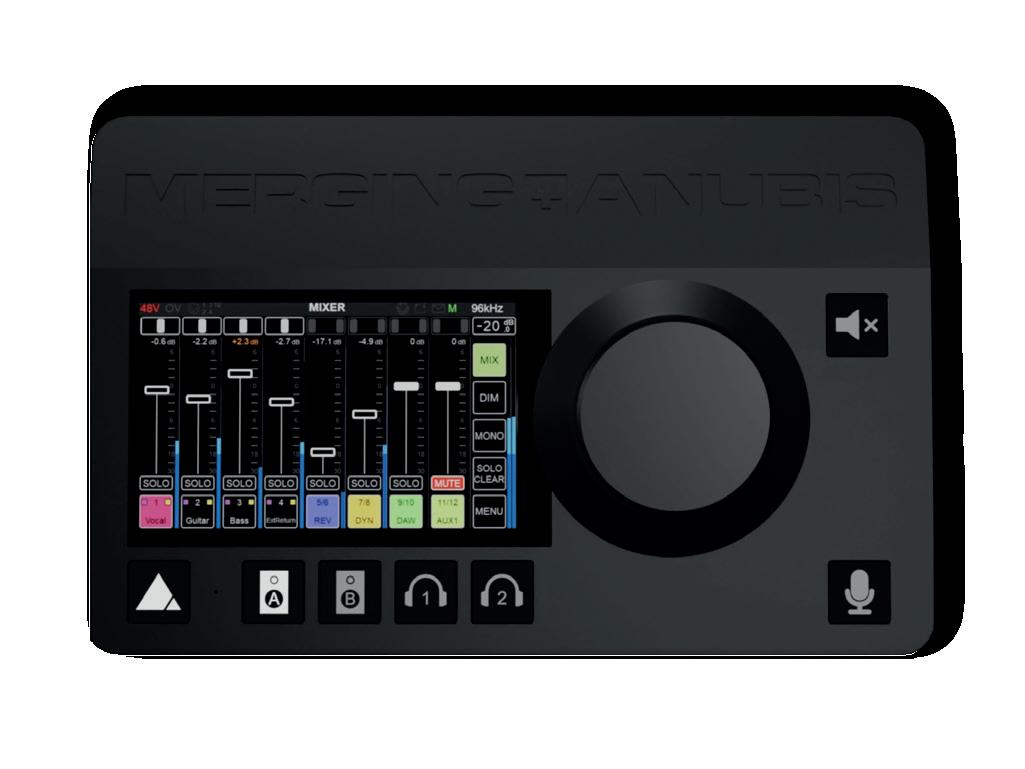
merging.com/anubis


After five years off the road, the Red Hot Chili Peppers recently embarked on a stadium tour across North America in support of the band’s 12th and 13th albums Unlimited Love and Return of the Dream Canteen, which were released on April 1, 2022, and on October 14, 2022, respectively. Headliner caught up with Clair Global engineer Toby Francis to find out about the challenges of mixing FOH for one of the world’s biggest bands, and why the d&b audiotechnik GSL and KSL systems were the perfect fit for their return…
“I’m in a little pre-production room at Max Richter’s studio in rural Oxfordshire,” he says, explaining that the composer built the facility in May 2021, trasforming a huge barn into a substantial studio space with room enough to accommodate a 24-piece string section in its live room.
“It’s a fairly impressive undertaking! Some people would say if you’re going to build a recording studio
in this day and age you must be completely mad, but it’s worked out really well. It’s got a full 7.1.4 system and the control room has ATC monitoring everywhere and a modular Neve 5088 console, so he hasn’t done it by halves! Coulson recently mixed Richter’s new take of Vivaldi’s The Four Seasons on the studio’s 5088, and made use of the space to accommodate an orchestra.

“After the band changed guitar players, which changed the dynamic within the band, and a prolonged process with management changing as well, it became a four-year process to satisfy band requirements,” begins Francis. “The four band members have very dynamic personalities on stage and are adamant about what their show involves and wanting the best sound possible, so discussions took place prior to rehearsals. What they hear and feel from the d&b GSL and KSL system on stage, and how clean it is, drove everyone’s attention. They are thrilled at how it sounds: the coverage, and everything else about it. Making the band truly happy
is the goal. They used a separate manufacturer’s PA for one show, and it was a struggle. The band is a Clair Global corporate account, and they require global support from one company using the same systems, so Eighth Day Sound is supporting the tour globally.”
The PA configuration for the tour was 20 GSL8s per side for mains and 16+4 (GSL8/12) for side fills, 30 SL-SUBs (10 per side flown), and 10 on the ground as a horizontal subwoofer array, with 10 Y10P point sources for front fills. Delays were in four positions, with 12 KSL8s each position. The system was powered with 82 D80 amplifiers, while

all system alignment and optimization was handled within the D80 amps using d&b R1 Remote software, and all system design and prediction was accomplished using d&b ArrayCalc software.
“The band does not like to hear or feel the PA system during the show; they find it distracting and it interferes with their performance,” Francis continues. “GSL/KSL allows me to accommodate the band’s needs without altering the way the PA needs to sound for the audience. This tour is all large venues, either baseball, football, or soccer stadiums, as well as large open fields. Stadiums are challenging due to their size, odd shapes, glassed in boxes, score boards and large video screens which leads to a very reverberated environment to mix a show in. GSL/ KSL being very directional, with very tightly controlled patterns and having Array Processing helps avoid creating any extra reflections, making for a clearer sound for the audience. The system works amazingly well in large venues.”
“I have used ArrayProcessing in stadiums and other PA configurations with delay systems since it was introduced in summer of 2015,” adds Ville Kauhanen, system engineer. “ArrayProcessing has been the biggest change I personally have experienced in large speaker system design and optimization after I was introduced to acoustic measurements. For me personally, the uniformity of the coverage area and day-to-day consistency are key elements for my work and this software really helps me achieve these parameters. On this tour the venues have been very different, and the only common denominator has been the large audience capacity. ArrayProcessing and especially with the SL-Series takes the control of the coverage and uniformity of tonality within the wanted coverage to a whole new level. It is also a very important tool for me when I need to combine systems like main PA to delays to properly control the overlap areas in the x-axis.”
The Toronto Roger Centre was cited as a recent example of how the GSL and KSL systems came through with positive results.
“Not having mixed on the two systems but having used the J-Series at festival shows, I was shocked at how clear the GSL and KSL sounded,” says Francis. “All of our shows are stadiums. We use delays on all shows, so the ArrayProcessing really made the difference and less difficult to cover every seat in the house. I’m now a true believer in this PA system. Ville Kauhanen is incredibly good at what
he does…. the sound is consistent everywhere from ArrayProcessing, even where sound places are difficult. Big stadiums that have house PA makes it hard to time the systems together, so we rarely use house PA. The back corners of Allegiant Stadium in Las Vegas, for example, was particularly clear thanks to ArrayProcessing.”
One of the band members was adamant about analog technology being deployed, so Francis mixed on a Yamaha PM5000 analogue console. “Features on today’s digital consoles give
you features that were never available on analog consoles: endless amounts of busses… automated everything.”
Francis adds that the band are ‘raving’ about how the system sounds, which, he says, “makes him a popular guy. Even engineers and half of the band’s friends that are record producers have been overly complimentary,” he concludes. “Mike Dean, producer for Ye and Travis Scott was blown away when he attended the Atlanta show.”
“THE BAND DOES NOT LIKE TO HEAR OR FEEL THE PA SYSTEM DURING THE SHOW; THEY FIND IT DISTRACTING AND IT INTERFERES WITH THEIR PERFORMANCE.”
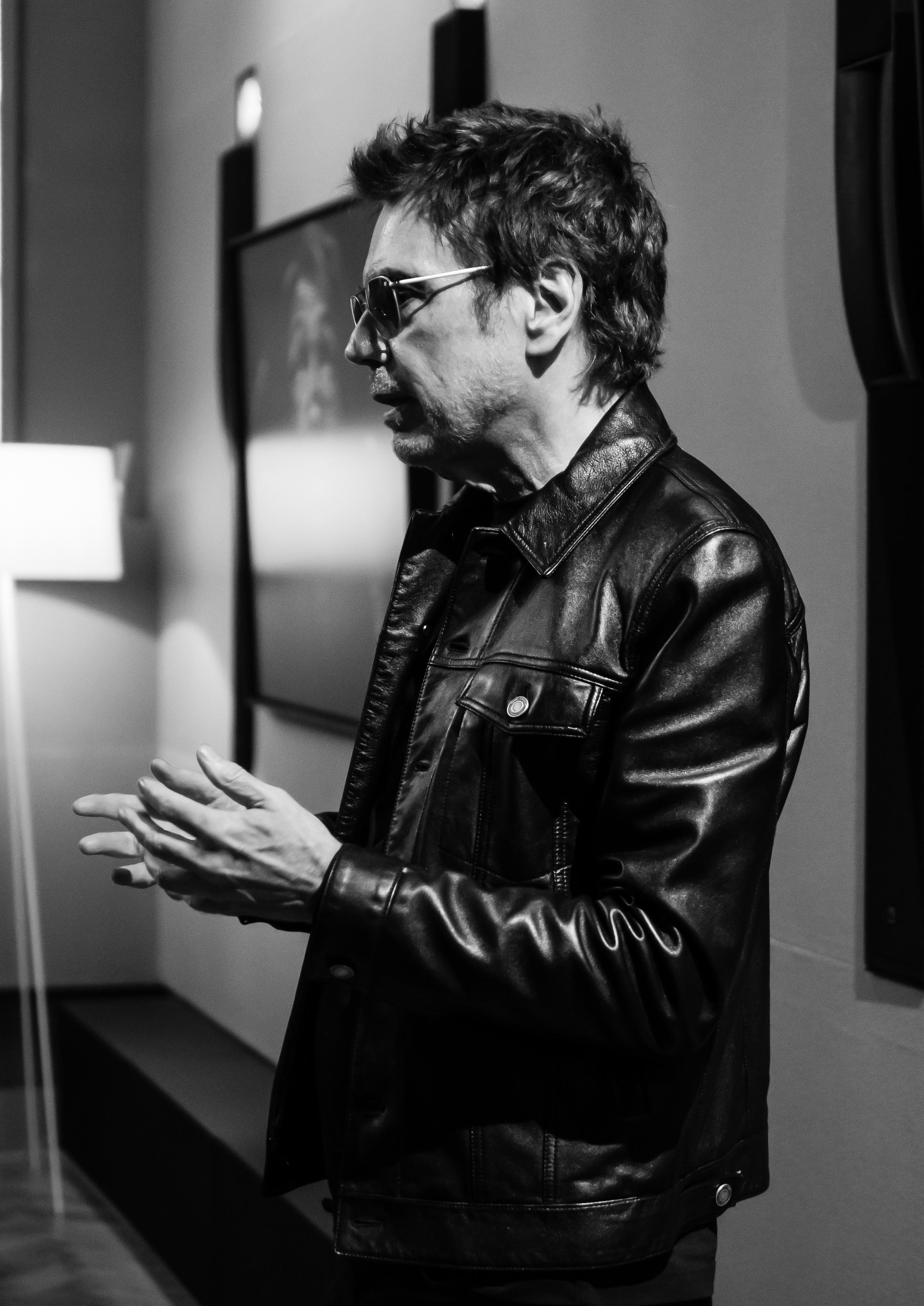
Electronic music pioneer Jean-Michel Jarre recently participated in two intimate spatial audio playback sessions – hosted by L-Acoustics – of his latest album Oxymore, answering questions on the record itself and the role immersive audio has to play in the future of recorded music. Headliner rounds up some of the unique insights offered by one of the industry’s great innovators…
One of his most ambitious musical projects to date, Oxymore was conceived as an immersive piece that can be listened to in 3D spatial, binaural and stereo formats. Made using L-Acoustics’ L-ISA Studio spatial audio mixing software – and mixed by Hervé Déjardin - the album was inspired by fellow French electronic music icon Pierre Henry, with Jarre describing it as “an extremely conceptual work”. Henry was perhaps best known as a pioneer of ‘musique concrète’ – electronic music based on the manipulation of sampled sound. Jarre and Henry had planned to collaborate on Jarre’s Electronica album, but Henry sadly passed away before the project was complete.
However, following his death, Henry’s widow passed on the stems that had been made in preparation for the collaboration to Jarre, with those same stems being put to use on the material that would make up Oxymore
Here, we delve inside this immersive auditory experience and serve up some of Jarre’s most insightful comments from those from those Oxymore L-Acoustics listening parties…
How important was it to you that this record work not only in settings like this, but also in club environments?
It’s an interesting question because I never thought of that as a priority. The big challenge is to get the dynamics right - the bass and drums and all the low-mids. By exploring this whole issue, I thought that it would be interesting to start from the basics of musique concrète - electronic music being quite noisy and abstract - and going to a more groovy, club feel; going from dark to something more festive or more dynamic. And I wanted to play with this idea of oxymorons and the contrast between some darker and brighter parts.
Musically, with Oxymore I also tried to cover the different periods of electronic music. In electro at the moment, lots of people are influenced by the ‘80s. I think this album is not ‘80s at all. It’s more ‘50s and, I hope, contemporary. I tried to cover all these different eras. For instance, with the track Brutalism, I really thought about the beginning of Burning Techno, a big bang when Berlin techno felt linked to the fall of the Berlin Wall. So, there is this brutal, violent, dark, dynamic maelstrom of sounds. Every track is, in a way, linked to a period of electronic music, for me.
How different is the process of composing today, compared to when you started your career?
For centuries, our relationship with music has been a focal one. When you are composing for a symphonic orchestra, you visualize the symphonic orchestra in front of you with strings and things and whatever. And after that, the clever guys in the middle of the 20th century invented stereo, and stereo is unusual. Stereo doesn’t exist. It is fake, it doesn’t exist in nature. When I am talking to you, I’m talking in mono; a car passing by is in mono, and it’s the space around us and the human ears which are actually creating the perspective, audio-wise. Ironically, technology these days allows us to go back to a natural
way of listening to sounds, and I’m absolutely convinced that in the very near future, this is the way we’re going to be listening to music because of the development of metaverse and the virtual worlds of VR and XR. I think young generations and beginners in music are very lucky to live today. I’m saying this because it’s not something that a lot of people have a tendency to say – it’s usually that yesterday was better and tomorrow is going to be worse. That is not the case. The fact that suddenly you can explore music composition in a totally different way is very exciting.
What are your thoughts on what can be done musically in the metaverse?
I have always been interested in VR, and Covid was an accelerator for all these VR possibilities. Of course, when we are talking about immersive and virtual worlds, everybody is thinking about visuals, but we forget that the sense in human beings that is most sensitive to immersion is hearing. The visual field is 140 degrees, the audio one is 360 degrees. I think that the development of all these technologies for musicians is a great opportunity.
Would you advise new artists to start thinking about making music in stereo or spatial aspects?
My advice for young beginners today would be to start straight away with immersive sounds. It’s like if you were asking me about stereo, do you think it would be important to start with mono? What’s great for young beginners today is that they are able to open doors on virgin territories. I would recommend they explore all these new ways of dealing with sounds and create their own styles. I think that hip-hop and the rock of the future will be very interesting and it’s going to generate totally new styles of music. I’m absolutely convinced of that.
What are the biggest challenges you face when composing music in this way?
It’s totally different to composing in a traditional way. I believe the fact that
you can deal with the space around you makes the creative experience totally different, because you can play with audio objects and place them all around you. I wanted to go beyond stereo; we need to be in the middle of the orchestra. We also have to think differently in terms of where to play this kind of 360 degrees mix. That, of course, is challenging. I want to experiment with how this music can be played live.
What are the biggest challenges you face when composing music in this way?
It’s totally different to composing in a traditional way. I believe the fact that you can deal with the space around you makes the creative experience totally different, because you can play with audio objects and place them all around you. I wanted to go beyond stereo; we need to be in the middle of the orchestra. We also have to think differently in terms of where to play this kind of 360 degrees mix. That, of course, is challenging. I want to experiment with how this music can be played live.
What is it that still drives you as a music creator?
It’s quite mysterious. It can be a case of being curious, and I think that as long as your health and your body is carrying you, you can go forever. It’s a big privilege compared to any other job in a sense. And it’s a big privilege to be able to share your music with people. For people to be interested in what you do is something unique. You should never forget that.
I don’t want to be too philosophical about it, but I’m always a bit disappointed when I see some artists saying, ‘Yes, I did this, but I don’t want to do interviews. I don’t want to talk to people’. I think it’s a huge privilege.



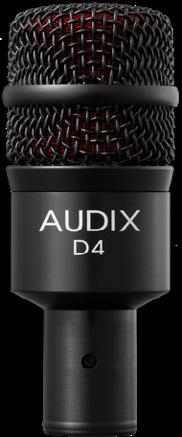
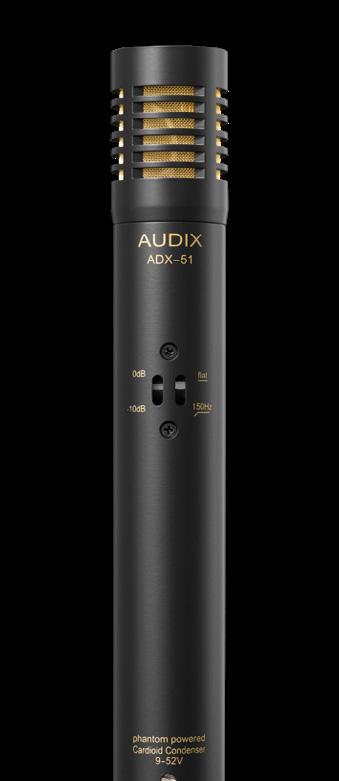
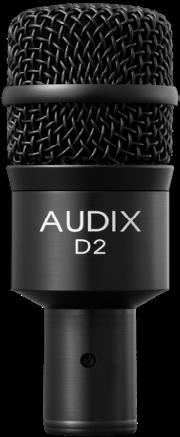

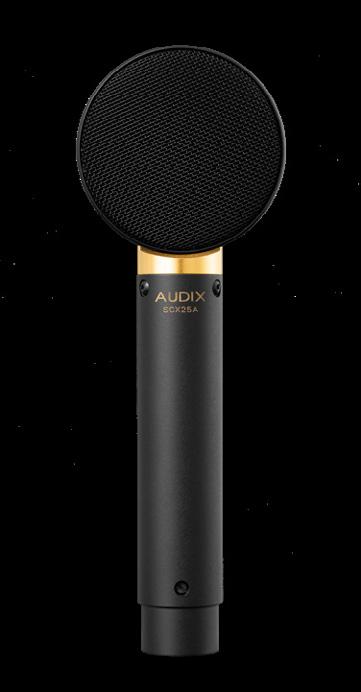
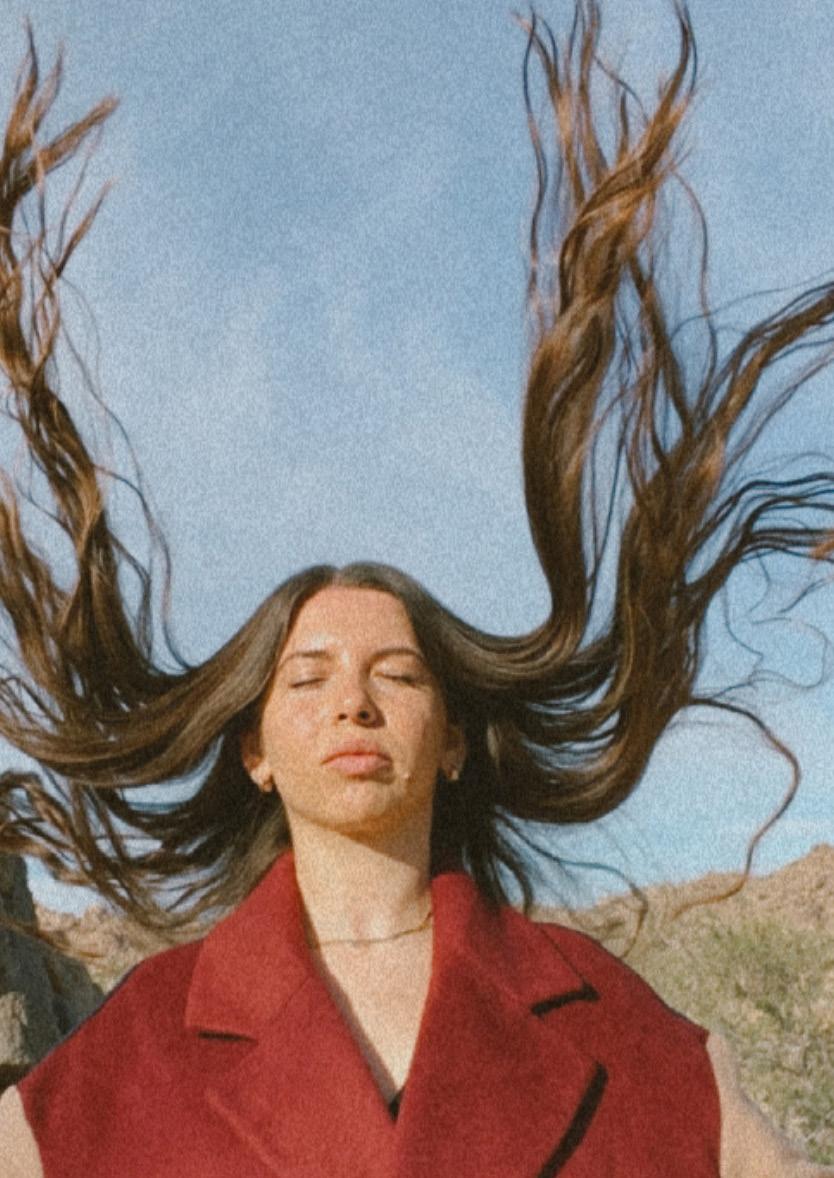
Last month, harpist and electronic artist Lara Somogyi released her debut record !, a sonic exploration of the various ways the harp can be used to create densely textured, genre-defying and deeply immersive soundscapes. Here, she talks about pushing musical boundaries, chance encounters with Brian Eno and working with everyone from Hans Zimmer to Anderson .Paak…
by DANGUM B ELWe may only be chatting over Zoom, but there is an almost palpable sense of joy and enthusiasm radiating through the screen when Lara Somogyi greets Headliner from her LA studio. The prodigiously talented harpist has just released her debut album ! (pronounced exclamation), a spellbinding collection of hypnotic, beautifully textured soundscapes that place the harp front and center while simultaneously pushing and pulling its sonic extremities to their limits by way of an armful of guitar pedals and synthesizers. The result is not so much a love letter to her instrument, but a tome written in its honor. Almost a decade in the making, it represents everything her career has been about to this point.
“I’m so happy to have this record out in the world; it’s been a real journey of a lot of exploration and love,” a beaming Somogyi says as we join her. “It’s been about 10 years in terms
of exploring some of the sonic tools that I’ve been using and how I’ve been developing my sound. I come from a really traditional classical background, which led me to the Royal Academy of Music in London, where I was introduced to many different avenues that a harp could be placed in. I was captivated with where you can take this instrument. The harp is such a huge, luscious work of art and there are so many ways you can use it and create different sounds. So that exploration is where I started developing my own sound and taking it into a different realm.”
Words like ‘exploration’ and ‘development’ are spoken a lot over the course of our conversation, the sense of intrigue and experimentation that fuelled not just ! but everything she has worked on to date evidently undimmed after drawing a line under her first full length record. As she
explains, the very notion of making an album has been a fluid one, with no delineated beginning and end points.
“The record came from a love and obsession with creating things on the instrument that gave me a sense of joy and freedom,” she says. “I was getting asked to play in different ways for different composers and projects, and apart from that I’d be exploring different sounds myself and figuring out what brings me the most joy in how I approach the instrument. So, after just sitting with myself and spending a lot of time in the studio, I would have moments where I felt ‘this is a piece’ and I’d start developing it from there. And then I would reach a point where I felt I had a body of work that really expressed what I enjoy most in the instrument.”
The freedom she describes is certainly one of the album’s defining characteristics, its shapeshifting, genre-defying qualities standing as testament to Somogyi’s ability to bring such an open approach to her craft.
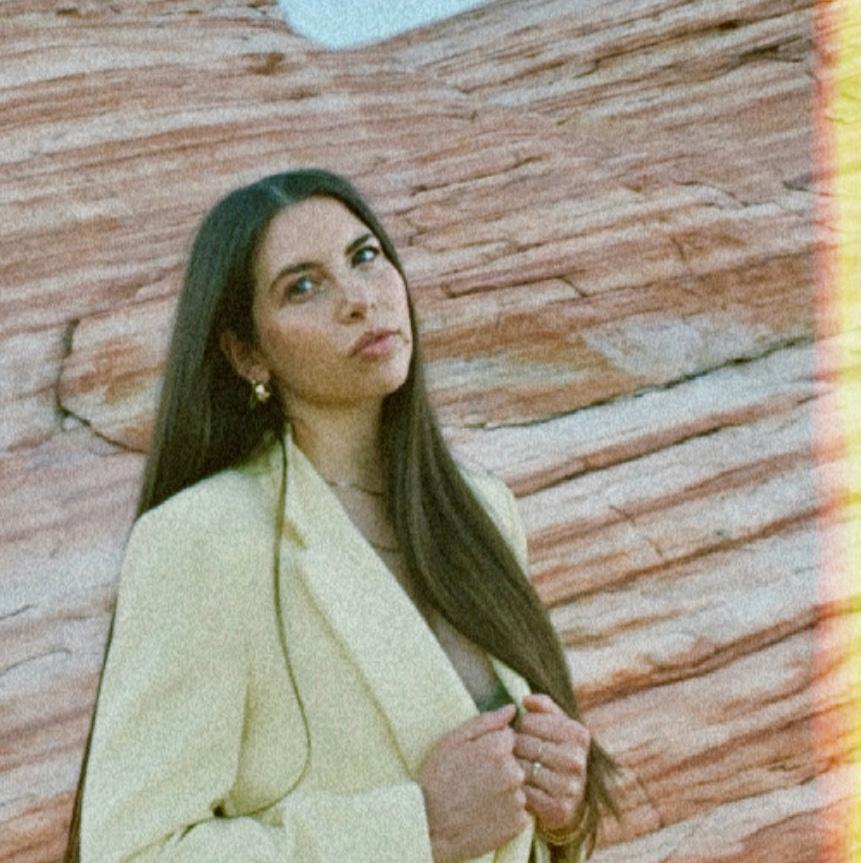
“I find great comfort in sonic textures and making the harp feel atmospheric,” she elaborates. “It already has such a warm and lush sound, but combining it with things like electronics and pedal effects really shaped how I was playing it. I like exploring the harp through things like endless reverb pedals and glitch
effects - it was structured by an array of guitar effects pedals that I like to combine in different configurations. It’s a surprise every time.”
So what were some of the major influences that helped shape the record?
“Many things,” she says. “So many sonic inspirations, but I also take a lot of inspiration from different textures and shapes in nature. I come from such a classical background and much of my previous work was really rooted in film, so a lot of my inspiration comes from seeing how
emotion plays into telling a story and how you can play something to a picture or film and how that impacts you. I love artists like Ólafur Arnalds, Nils Frahm, Jon Hopkins, Bonobo. There were a lot of different influences. And I just think that within this whole world of sonic exploration the exterior is reflected in my artwork, like the desert. I found a lot of inspiration from the desert because of how expansive it is. I think of it as nature’s modern art gallery because there are so many different fragments and shapes that you don’t find anywhere else.”
Given the amount of time Somogyi spent working on the music that would eventually form !, Somogyi says she found it difficult to determine when to draw a line beneath the material.
“There are so many different sounds you can create on the instrument, so I had a hard time saying, ‘this is it’,” she recalls. “There were so many things I wanted to develop, and you keep asking yourself if this could be a track or something that could make its way onto the album. And there is a lot of music and ideas that will come out eventually on future releases. It was challenging finalizing this body of work, but I’m really happy with it. It’s a true sonic statement of how I feel about the beauty of the instrument.”
Somogyi’s appreciation not just for the harp, but for the exploratory manner in which she uses it, can be traced back to her studies at London’s Royal Academy of Music. It was here that she first began to see first-hand the various ways in which the instrument could be utilized beyond the boundaries of her classical grounding.
“It was challenging and inspiring,” she states. “I was so fortunate to be exposed to so many different harpists in the city that were playing different types of music. There was so much to absorb and endless opportunities to put your own stamp on how you wanted to play the harp.
“And it was really magical because you would run into artists you really admired. It was a really formative time as it opened my eyes to a lot of different worlds that I hadn’t been exposed to due to my classical mindset. I ran into people like Brian Eno, and I’d been obsessed with his Music For Airports. I had some great interactions with him that were so interesting. Each time I ran into him I was so attentive, hanging on his every word. He would walk in and have something he wanted to artistically show whoever was in the room.
“One day he brought in a rose and was like ‘come round, come round’. And he’d say ‘come and look at it outside, have you ever seen this color before’? Unbeknownst to him it was really influential to me because it gave me a different way to interpret being present and noticing things I wasn’t conditioned to notice in everyday life. One day he brought in a perfume and said, ‘smell this. What does it smell like?’ It was interesting to experience the sensory exposure he would bring.”
It was also in London that Somogyi would discover her love of working with artists outside of the traditional realm.
“Things like working with Rufus Wainwright and Robbie Williams as a session player was great for looking at the different approaches you could
take to playing the instrument. Then coming to L.A, meeting different composers and artists, would lead to different pieces of work. My first experience with Hans Zimmer was Blue Planet II, where I was able to come in and experiment with a lot of different effects and see how that translated. I met Simon Green from Bonobo at a Ólafur Arnalds show. Anderson .Paak was just through a friend who said he needed a harpist for his show. Then working with him brought different sonic elements to the harp. It’s always such a thrill to learn from them too and see how they create their art. I feel very lucky.”
If the evident excitement Somogyi feels at releasing her first album is anything to go by, it seems unlikely we’ll be waiting quite so long for album number two.
POWERED BY“IT’S A TRUE SONIC STATEMENT OF HOW I FEEL ABOUT THE BEAUTY OF THE INSTRUMENT.”

The long-standing relationship between Capital Sound (part of the Solotech UK Group) and the major week-long Hungarian Sziget Festival resumed this year after a two-year hiatus.
The six-day event on the Danube — situated on the remote Hajógyári Island (Óbudai-sziget), north of Budapest — draws between 500,000 - 600,000 visitors, and always pulls a major list of global superstars across its stages. This year was no exception, with Dua Lipa, Arctic Monkeys, Stromae, Kings of Leon, Lewis Capaldi, Tame Impala, Nina Kravitz and Sam Fender among the many familiar faces…
As befits one of Europe’s largest musical and cultural festivals, the technical infrastructure was first class, and included Martin Audio’s multi award-winning MLA loudspeaker array, which has been a regular and reassuring sight for audiences and visiting sound crews alike on the main stage since 2015.
According to Robin Conway, Solotech senior technical advisor, the main stage sound design continues to evolve as the production team strives for increased perfection, once again working alongside Hungarian audio crew chief and system designer, Marci Mezei, and local Martin Audio partners, BG Event.
They were fortunate to be able to benefit once again from the huge experience of Mezei, who has been involved with Sziget since 2001, initially starting on the smallest Pesti Est stage, before working up to the main stage since 2004. He ensured the partnership with Solotech once again produced a slick outcome.
BG Event provided auxiliary support for an inventory which included nearly 200 enclosures deployed
on the main stage alone, along with rigging, cabling, racks, chain hoists and motor control. BG also provided additional Merlin network management systems (and distro) to support their MLA family boxes.
The main PA comprised 17 MLA per side, with a single MLD Downfill at the base of each hang. Side fills were an equally symmetrical 15 MLA (plus single MLD Downfill) on each flank — all underpinned by 42 MLX subwoofers (in 14 x 3-high cardioid stacks). Front fills consisted of six MLA Compact (set on alternative sub stacks) and infill wing coverage was provided by 12 MLA Compact, set in 4 x 3 high stacks.
FOH delays comprised four further MLA Compact (left and right) while four additional delay positions were set further down the field, each populated by hangs of either eight or nine MLA (with an MLD Downfill in all cases), and a pair of MLX to handle the low frequencies. This
provided an aggregated cabinet count of 182 units servicing the main stage.
In addition, Solotech provided all system drive and control, complete stage systems, console and RF.
Ironically, while Solotech has now perfected the onsite design over the years — and getting inventory on and off the island is a well-drilled procedure — the challenges they faced were mostly logistical in a post-Brexit, post-Covid world, as Conway explained:
“It was always going to be a challenge working in Europe post Brexit and the pandemic, with inflated costs of shipping, carnet etc,” he says. “However the production team were confident in our ability to deliver the festival audio and to deal with any additions. We have a great relationship and hope it will continue beyond 2022.”
“The Party Arena was once again a success this year and we received so much positive feedback.”
MLA again found favor with many of the visiting sound engineers. According to Mezei, many commented directly to him about the quality of the PA and the enjoyable experience it gave them, including Sigrid’s FOH sound man Jan Halsvik and Dua Lipa’s Will Nicholson,
while techs from Tame Impala and Stromae voiced similar approval.
Sziget is only one of three major Hungarian festivals serviced by Solotech and BG Event, with Volt and Balaton Festivals, managed by the same production team, taking
place earlier in the summer. “The relationship works well and we’re able to limit our shipping to a single Artic trailer from the UK for these shows,” adds Conway. “The system rolls from Volt to Balaton and then returns home before re-prep for Sziget later in the summer.”

In addition to the main stage, other stages equipped with Martin Audio systems provided by BG Event included the Samsung Colosseum and TicketSwap Party Arena.
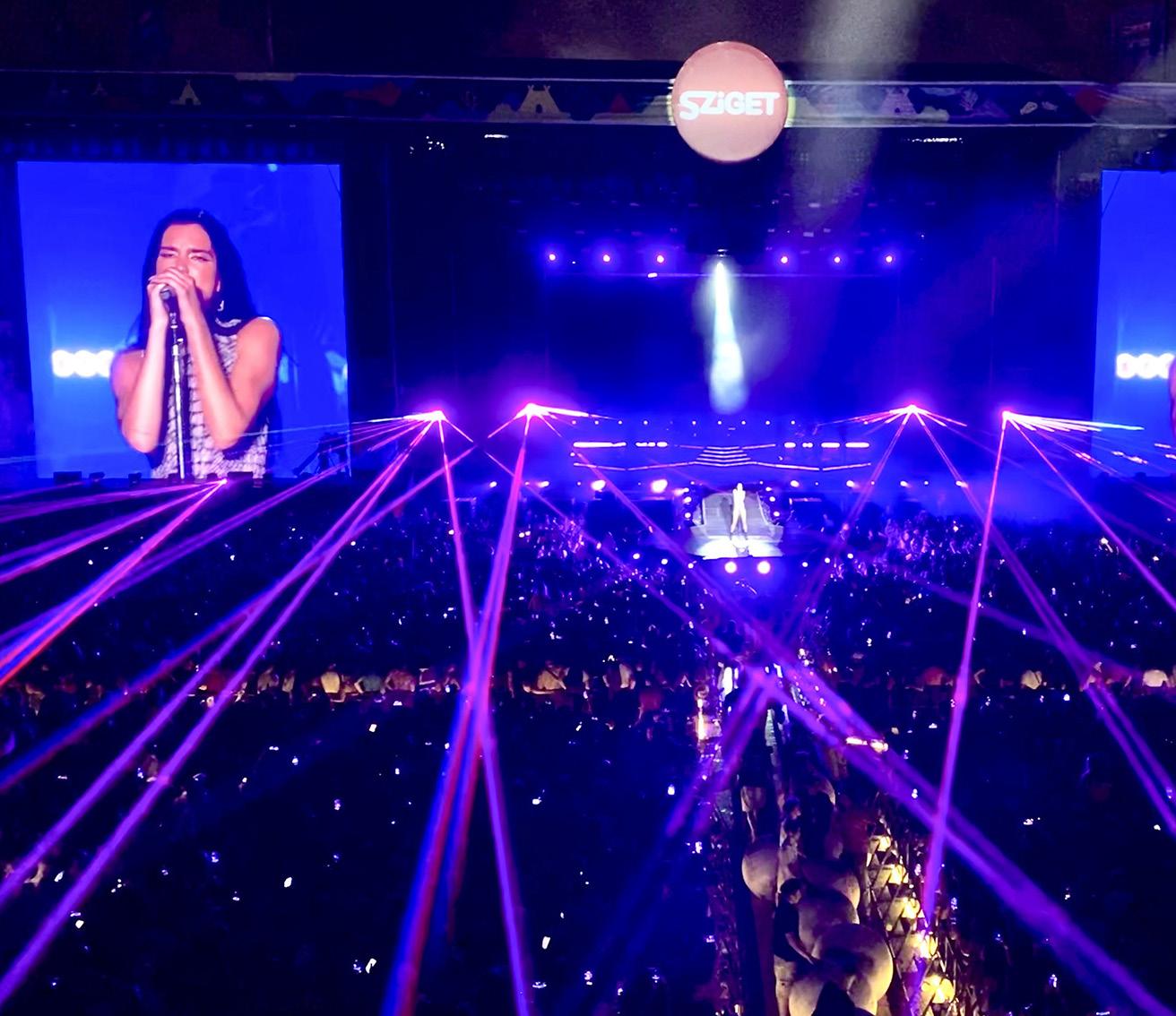
On the former, this included 12 MLA Compact in two hangs of six, MLA Mini, 16 WSX subs and 10 MLA Compact at the delay position. For DJ monitoring they supplied four XE500 and a pair of Blackline S18+. Artists appearing included Ben Klock, Denis Sulta & Mella Dee, Eelke Kleij, Paula Temple, Honey Dijon, John Talabot, Joris Voorn, Kölsch, La Fleur, Matador, Seth Troxle, Sasha, Zioner and Joone.
For the Party Arena, where Steve Aoki was among a cast of headline DJs, they provided 18 W8L Longbow
in two hangs of nine enclosures, six W8LM, 30 SX218 subwoofers, 12 CDD-Live12 and eight WPS with iKon amps. Delay One featured a further 10 W8L Longbow and the second delay point was populated by 12 W8LC. Four XE500 featured among the DJ monitors.
“The Party Arena was once again a success this year and we received so much positive feedback,” stated BG Event’s Szentiványi Balázs. “The old Longbow system was ideal for the electronic music genre, and the cabinets’ large format, and the additional speakers deployed, really did their job.”

Event technology supplier Wilhelm & Willhalm recently provided a flagship CODA Audio AiRAY system for a gala evening at Munich’s Olympic Hall…
The 1972 Summer Olympic Games shaped the Bavarian capital of Munich like no other event. By way of commemoration, the city hosted a series of events this summer to celebrate the 50th Anniversary of their staging.
The celebrations began with a gala evening held inside the iconic Olympic Hall, designed by the architects Behnisch & Partner, and used for the last half century as a venue for premier sporting and entertainment events. With a capacity of 15,500, the legacy arena hosts a
who’s who of global superstars from the worlds of pop, rock, jazz and classical music, and was the natural home for such a prestigious event.
Munich’s Lord Mayor, Dieter Reiter, welcomed star guests and guests of honor from across the spectrum of the games, including Olympic high jump champion Ulrike NasseMeyfahrt, javelin gold medallist Klaus Wolfermann and IOC president Thomas Bach.
Experienced event technology specialist Wilhelm and Willhalm of Aschheim (near Munich) was entrusted with the technical implementation of
the event, including all audio provision. The DPVT-certified full service provider chose a CODA Audio system to best meet the requirements of the show.

“A full-range frequency reproduction through a flown main system was required. It had to be taken into account that the visual axes for the video screens were not impaired,” says Tobias Förster, who was in charge of sound production.
The challenge to deliver a sufficiently powerful yet discreet system was, according to Förster, made for CODA:
“The sound reproduction is absolutely neutral and natural, and the ratio of size to performance is unrivaled in the industry,” he adds. “This advantage not only allows an unobstructed view of the stage and screens but adds economic value - anyone who does a production with CODA Audio needs significantly less truck space and therefore reduces costs accordingly.”
At the Olympic Hall, Wilhelm & Willhalm deployed a system based around CODA Audio’s flagship dual 12-inch line array system AiRAY, with two main hangs of 12 units used in combination with four SCP sensor controlled subwoofers. Six N-RAY each were used for front and side fills with two CUE FOUR stage monitors completing a system that was driven by three CODA Audio LINUS T-RACKS, each consisting of three LINUS 14D amplifiers.
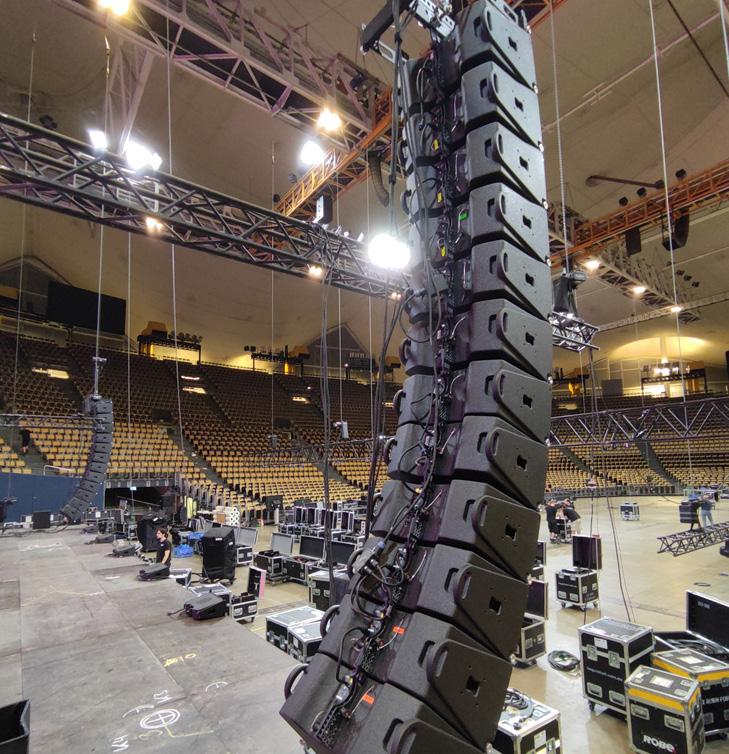
“Wilhelm & Willhalm are doing some fantastic work with CODA systems across Germany,” concludes Ton Groen, managing director for CODA Audio Deutschland. “We’re very proud to see AiRAY being deployed for what was a very important event in a truly iconic venue.”
CODAAUDIO.COM




After breakthrough and unexpected TV-propelled success in the early 2000s, UK band Turin Brakes are back with their ninth studio album. The band’s lead singer, Olly Knights, insists they’ve been winging it from the start…
Knights is in a caravan in the middle of a field on the UK’s Essex coast, and he’s breaking up. Think solar power, dodgy wifi – and intermittent phone signal. Four call backs later, and he’s found a spot outside where his phone just about works. “It’s lovely, but it’s super limited,” he sighs, adjusting his position slightly to make sure the signal holds this time. “But I actually love it… until of course I suddenly
have to do any promo. Then it’s a bit useless.”
He’s battling against bad phone signal today to talk about Turin Brakes’ ninth studio album, WideEyed Nowhere, summer festivals and the band’s current UK tour. Formed by childhood friends Knights and Gale Paridjanian in the late ‘90s after initially bonding over Chuck Berry
and the Johnny B. Goode scene from Back To The Future, Turin Brakes (“it was one of those curious names that hopefully pulls people in, rather than puts them off”) is a result of one of the duo’s experimental tapes being listened to by chance by a friend, who just so happened to be starting a small record label.
“We truly hadn’t considered the idea of being a band, so we quickly made up a name and pretended that it had been the plan all along, and we just haven’t stopped. It’s been 23 years and that is literally all we’ve done. We’ve been winging it totally,” he laughs.
The band (which is today made up of Knights, Paridjanian, and long-term collaborators Rob Allum and Eddie Myer) released their first album, The Optimist LP in 2001, including their first single to make a ripple on the charts, Underdog (Save Me), which peaked at number 39 in the UK.
“Underdog turned into the first big crossover moment for us. It was an amazing thing because we had this slightly half baked fantasy of, ‘Wouldn’t it be cool to hear a proper guitar solo on Radio 1?’ And sure enough, it got playlisted, and we’d high five every time it happened, because we couldn’t believe it! There were a lot of those moments in the early days. It felt like we got very, very lucky with our timing.”
Their big break wouldn’t come until 2003, when their single Pain Killer (Summer Rain) became their biggest hit to date, reaching number five in the UK singles chart. The song’s lyrics have become something of an in-joke over the years, with
fans speculating as to the hidden meanings behind the sometimes abstract, sometimes very literal lyrics. Knights isn’t about to spoil the fun after 19 years.
“We definitely had a lot of fun over the years by not pinning anything down,” he says, still enjoying the joke. “I’m a big David Lynch fan, and he makes a real point of never fully explaining what things are, and I kind of agree with him. I think once you’ve made the piece of work, it really doesn’t matter what your personal function in it all was. It’s got to be its own thing, and if it’s ambiguous and then inspires weird ideas and images in people’s heads – and even a bit of confusion – then great! My favorite songs and art always does that; it’s always curious and ambiguous, but hopefully, quite delightful and you keep coming back to it. So, yeah, we always stuck to that one.”
It wouldn’t be too long before a further boost in visibility came in an unexpected form: American teen drama The O.C. first aired in 2003, and quickly became a pop culture phenomenon all over the world. The soundtrack is still regarded as a standout feature of the series in its own right – capturing the indie zeitgeist of the show’s affluent and angsty main characters and changing the careers of many artists
that featured on it. Turin Brakes’ Rain City was used prominently in a pivotal scene in season one. Knights admits he wasn’t exactly the target demographic for The O.C. at the time, but can’t deny the effect it had on the band’s trajectory:
“We were just that little bit older,” he says, “but I do remember The O.C. really well – it was a big show! Weirdly, it’s played a lot now; I’ve seen it on TV again recently, so I’m always keeping half an ear out for our song. It was so lovely – we still talk about it. It was on such a big scene and it was really heavily used. You could see that the filmmakers and the people behind that show really seemed to get it and appreciated that song. All I can say is, it’s like catching a gentle wave, and then it speeds everything up. You feel this force that’s bigger than you, pushing you along for a while. Being in a band is bloody hard work. Most of the time you’re having to get up and drive it yourself, and when something else drives it for a while, it’s just lovely. Like surfing a wave, you’ve got to enjoy that feeling when it’s happening. The fact that people still talk about it now…” he trails off. “I mean, it’s a really low-fi little homemade song that has no business having as many fans as it does, but that pushed it into this other realm.”
“WE DEFINITELY HAD A LOT OF FUN OVER THE YEARS BY NOT PINNING ANYTHING DOWN.”

Turning our attention back to the present day, the band’s new album, Wide-Eyed Nowhere was recorded at Knights’ garden studio over the summer of 2021, which allowed the band to take their time, being far removed from the constraints of a commercial space. Knights says they surprised themselves with what came out: a “sweeter, groovier” set of songs in no hurry to be anything but themselves.
“Every time we make a record, we see it as like taking a really high quality picture of the band [at that time]. Most of us have teenage kids now, which is crazy! But they bring influences in, like they got really into Stranger Things and they bought all the soundtracks. That meant I was hearing all this wobbly synth music for the first time in years in the house, and the new record definitely has some wobbly synths on it. It starts to trigger little musical ideas, and you can’t help it. I love that because it keeps things fresh.
“We made it over the whole summer and took our time, so it’s got this slightly homemade feeling to it, and that’s different to anything we’ve done in years,” he explains. “In fact, some of it is slightly a throwback to things like Rain City, which was done at home,” he points out. “It’s allowing that homemade feeling of the band
to come back into it a little bit more, having gone away from that for a few records. So I’d say, if you were into that side of Turin Brakes, there’s a bit more of that allowed back into things again. We’re fans of groovier, slightly smaller, but maybe more charming stuff than all the bells and the whistles and showing off. This is more introspective I’d say, and we like it when we go there.”
Turin Brakes are currently on their UK tour until the end of October, and performed for the first time at Towersey Festival this summer, the UK’s longest-running independent festival.
“Because festivals and touring went away for a while, what we’ve noticed is there’s more positive feeling from the crowd. Bands appreciate playing at the moment more than they ever did, because it looked like it might never happen again for a while – as absurd as that sounds. So festivals feel really magical and more important than they did before, and long may it last. And the tour…it’s a big old tour! So hopefully we’ll still be around by the end of it. We might be very, very old men by the end of it. We’ll try our best.”
The band have taken the ups and downs over the years in their stride, and it’s clear they are nothing but
grateful that they still get to do the job they love – regardless of whether they get played on Radio 1 anymore.
“We’ve been around a long time, so we’re not the new band that we used to be, so you don’t get that level of support, but that’s just how it works for everyone. To me, real success is if you can keep doing what you’re doing and loving it pretty much 100% of the time. Then you’re doing it right.”
Which is just as well, as he confesses he’d be unemployable if he tried his hand at anything else at this point: “We always kept a hardcore fan base going for long enough to be able to survive the really difficult times. And also, I think we’re totally institutionalized,” he laughs. “We’d be terrible at anything else at this point. I practically have a breakdown in the middle of Sainsbury’s these days just doing that! I think we’re all like that and we’d just be hilariously bad. Not having a Plan B is really important for us, because I think if we all had them, we’d have probably found excuses to do them a few times. Having no plan B is the absolute key to success,” he decides.
“WE ALWAYS KEPT A HARDCORE FAN BASE GOING FOR LONG ENOUGH TO BE ABLE TO SURVIVE THE REALLY DIFFICULT TIMES.”
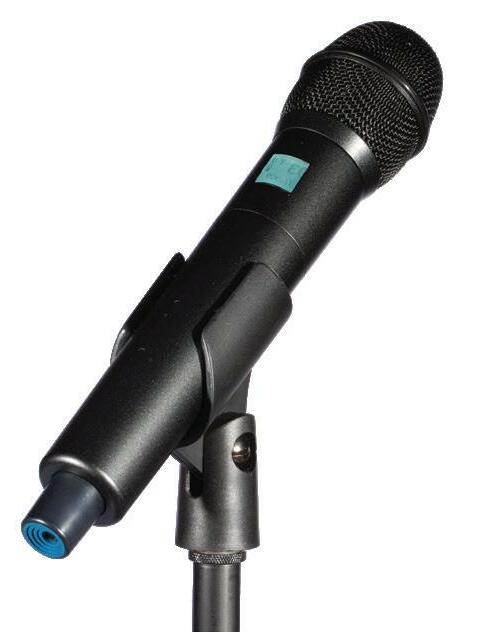
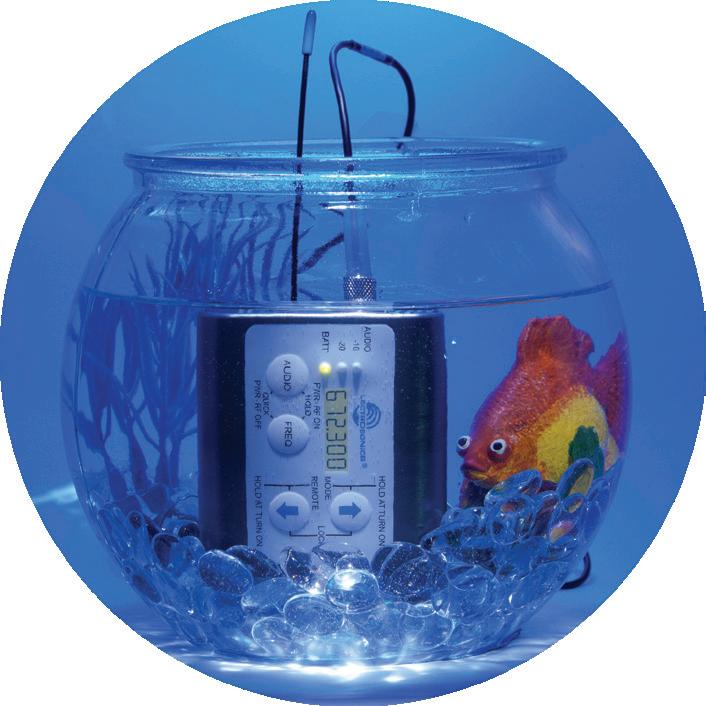





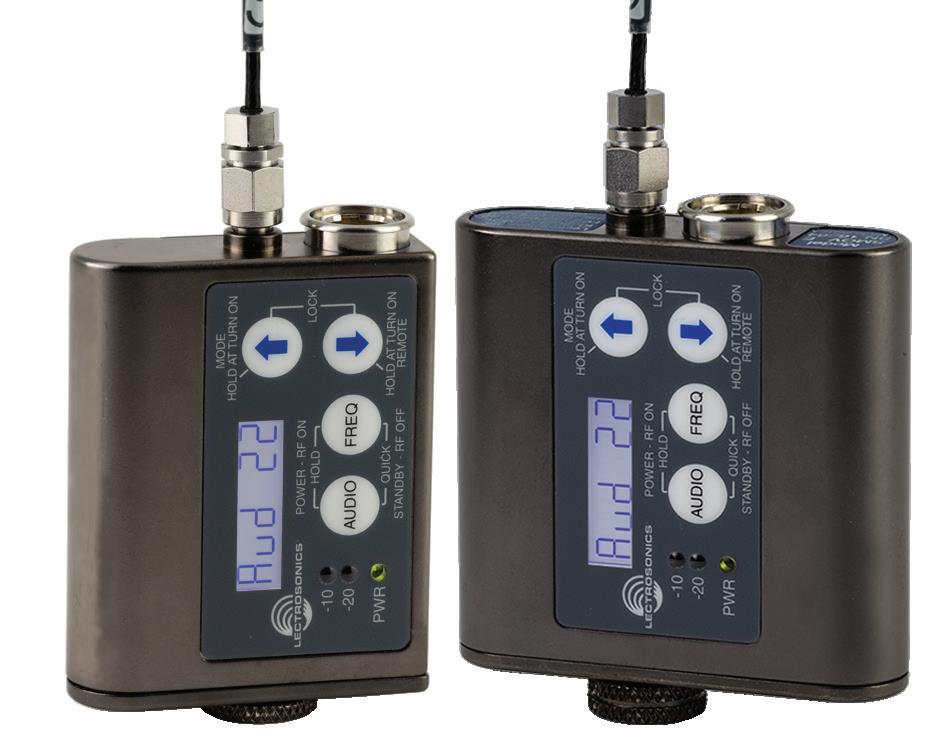
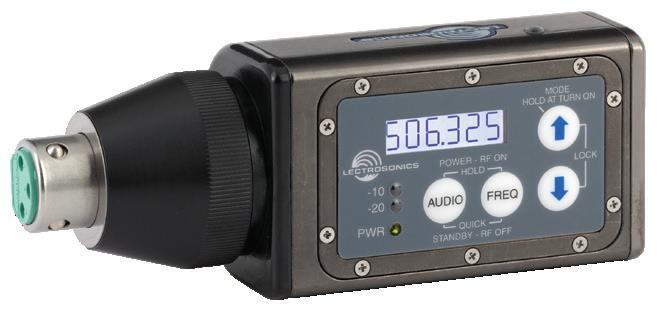
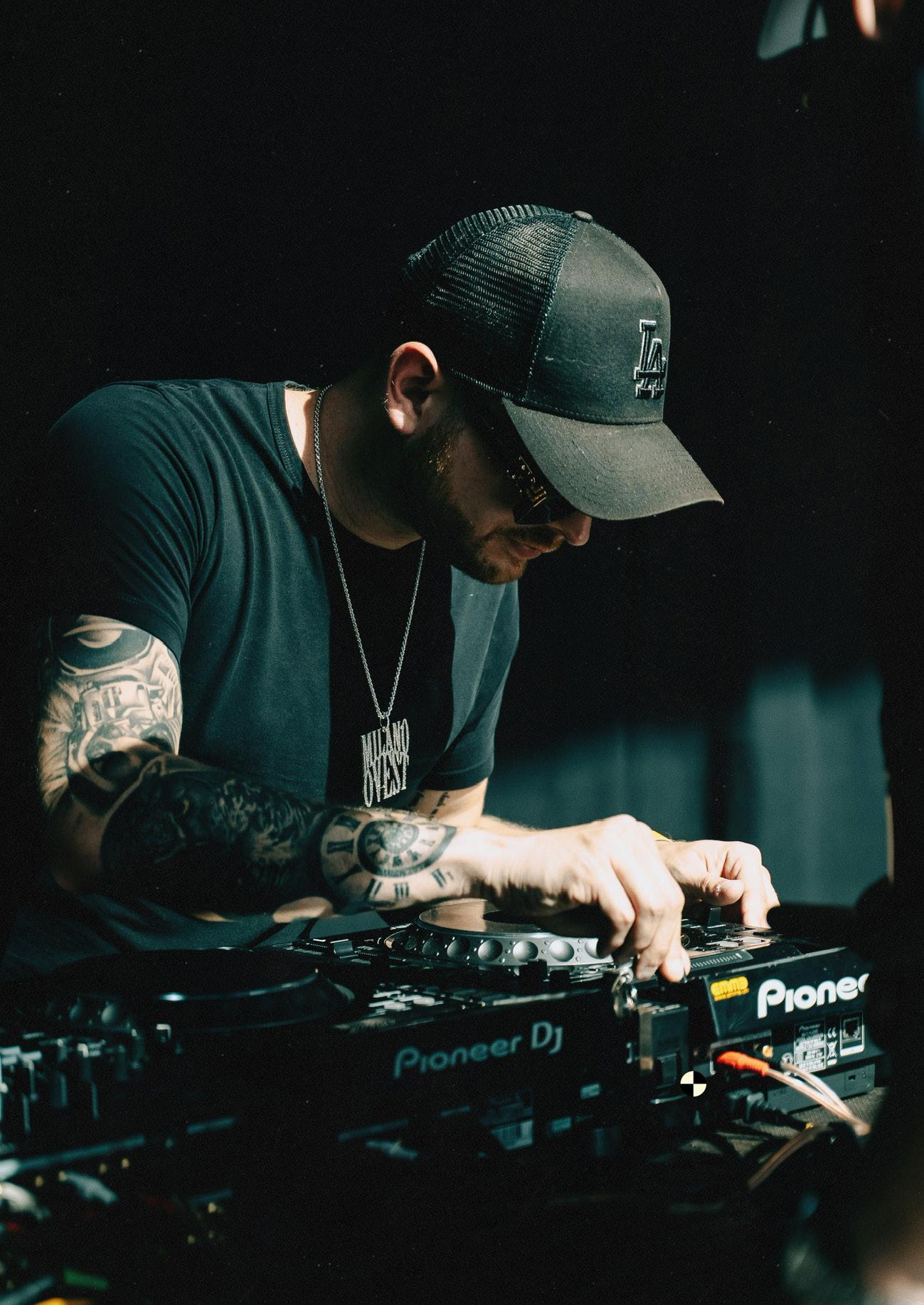
Do you have to move to Los Angeles or London to make it as an engineer in the music industry? Looking at the considerable career of Swiss-Italian Patrick Carinci, not necessarily. This mixing and mastering veteran has completely cornered the Italian urban-genre market. He’s worked with virtually every charting artist in Italy: Vegas Jones, Shiva, Eurovision star Francesca Michielin, and international acts like One Republic. He opens up about his geographically-dominant career, and why he religiously uses Waves plugins in his mixes.
If you’ve ever heard the advice that it’s important to find your voice and niche within the music industry, Carinci is a pretty damn good example of this — he has fully established himself as the go-to mixing and mastering engineer in Italian-language urban music. He’s speaking from his studio, which he calls the ‘Wave Shuttle’, in Sementina, Switzerland.
“When I started out, Instagram had just added the stories feature,” he
says. “So whenever I was with an artist in a studio, they would post a photo with me to their stories. So I quickly became known as a mixing engineer in Italy.”
And here we find him today, having worked with the likes of Eurovision finalist and popstar Francesca Michielin, and other huge Italian artists such as Shiva and Vegas Jones.
Carinci also offers some wise words in a world where there are almost too many digital plugins to choose from:
“Don’t buy every new plugin or every new release,” he says. “Just stick with a few. I started with Waves, and now I am at the point where I can mix just using Waves, even though I have a few others. But if needed, I can mix just with them because I know them. For me, one of the tricks is to know your tools.”
Patrick’s engineer nickname is ‘Wave’, and as it happens, Waves plugins are an undeniably vital part of his working process. Carinci explains that he started mixing with Waves plugins in 2008.
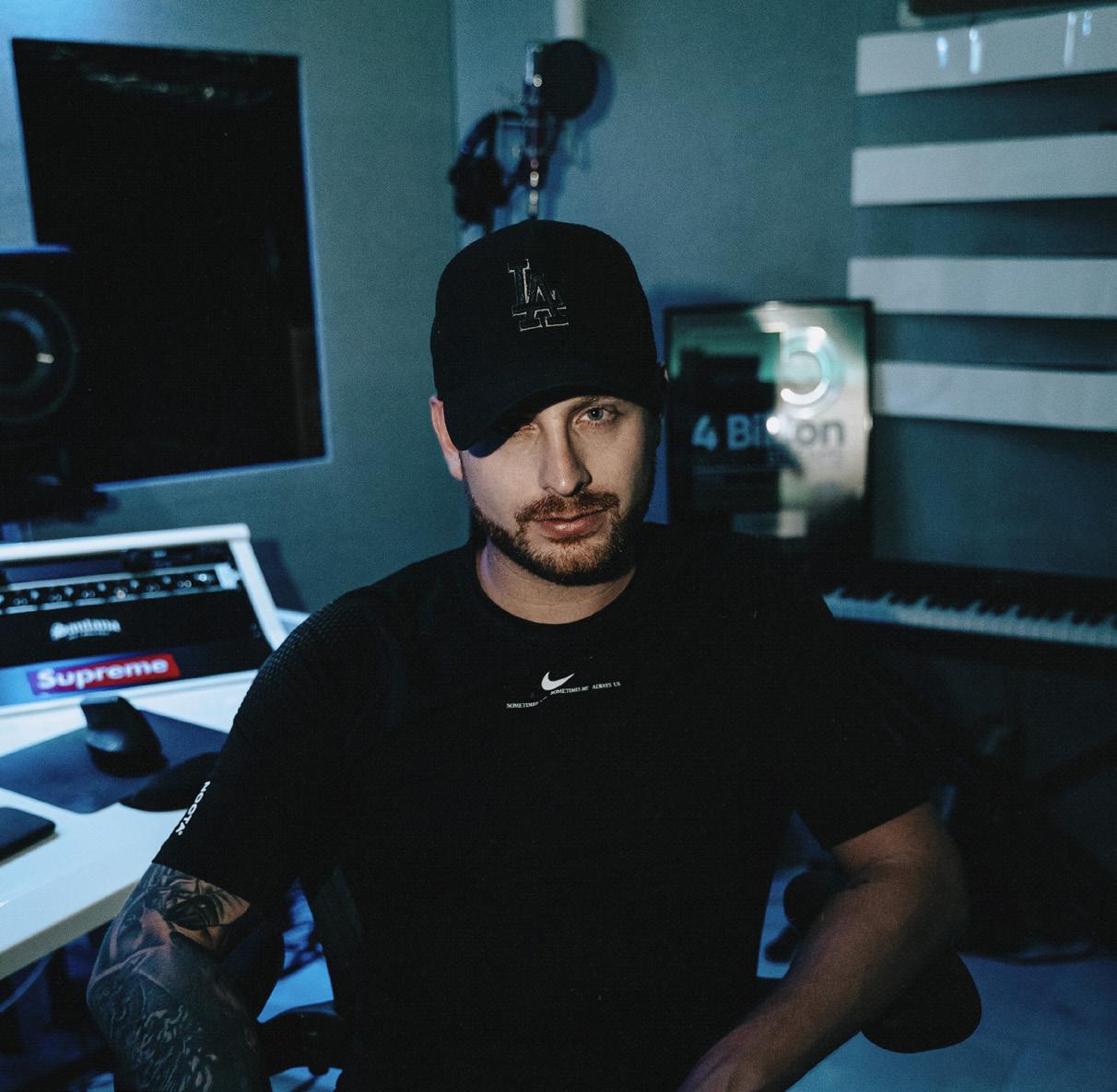
“Primarily because they were the most known plugins, even today they are, but at the time there were fewer plugins to choose from. Back then, there weren’t all these tutorial videos on YouTube and social media about production. I remember one of the only videos I could find was about how Umbrella by Rihanna was mixed, which helped get me going with Waves.
“And I’ve always used Waves for compression – I still use Renaissance Compressor every time, 12 years later. I know it really well now. Waves always come out with great new plugins like the NX Germano. You can’t go wrong with them, and they are pretty cheap by the way!” he laughs. “You can find them for 50 bucks or even less sometimes.”
In terms of the plugins Carinci naturally reaches for in each project, it tends to be the R-Compressor, the TrueVerb, the API Collection, the R-Vox, the Manny Marroquin EQ, the Manny Marroquin Delay, the Manny Marroquin Reverb, CLA vocals, CLA Unplugged and the CLA MixDown.
“And my go-to equalizer is the Waves Q10,” he adds, taking a breath. “I could make every single mix I do with just these plugins. I started with them and I know them very well.
I have no sense to go against the stream and change my plugins just because a new one has come out. I know them, I trust them – and I don’t always mix in my studio, I travel a lot.
I was in London a couple of weeks ago. But I know that every studio I go to, Waves will be there.”
Carinci then goes through a recent project for a quick peek behind the curtain:
“On the bassline, I have the R-Compressor and the PuigTec. On the kick, I have the SSL Channel, another PuigTec, the CLA MixDown, and the same on the snare. On vocals, the R-Compressor, the standard DeEsser, the L1 Limiter. Also the Q5 and the CLA vocals. And when you have to make those low pass filters, I will always reach for the OneKnob Filter – and on the master I have the API Compressor, the PuigTec and the L2 Limiter.”
After this brilliant crash course in mixing and hearing that Carinci is making regular trips to studios in London, one could easily imagine his significant success reaching far beyond Switzerland and Italy. It would be no less than deserved.
It’s not just that the 5D has integrated audio networking. Or flexible output power sharing. Or that you can easily hide it. You’re saying “yes” to more. A d&b system that provides the scalability, flexibility, and reliability needed for installations. Still, the 5D is a very impressive amplifier. Discover more: dbaudio.com/5d
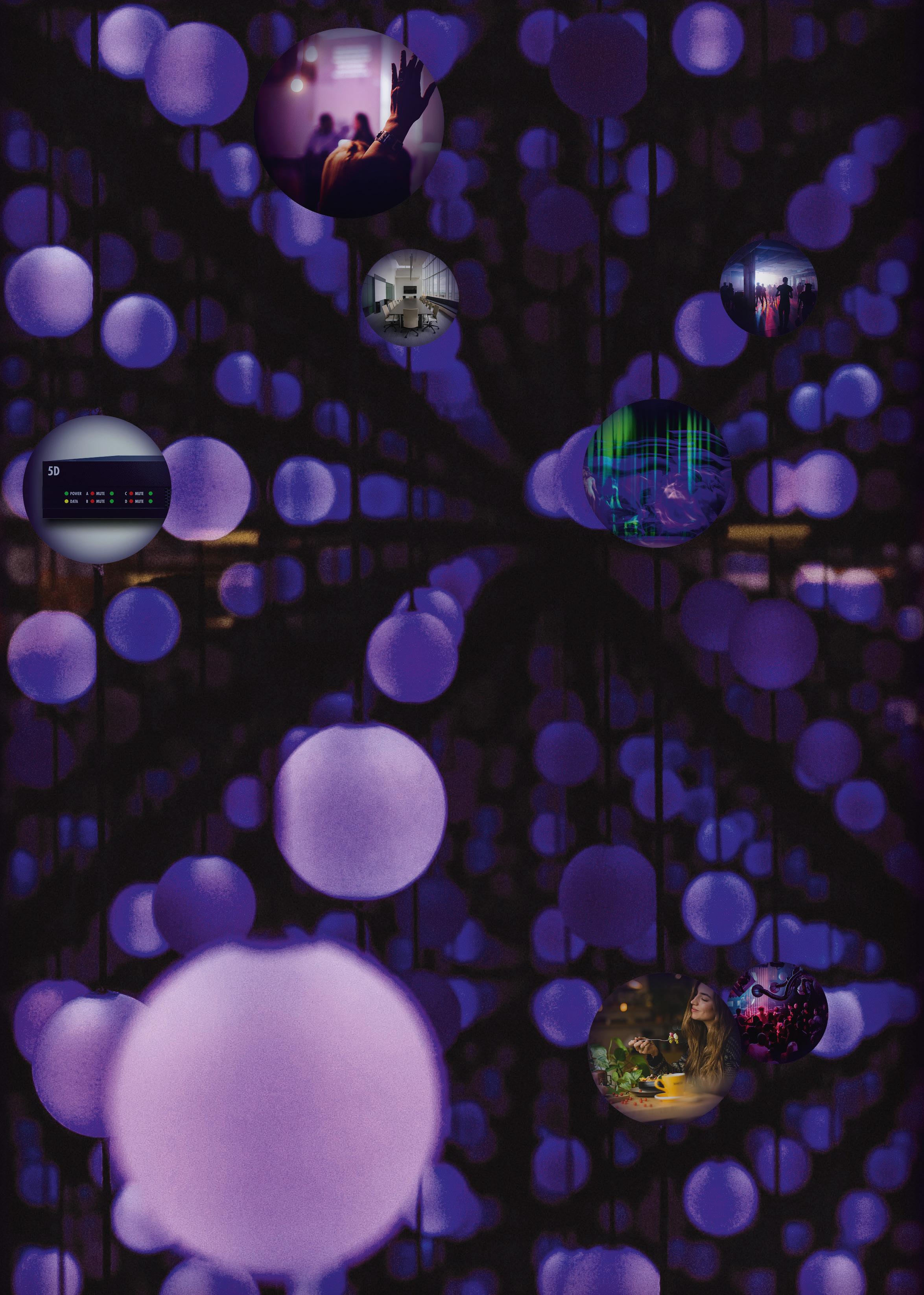


Sound engineer to Travis Barker, Yungblud and Machine Gun Kelly, Nick Mac explains how he works in the studio with Post Malone and how he prefers to do things a mile a minute. The trick, he says, is to scream into a pillow…
Nick Mac is a high energy person.
“My friends say, ‘Your brain’s like a ping pong ball’’, he admits, talking in rapid, enthusiastic sentences until he runs out of air, before going again.
“I bounce all over the place. I don’t want to sleep. I just want to do all these things all the time. I am really passionate about living and doing things passionately. I love it!”
Mac channels that passion into his role as chief engineer at Electric Feel Studios in L.A where he specializes in recording live instruments, mixing, vocal production, and Melodyne and vocal editing. In between hectic sessions or intense recording stints with artists like Post Malone, 24K
Goldn and Macklemore on what he calls “quote-unquote, days off”, he spends time with his family near the beach.
“Or I just put my head in a pillow and scream. I’m just kidding,” he insists, holding his hands up. “I’m a beach person so I try to go surfing. It’s a little more calm. I’m a body surfer, although it’s hard to do with my schedule!”
His mother has been a strong supporter of his since he first expressed an interest in music. Mac vividly remembers first hearing a Queen song around the age of 11 (“I was blown away by it and became obsessed”), and seeing surf sequel film, The Endless Summer II when he was just four years old: “I’ll never forget it. The reason I play guitar and the reason I do music is because the melodies have lived in my head longer than anything else. Those guitar notes, the way Gary Hoey played, the fusion of blues and rock… that just got into my head and was never able to go away. My mother rolled pennies to save up for my first guitar,” he says, pausing for a split second and apologizing for getting
emotional. Later, when he started to take recording seriously, his mother helped him get his first DAW in the form of Cakewalk’s Sonar.
At university, Mac started studying “astronomy or something” and then philosophy, but he always knew where his true passion lay. “I was kind of spinning my wheels and was playing in bands. I thought, ‘You know what? I’m just not gonna go anymore’. My brain just doesn’t function like that, if you haven’t noticed,” he laughs. “It’s like a ping pong ball. I was pulling out of the driveway to go to rehearsal and my mom said, ‘Don’t you go to college anymore?’ I said, ‘Mom, I want to play rock and roll’, and I drove away
and she just shook her head,” he says, grinning. “It’s a little cheesy, but it happened! I’d like to think that I was destined to do something like this. I feel highly creative. I feel highly energetic. I feel so many different things, and when you’re feeling so many different things, I think a path is the arts: living with purpose and feeling.”
An artist he’s been working closely with in recent years is Post Malone, including his role as an engineer on Stoney, the rapper’s debut album. The record was certified 5x platinum by RIAA and platinum by the BPI. Mac remembers the first time he met him:
“He came in in this big, furry coat looking super cool, and he’s super nice,” he recalls. “I was like, ‘Who is this guy? I like this guy!’ He started playing Stevie Ray Vaughan on the guitar in the live room. We share an eclectic music taste and we hit it off. We recorded so many different ideas and songs and things of that sort. I’ve got the 3x plaque, and I’m super excited to have it. I’m gonna give it to my kids just so they know I was kind of cool at one point.”
In the studio, Malone doesn’t take a backseat:
“He is so involved, and he really cares about things to the highest degree,” Mac confirms. “He’s a really fantastic musician as a guitar player and singer, and a producer as well. For instance during quarantine, he’s like, ‘Bring the mobile rig that you built for my tour to my house; we’re going to start the record’. So I did! We had a station for him to make beats on and produce on his laptop – he was making beats and adding things over loops and recording over them. He’s very involved – both feet in. That was a really interesting, collaborative period,” he reflects, adding that it reminded him of when they first worked on Stoney

During this intense recording period in Utah, around 60 songs were whittled down to 16 for Malone’s new album, Twelve Carat Toothache (Deluxe). Six of the songs Mac recorded ended up on the record. “I’d take one, you know what I mean?” he says with genuine gratitude. “I’d take none and a high five! It’s all good; I’m just happy to be there and in the room.”
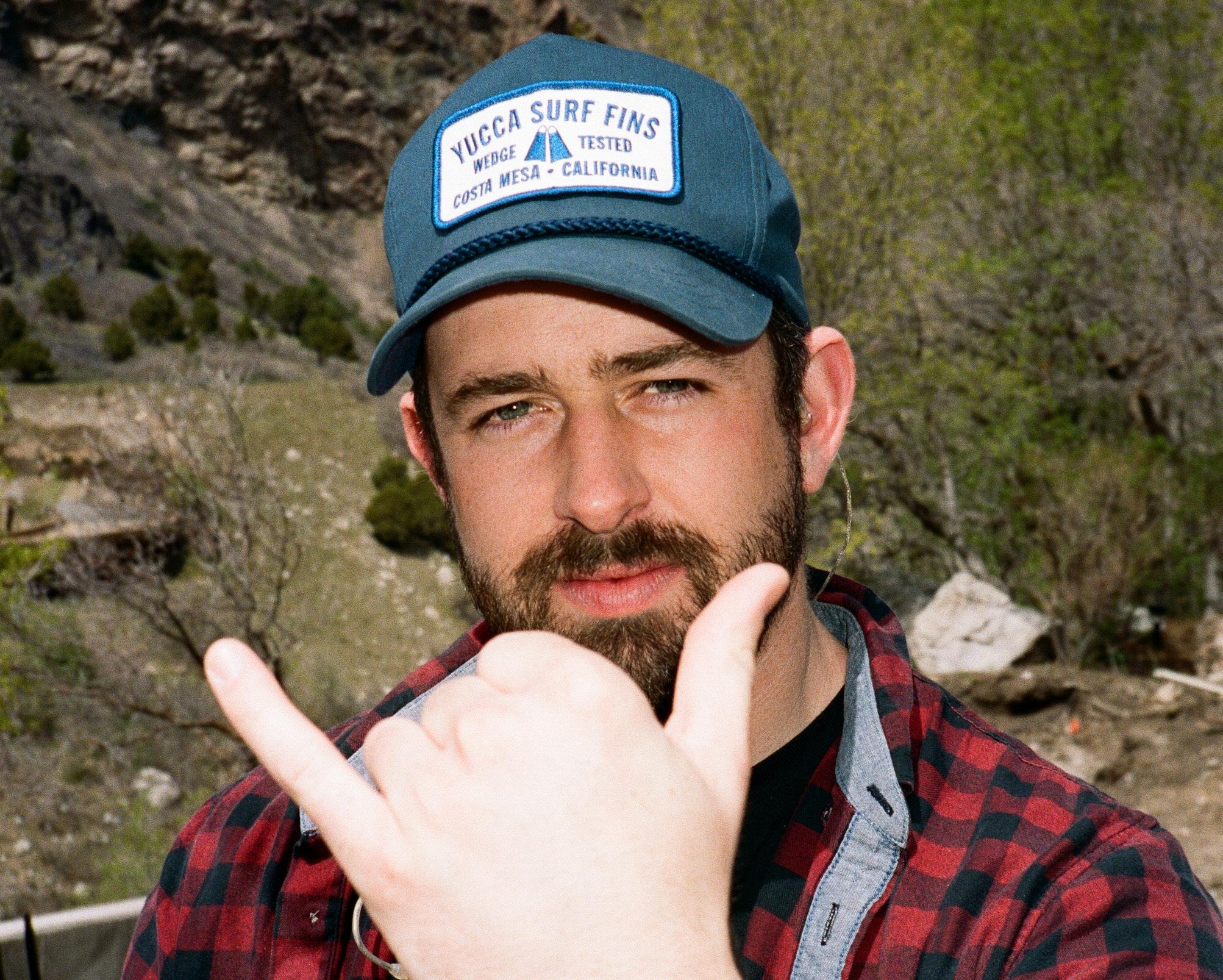
Of the tracks that he worked on, his personal favorites are Waiting For Never and Hateful. He shares that the former holds a particularly special meaning to him, even though it’s hard for him to pinpoint exactly why:
“Without getting too emotional – I’m such an emotional person – it’s a blessing and a curse,” he sidenotes, “but that was such an interesting time during the pandemic, and I was going through a lot of stuff personally, as I’m sure everybody was. There was something about the sentiment of the song – it’s really heavy. You go through things in your life with people that let you down. It’s maintaining the person that you’re supposed to be and remembering that you do have value, no matter what other people say. These tattoos will fade, I’m gonna be old and grey one day – although I’ve already got a little bit of grey in my hair – but I’m gonna be the same person. I can’t really put into words what it means to me, but that song is just very personal to me, and I didn’t even write it! It is just my interpretation of it. Being there recording it was a whole separate thing versus the perception of the song. That was one of the first songs where I could hear that he was being ‘Post Malone’.”
Mac used a Focusrite ISA 430 Mk II channel strip for Malone’s vocals, which he also made sure to include in his mobile rig.
“It’s actually discontinued, but I bought that off of Reverb,” he explains. “I had just got paid from a mix session, and I was like, ‘Let’s party! Let’s just spend it.’ So I bought that, and when it came to Electric Feel, I brought it with me. I take it everywhere with me pretty much, but I’m using the ISA One a lot now, just for footprint and for all the other functionality. I love the color of the ISA stuff. It’s my favorite – I really enjoy the sound. There’s a lot of color that you can get out of it depending on where you set different things, and I really enjoy the flexibility. It does this nice thing to the Sony C-800G mic because that’s a pretty bright microphone and it rounds it out a little bit. I really enjoy the tone.”
Mac says he is sentimental about Focusrite gear in general. One of his favorite things about the ISA One is
the VU meter, which he uses on every track he works on. “I’m a big meter person,” he nods. “To have a VU meter on my box before it touches anything digital is indispensable to me. Also, the headphone amp on it is amazing. Being able to listen to the direct mic signals is great for troubleshooting. That box is crazy and it sounds great.
I ride the fader, so to speak, on pretty much any source I record just to try to find the optimal level, and it’s all within an arm’s reach. It’s very tactile.
I love it.”
Mac’s recording space is also home to a Clarett+ OctoPre mic pre, which he calls “a lifesaver” in the studio when he wants a quick eight channel expansion. “It just made sense,” he says, highlighting the 1U form factor and his personal favorite: the Air function, which simulates the Focusrite studio console and the circuitry built into that.
“It really opens up your ability to do a lot of damage! It’s easy to carry around, it’s convenient, but quality
and effective. You’ve got inserts on it too, which is super crazy. It’s awesome! I describe the Air function like a high end top sheen,” he considers. “It’s not this harsh thing, it’s this nice polish over the top that you can toggle on and off. It’s extremely valuable. Very cool!”
With that, he has to leave as he’s got a 24K Goldn album to engineer, a Hollywood studio to renovate and some personal projects to get to. And screaming into a pillow?
“I like being stressed! I like screaming into a pillow,” he laughs. “If I can’t do that, then what am I doing? My plate has become quite full, but I like it like that because if there’s nothing to do, I get weird!”
“I LIKE BEING STRESSED! I LIKE SCREAMING INTO A PILLOW. IF I CAN’T DO THAT, THEN WHAT AM I DOING?”

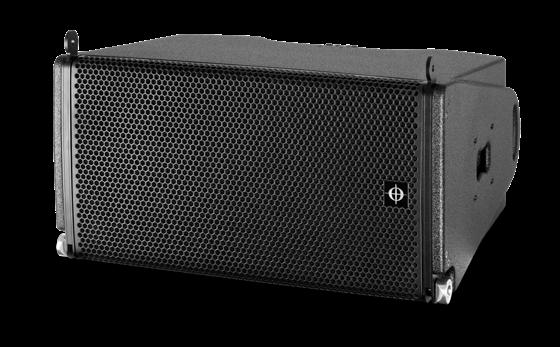
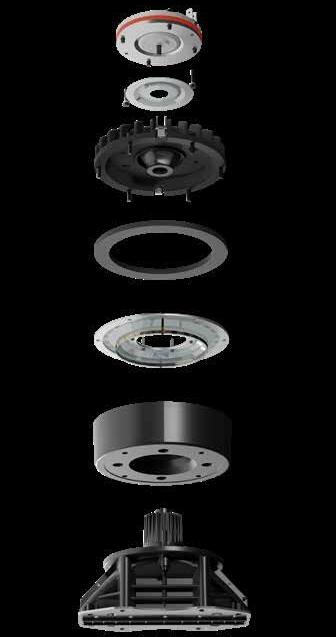

Everything Everywhere All at Once is a film that you need to watch more than once – not in order to decipher some elusive hidden meaning, but simply to be able to take it all in. Re-recording mixer and supervising sound editor Alexandra Fehrman only needed to watch it once to convince her to take the job, although she almost passed on the whole thing…
Everything Everywhere All at Once was the surprise hit of 2022. At its core, the plot centers around a Chinese American immigrant who, while being audited by the IRS, discovers that she must connect with parallel universe versions of herself to prevent a powerful being from causing the destruction of the multiverse. What transpires after this involves alternative universes, an
unrelenting Jamie Lee Curtis, talking, googly-eyed rocks, sausage fingers, a string-pulling gourmet raccoon chef, and a bagel that creates a black hole that’s capable of tearing the multiverse apart.
“I was burnt out and I was planning on taking a little time off when I was approached to mix this film,” admits Fehrman, “and I didn’t know much
about it. They said, ‘Just watch it’. I was approached by the supervising sound editor and other re-recording mixer, Brent Kiser. I said, ‘I’m gonna watch it, but I’m gonna tell you my intention is to take a hiatus. I’m probably going to pass, not because I don’t want to work with you, but because I am very tired’. I watched the film that night and I called him immediately at 10pm.
I was like, ‘I am so sorry about anything I said. I don’t want to take time off. This movie is amazing. I can’t believe that I even suggested that I might not want to work on it!’ My reaction was that it was the craziest film I’d seen in a long time. I was honored to be approached to be a part of it.”
Fehrman usually mixes dialogue and music for film and TV, and was tasked with mixing the many sound effects for Everything Everywhere All at Once, working closely with Kiser, who oversaw the music and dialogue mix, and sound designer, Andrew Twite, who completed a lot of the initial sound design work. With such an intricate and multilayered plot, it’s no surprise that the Daniels also had a very clear vision for the film’s sound design:
“They are very into sound design,” Fehrman confirms. “They are geniuses. They had such a clear vision of how the film was supposed to feel throughout every minute. During the mix, they already had a pretty solid vision for what they wanted, sound design-wise, and we were working in Dolby Atmos, so it was a great experience to expand everything. We had a lot of sonic space to make sure that the focus moved in the right direction, because there was so much going on, we didn’t want to focus on everything at the same time. We had to really pick and choose moments and the things we wanted to highlight.”
In terms of fight scenes, the film has many – blending expert choreography with humor, courtesy of some inventive weapon choices. The Daniels gave the sound mixing team references for each unique fight sequence: “Notice when you watch the film, some of them are very heavy impacts with lots of actual fight sounds – punches and so forth,” she explains, “and some of them are
really dreamscape-like. They’re more wooshes and booms and not really realistic sounds for fighting – and that was very much intentional. When you watch the film, it paces up that way and it gets more and more intense with everything, sound included.”
That reminds Fehrman of one of her favorite fight scenes, which sees the film’s villain fight off and (inventively) murder numerous police officers with weaponized sex toys whilst dressed in an Elvis costume. “I really love the hallway scene,” she smiles. “It’s a really great scene because it’s really fun, and her choice of weapon was a new endeavor! Everything was packed into one so it was really fun sound-wise and there was all kinds of stuff to play with.”
On the other end of the spectrum, a tender scene towards the end of the film sees Evelyn reconcile with her husband Waymond, in that moment suddenly appreciating what he has brought to her life.
“It’s a simple moment, and it’s still very impactful to me. As she looks at him, there’s this glowing red light between them that’s flickering on her face. With that, there’s some sound design, and there’s also music in the sound design. I didn’t want to get in the way of that because the music was so beautiful, so it was a little bit challenging to find that balance where you really feel her heart glowing and just expanding with love. I mixed it in a way where it got introduced really subtly, and then sort of overwhelmed the space, but still without competing with the music. That was one of my favorite moments.”
For the more jarring scenes where characters are getting wrenched from dimension to dimension, this required a different approach: “That was a really fun part because we’re ripping our characters from
one place to the next, very quickly,” she reflects. “That was a perfect opportunity to use Atmos using sounds that were designed to call them into a different reality. So you’d have things like little radio clicks or something that was coming through a little fuzzed, and then all of a sudden, we could expand all of the sound design to envelop, open up and then close really quickly in the mix, so that you really felt like you went somewhere else. There is a lot of panning of sounds designed for all the different places, and we could really weave in and out of those recognisable things from the alternate universes.”
Another recent critically acclaimed film Fehrman worked on was 2021’s CODA, which centers around an aspiring singer who is the only hearing member of a deaf family, who rely on her translation skills to keep their struggling fishing business afloat.
“With this film I got brought on later, so they had already started the sound design work. But I watched it and I called Sian Heder, the director, and gave her my ideas about which things we could really highlight. It’s such an interesting experience to have one person who is hearing and the rest of the family who is not, and deciding what things should be realistic, and what things should be subjective. I would say the entire film was built out from a hearing person’s perspective, until we chose moments of the mix to dive into the perspective of the non-hearing characters.”
In a poignant scene, the film’s main character, Ruby, performs a duet at her school. As the duo start, the audio fades out to reveal the perspective of her family, who experience the moment without sound, relying on the reactions of those in the crowd to gauge the response to her voice.

“That scene in particular was so difficult for me, conceptually, to go from a full performance, where we are completely surrounded by music and people in the auditorium, to absolutely nothing. I have to admit, I was a little bit scared. We prepared a tonne of sound design that was low rumbles, or just air or something to pad that space, because it felt so naked when you went to full silence – but Sian really wanted that. Now I watch it as a viewer and I see how powerful that is because it is uncomfortable, and it’s uncomfortable on purpose. I have to say that fading out of that – everything to nothing – is a very difficult thing to achieve, actually, because it had to feel just right. You didn’t want it to feel like it sucked out, and you didn’t want it to feel like it just gradually faded away, because we’re going straight into their perspective. It was a really difficult shape of fade to find to make it so that it didn’t seem wrong, and so that it felt like something was shifting perfectly in time with what we were seeing.”
Fehrman usually mixes out of her home mix and edit suite, which she also uses for pre-dubs, while the majority of her finishing work is completed at a Signature Post in Burbank, California – including Everything Everywhere All at Once. Given that Fehrman balances background noise, dialogue, music and sound effects as a job, it goes without saying that her studio kit is of paramount importance to ensure the best possible results.
“In my home studio I use the Focusrite Red 4Pre Thunderbolt interface as my main interface,” she explains of her must-have kit. “I have a preamp that’s attached to it, but sometimes I’ll use the onboard preamps as well. The reason why I really like it is because it’s so flexible and I can use the Dante routing so that I can connect anything I want, depending on what kind of day I’m having. I’ve even done some music recording projects using it where I’ll set musicians up in other places in the house and be able to connect through the routing matrix, and it’s really helpful. I purchased it in 2016, and of course we use them at the studios that I work at, as well,” she adds. “They’re always up in those racks. We use Focusrite pretty heavily at Signature Post as well; we use their interfaces and headphone boxes, and for when we record ADR we’ll plug the actors into the headphone playback system. Again, it’s really great and easy to use the routing, so you can just set somebody up with a headphone mix real quick. It has to be pristine, especially with clients and actors waiting. It has to go smoothly, and you have to be able to switch things around on the fly. Focusrite makes that really easy,” she smiles.
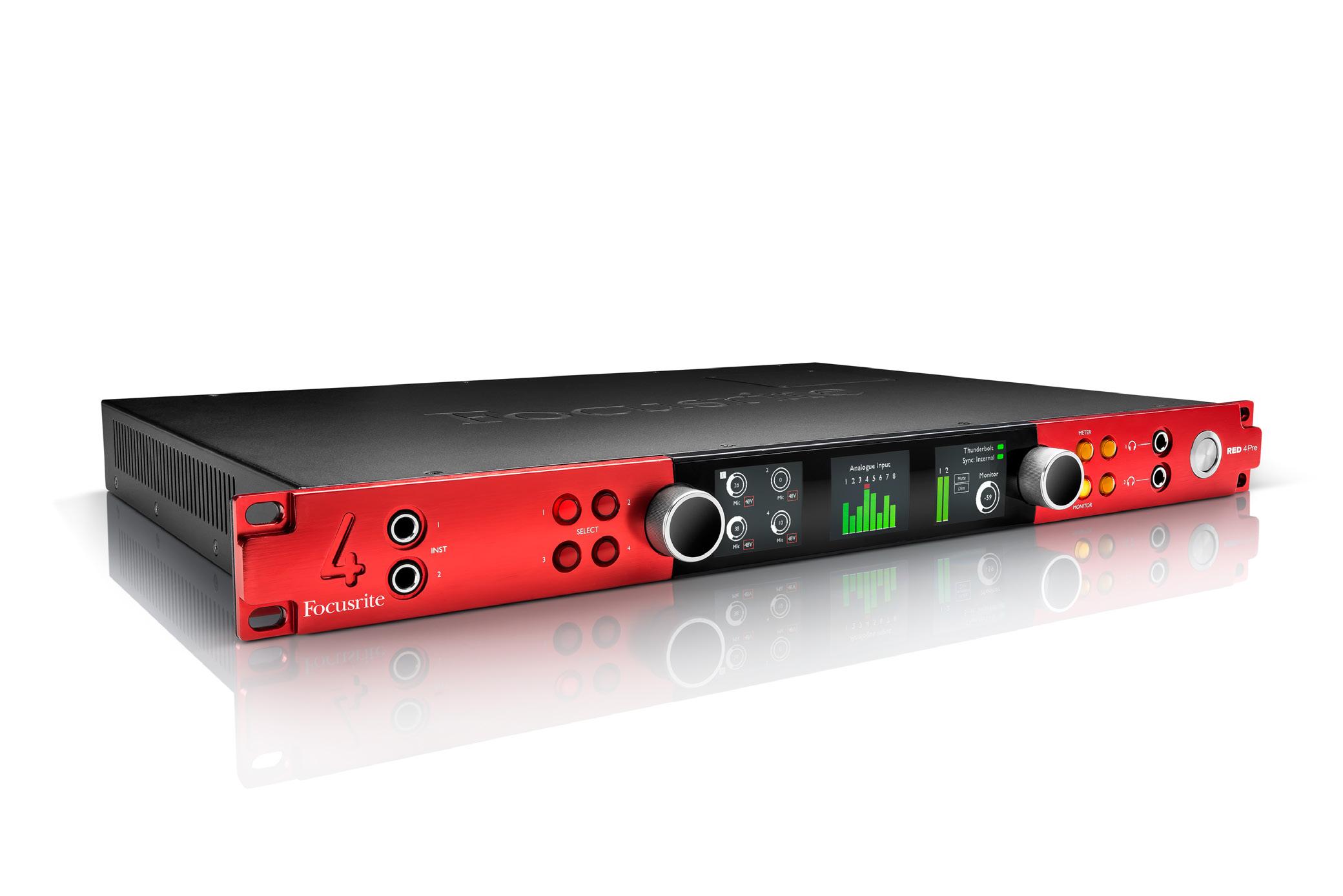
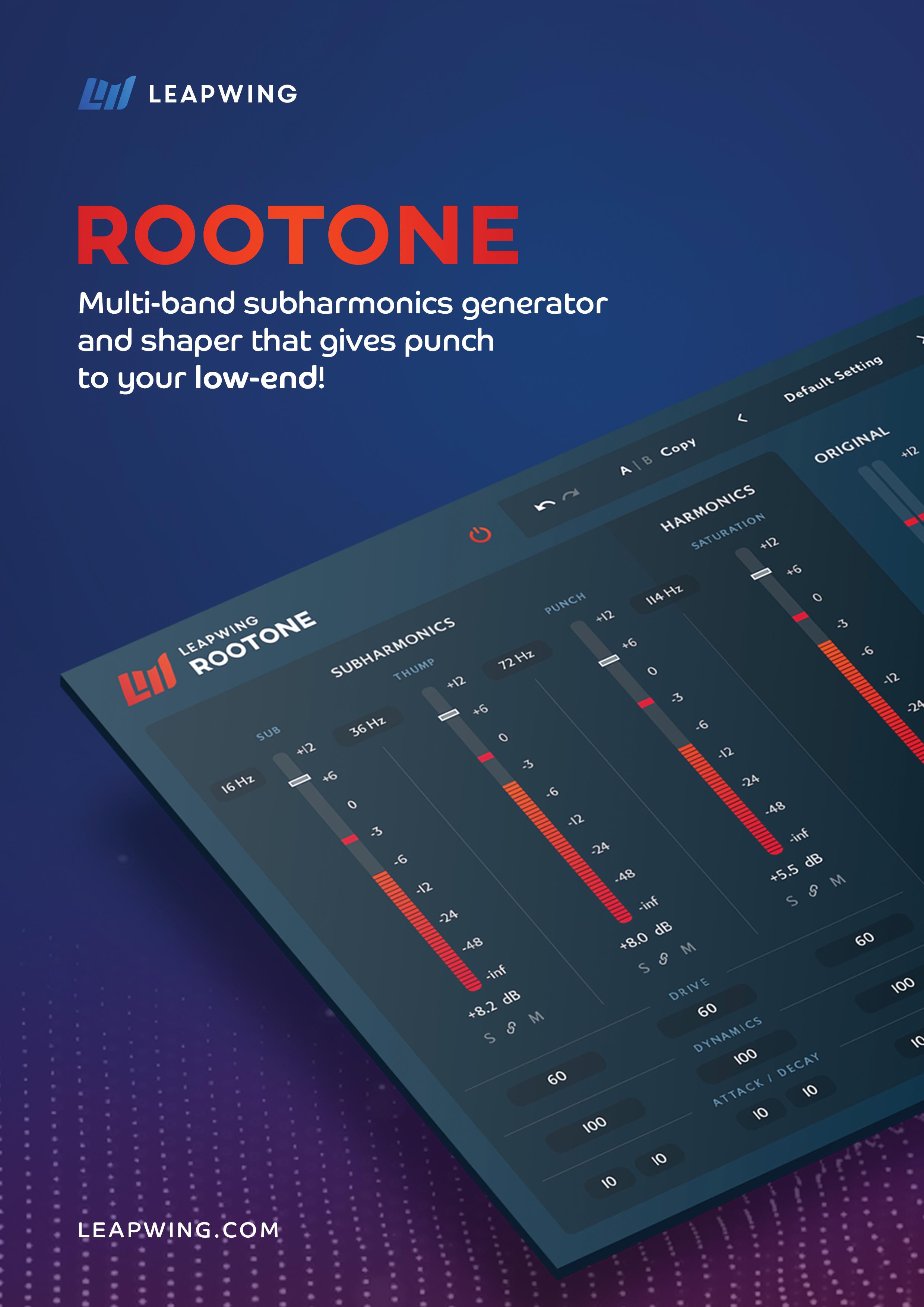

Alison Sudol uprooted herself from L.A and moved to London to play Queenie in the Harry Potter prequel Fantastic Beasts: The Secrets of Dumbledore. Suddenly, the UK went into lockdown and Sudol suffered a miscarriage. The singer-songwriter and actress explains how she channeled her anguish into her new album, Still Come the Night.
Sudol is cramming as many chores as possible into an hour. “I’m a mom so I’m going to try and exercise, do some bills, emails and laundry in the time that I have free. It sounds really boring. I bet you’re really glad you asked that question,” she laughs warmly, making up for it by joking that she’s about to go out on her yacht.
Sudol’s chores seem all the more mundane when you factor in that from 2016 to 2022 she has starred as Queenie Goldstein in the Fantastic Beasts franchise alongside Eddie Redmayne, Jude Law and Johnny Depp. Making the move from L.A to London after meeting her partner in the UK and in order to shoot 2022’s Fantastic Beasts: The Secrets of Dumbledore, Sudol moved to the UK capital just before England’s first lockdown.
“It was an interesting time to move,” she acknowledges, a wry smile on her face. “I’m only just getting to know the neighborhood now it’s open. It seemed like a new adventure to try living in London properly.”
Sudol is generous with her time, and you can’t help feel soothed by her calm, dreamy voice. She speaks like a songwriter, her words poetic and impactful. It’s no accident. Fantastic Beasts fans might be surprised to learn that before stepping into Queenie’s mind-reading shoes, Sudol has been releasing music since 2007. Sudol came to acting a little later, starring in the Amazon Video series Transparent before landing her prominent role in one of the biggest film franchises in the world.
“I’m quite an extreme hot or cold kind of person,” she admits, “so I go up and down with acting, but I have a milder relationship with it than with music, which is my most intimate form of expression. It’s something that I hold very closely to my heart, although I have a real love-hate relationship with the music business. But I can’t really live without making music; I’ve tried,” she adds pointedly.
Aged 37, Sudol grew up as the Harry Potter books were released and became a global phenomenon. “I read them well into adulthood; they’re brilliant books and such an incredible world. I never thought that this was going to be something that I could be a part of because it’s such a British institution, and Americans don’t end up in those,” she says, adding that she’s still working on her RP accent. “It’s still pretty bogus,” she laughs.
“Fantastic Beasts was such a surprise and an honor. I was so excited to be a part of this universe – and I was so nervous. Storytelling is such an intrinsic part of who we are and how we make sense of the world, and what used to be storytellers around the fire is now Star Wars. It’s Harry Potter. It’s a much wider, much more global thing. It’s modern mythology. The archetype of Queenie, particularly, was really interesting to me and how much she’d matter
to people, especially young women.
I was really excited to have that responsibility.”
Over the course of the three movies, Queenie goes from a charming friend and ally of Newt Scamander (Redmayne) to joining the side of dark wizard Gellert Grindelwald, before ultimately returning to the side of good again, marrying ‘NoMaj’ Jacob Kowalski (Dan Fogler). “It’s a classic archetype, right? The uninitiated, bright eyed girl is naive and gets manipulated by somebody of darker intent, goes into the underworld, has some deep realizations and fights back to the light, but with much more wisdom and sense of self than before.”
The first Fantastic Beasts film received mostly positive reviews and was a commercial success, grossing $814 million worldwide. The film’s third installment didn’t fare so well, receiving mixed reviews ranking as the lowest-grossing film of the Wizarding World franchise.
“It’s difficult to achieve that kind of detail on a large scale,” says Sudol, choosing her words carefully. “Especially an action piece with loads of different characters and lots of plot to achieve. I don’t know that all that was always clear, and there were some aspects of it that I rubbed up against,” she says of Queenie’s
character development. “But it’s not my story. I just did the best that I could with what I was given. I think if people came away with a sense of that archetype, then that’s good. I’m always overthinking things, clearly! It’s also just entertainment, isn’t it? It’s her journey, and that’s my framework.”
On Valentine’s Day 2020, Sudol discovered that she was pregnant. Five weeks later, she was cramming as much toilet paper, canned goods and prenatal vitamins as she could into a rental car. Filming on Fantastic Beasts had been indefinitely suspended and the tour with Goldfrapp that was meant to start in a matter of days was postponed. Sudol and her partner decided to travel to the countryside to stay in a friend’s remote cottage. Days after settling into their new surroundings, Sudol lost the baby. The days, weeks and months that followed are chronicled in songs from Sudol’s fourth full-length album, Still Come the Night
“Both my partner and I were so devastated. It threw us and we didn’t know how to process it,” she recalls somberly. “I couldn’t manage this kind of grief and I couldn’t shut it down. I needed to do something with all the grief pouring out or I would drown in it.”
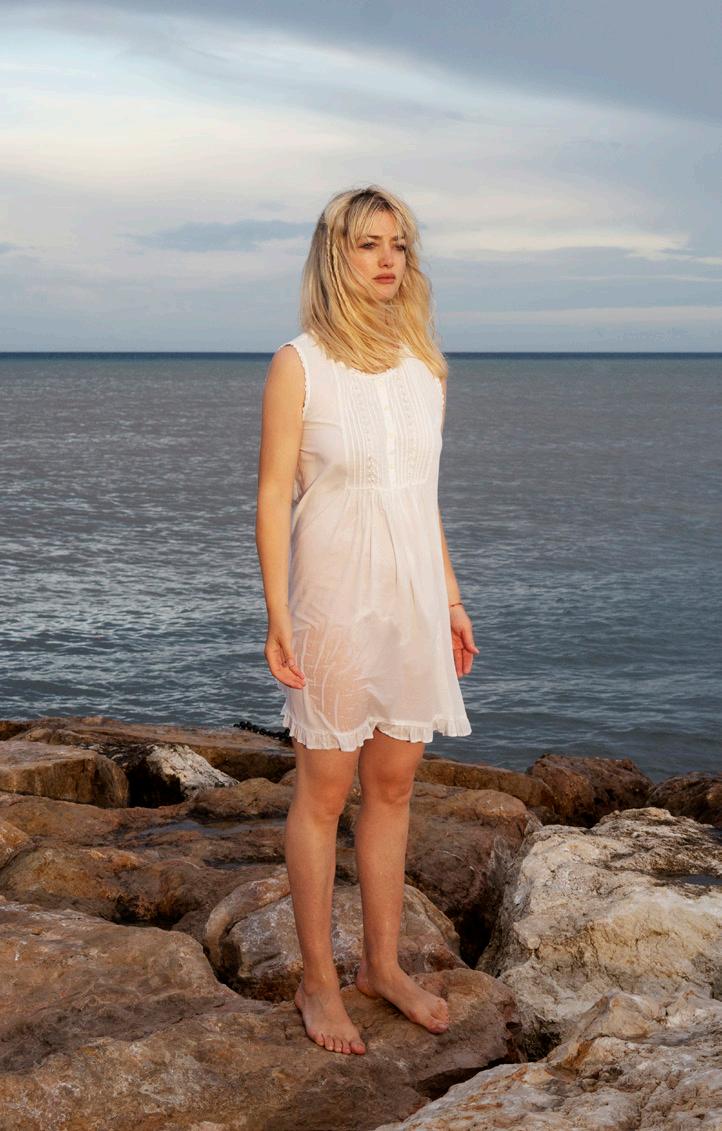
“I HAVE A REAL LOVE-HATE RELATIONSHIP WITH THE MUSIC BUSINESS, BUT I CAN’T LIVE WITHOUT MAKING MUSIC.”

Sudol picked up a battered old guitar that belonged to her friends’ son and started writing.
“Part of what I was hoping to achieve by making a record was to be able to talk to people about it, because there’s a big taboo. It’s not just about loss. it’s about living through something that knocks you sideways, and how to pick yourself up, or not.”
Set with the changing seasons and the quiet solitude of their borrowed cottage as the backdrop, the first songs of her intimate and introspective record came quickly and quietly. The resulting album is surprisingly light on its feet for such a heavy topic. “There’s a lot of brightness in the album, and there’s a lot of love and sorrow as well,” she nods. “I was thinking of the listener, but I was also thinking of myself and what I wanted to hear as I was going through it. I didn’t want to be pressed upon with heaviness. I wanted to sing the truth of what I was feeling but I wanted light within that and to be soothed.”
The quietly haunting Still Come the Night (recorded in one take) was the first song Sudol wrote in the days immediately following the loss. She nearly didn’t feature it on the album due to how painful it was. “It’s hard to sing in front of anyone. It catches me by surprise; sometimes I’m fine and sometimes I’m not. But I needed to sing it, needed to try and find something to hold onto. I tried to bring as much light as I could to it, to find the beauty in a moment where it was really hard to move through the day.”
The stripped back track, Peaches, was initially inspired by Sudol’s dog. When she started having recurring dreams about a baby girl, Sudol sensed it needed to be rewritten.
“Great as she is, I couldn’t write a song about Gertie,” she laughs. “It wasn’t really on topic. Then I started having these dreams that were so vivid. I didn’t know if I could bring a healthy baby into the world. I didn’t know if I could
bear to lose another. I wrote the lyrics to try to process what I was feeling.”
It was after Sudol’s daughter was born that she realized the lyrics were written two weeks before she was conceived. “That is still surreal,” she smiles, shaking her head slightly. “That song wasn’t ready to be written until I was ready to start thinking about her. These dreams were so strong and so insistent – it was really wild. I think the dreamscape has a lot to offer us in terms of things beyond our limited way of understanding them. She was waiting there, for whatever that’s worth. It’s a song that has a lot of joy in it, and I love that I can share that with her now.”
Still Come the Night is her most autobiographical and confronting record yet, and Sudol acknowledges that it is not for everyone.
“This album feels to me like it’s the first time I’m just standing there in my own skin, just being with it. It’s a relief to be so open. If it’s not someone’s taste, that’s fine. Although subject-wise, it’s much more broad than just going through a miscarriage. I think this can apply to all kinds of grief, but you’re not necessarily always in a place that you want to touch upon those feelings. It might shake things up…I don’t know,” she considers, trailing off.
“Maybe it’s just a nice album to listen to,” she suggests, brightening. “I’m just glad for the opportunity to speak about something that is very important to me and that maybe could offer some relief to other people as well. It’s brought so many conversations up by putting out the record. So many people are telling me about their experiences already. It’s wild. That’s what I hoped for.”
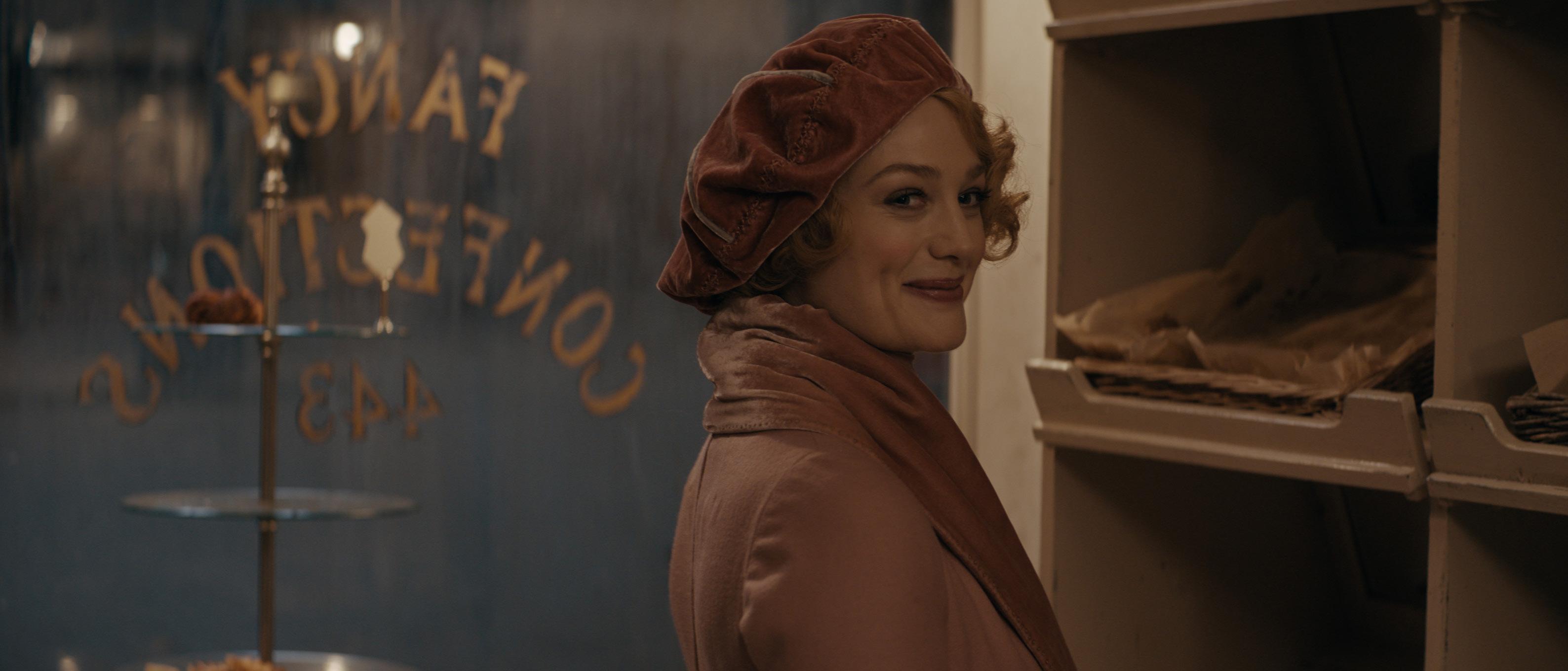


A live stream in which Spider-Man: No Way Home star Tom Holland interacted from L.A with the Italian press in Rome. So far, so straightforward, right? What if Holland was appearing live and as a hologram – and the sound had to be pristine despite a lag in audio. Despite his spidey senses tingling, Jzoo Studios’ Shiheng ‘Jedy’ Xu explains how Lectrosonics ensured disaster was averted…
The Spider-Man virtual press junket with Holland was a live stream Q&A, so there was no wiggle room for anything to go wrong, explains Xu.
“We were on a stage in Los Angeles and broadcasting to Rome, where Tom was appearing as a hologram. It was this crazy-big international production with crew in Los Angeles, London and Rome.”
Despite the pressure being on for such a high profile, technologicallychallenging film promo event, Xu was safe in the knowledge that he was armed with his trusty stable
of Lectrosonics wireless gear, from time-tested SRb and SRc receivers paired with SMQV and LT transmitters, to a recently acquired DSQD digital receiver.
“I was rocking an SRb, an SMQV, and an LT,” he says of the Spider-Man press junket. “The LT was a backup in case the other channel had any problems – which it didn’t. I was using the ALP620 fins as well, which have always worked great for me in any scenario. My role was to send the feed of Tom’s microphone into the main streaming rig.”
The biggest challenge stemmed from the lag between L.A and Rome, as the Jzoo Studios team couldn’t monitor what Rome was receiving in real-time.
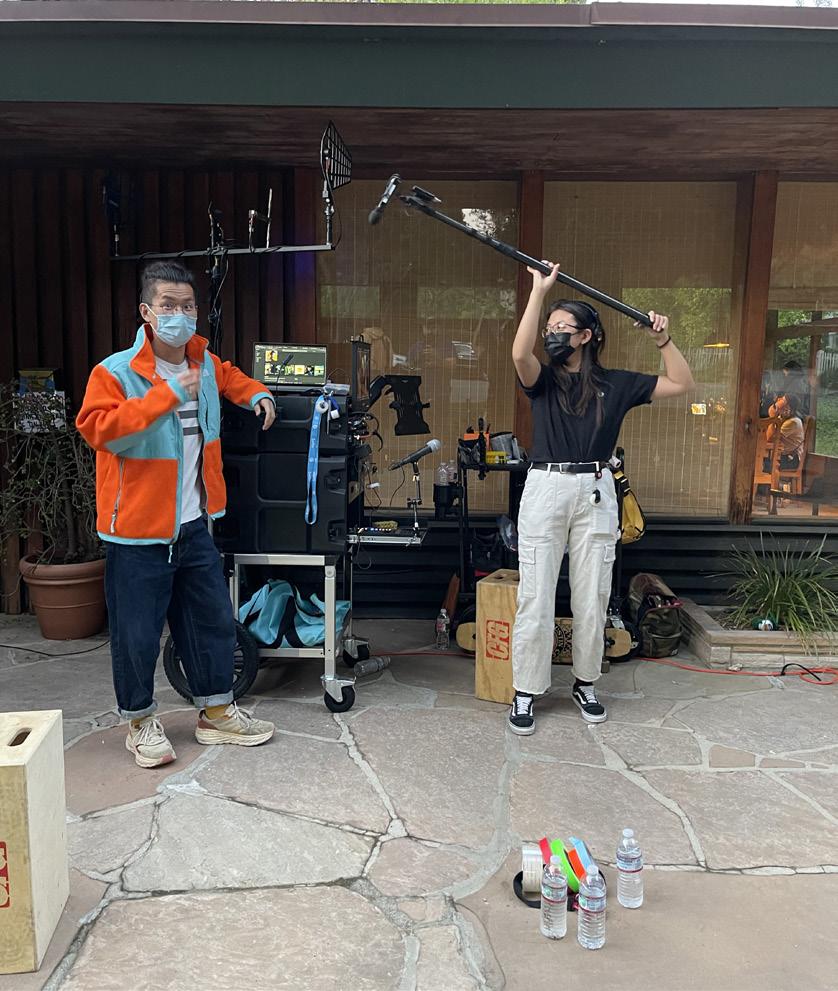
“It would take about 5-10 seconds to see and hear how it looked in the venue,” Xu explains. “We had a lot of backup solutions and thankfully we didn’t need to use them. My worst nightmare was someone else switching on another transmitter in a similar frequency like mine, but luckily it didn’t happen. There were a lot of people from different teams cramped into a small studio, and the tension in the room was palpable, so there was certainly a decent amount of pressure!”
It turns out that Xu was virtually the only one on set not to be visited by gremlins. “There were problems in Rome and in L.A with video, lighting, cameras, and having sufficient bandwidth to broadcast a huge 3D image of Tom Holland across an ocean. There were no problems with audio, which made me look pretty good,” he grins. “The reliability is why I don’t think I’d ever use anything but Lectrosonics.”
Xu has forged an unconventional path for Jzoo Studios, and with that comes unconventional wireless applications, for which he finds Lectrosonics to be more than up to the task. “I don’t think a lot of people do this,” he says, “but I use Lectro for sound design and to record sound libraries. Lectrosonics’ sound quality makes that possible because it’s so fantastic. I sometimes even think I can tell when I watch certain TV shows or commercials if it was used. I’m like, ‘Yup, that sounds like Lectro!’”
His Lectrosonics kit saved the day again on a recent music video series for Panic at the Disco!’s album release:
“We were shooting in a house on a hill that was extremely busy in radio frequency, and due to the location I was forced to be rather far away from the set, and there were many people in between my antennas and the talents,” he recalls. “Yet, I was comfortably relying on the good power of my SMQVs while it paired with ALP620s and SRc. Lectrosonics also came in handy when it came to IFB transmission. With the reliable transmission of SMQV and T4, I was
comfortably sending audio feeds to my boom op and to clients that were 200 feet away. The antenna and receiver front-end rejected the IFB transmission really well and I was seeing very little noise increase with the high power transmitter in the proximity of my receivers.”
“I have always had great confidence in the aluminum housing all Lectro’s products, and I have never sent anything in from any drops or knocks,” he points out. “All of my transmitters are loved, with all the random dents and scratches from all shows – the stories are countless. It ranges from an eight feet freefall onto concrete to taking the entire weight of grown men as they violently sit down. There are so many fun stories and thankfully Lectro survives another day!”
“THE TENSION IN THE ROOM WAS PALPABLE, SO THERE WAS CERTAINLY A DECENT AMOUNT OF PRESSURE.”




I went to college to do electrical engineering, with a specialty in chip design. When the time came to do my dissertation, or thesis, I found out there was an internship going at Philips here in Belgium, in their sound and acoustics group. I did that for half a year, and from an engineering perspective got the chance to dive into some very cool and interesting topics like psychoacoustics.
In 2009 I was struggling to find work, so I went into teaching for a little while.
Then I got a phone call from a former colleague at Philips, and I ended up working there for another year as a sound and acoustics engineer. Then another former colleague from Philips left for a startup called Auro Technologies, which was developing codec technology for 3D audio. I started working there doing a bit of everything; from algorithm design and prototyping to doing demos and pre-sales.

I learned a lot there for about seven years, and it was also there where I met Robin Reumers, because that startup was located in the Galaxy Studios building here in Belgium. So then as a research engineer I got to actually work in a music studio alongside mixing and post production engineers.

Could you start by telling us about your background in audio?Pictured: Joe Chiccarelli
When did the idea to create Leapwing Audio first come up?
In the fall of 2015, Robin came to me with this idea and a concept he was working on for a multiband compressor. It was something we agreed would be useful, and that became the first real driver for us –making something new that we could benefit from ourselves. That idea was based on the hardware chain that Robin used while working with his mentor, Bob Katz.

I was up for a weekend project, and so we soon set about working together on DynOne. I basically did the development, and evaluated a bunch of filters and compatible algorithms. I then got in touch with a programmer friend of mine to develop the actual plugin, so that was the point when we started getting some other people on board. At the start of 2016 we actually started the company to have some form of legal protection, and so we could get the licenses we needed from Apple, Avid etc.
Tell us more about your role at the company.
We’re a small company, so I tend to be a bit all over the place. As director of R&D, I am responsible for the whole plugin design and development, and for delivering a product or a range of products that actually work correctly and are maintained correctly. I have the end responsibility that the products that get sent to our clients actually do what we promise, keep doing what we promise, and any bugs are fixed. So there’s a project management aspect to it as well, and then the algorithm design – coming up with new ideas, prototyping etc… I’m mixing a bit of everything. Robin on the other hand is the interface to our customer base, and is essentially the face of the company.
What is the company’s overall goal from a user perspective?
Our main goal is to make products that are easy to use and simple, with not too many controls, but
under the hood contain some complex and innovative processing.
As an example, our StageOne plugin has a Width fader, which you would expect to make the sound image a lot wider than stereo when turned up to 100%. Under the hood however there’s a whole bunch of parameters that are being mapped to that one single slide. We try to map and tune those parameters in a way that’s easy and intuitive to use with a very limited amount of interaction.
How have your recent signature plugins been received by your customers, and how did these collaborations come about?
We hadn’t actually ever thought about doing a signature plugin before we decided to push on with it, but as soon as we got in touch with Al Schmitt, one thing led to another and before we knew it we were basically modeling his hardware. He really wanted to work with us at the time and it was an opportunity we couldn’t turn down.
Robin sat down with Al, as well as with Joe [Chiccarelli] multiple times, analyzing the way they work. They shared a lot of multitracks and discussed how their studios are set up for different projects and for different types of recordings.
When it comes to designing these plugins and their mechanics, my role should kind of be invisible to the user. And we’ve had some really nice feedback so far.
Who is your main audience, and what have you currently got in the pipeline?
Our audience for the products we have out now is mixing and mastering engineers; those who are
using them for professional or semiprofessional projects. However, there’s no distinction or difference anymore between an engineer working in a major studio and someone working in their bedroom. They use the same MacBooks or Mac Pros – it’s just the peripherals and outboard gear that varies. And while our price point I would say is above the average of most plugins, we do like to have a limited portfolio, with products that each fit specific uses with little overlap.
We’re always working on multiple things at a time, like new plugin concepts. I’m expecting to have more details to share by Q1 2023. The work
itself is always interesting for me, and without our loyal customers we wouldn’t be able to do what we do every day.
“WE TRY TO MAP AND TUNE PARAMETERS IN A WAY THAT’S EASY AND INTUITIVE TO USE WITH A VERY LIMITED AMOUNT OF INTERACTION.”
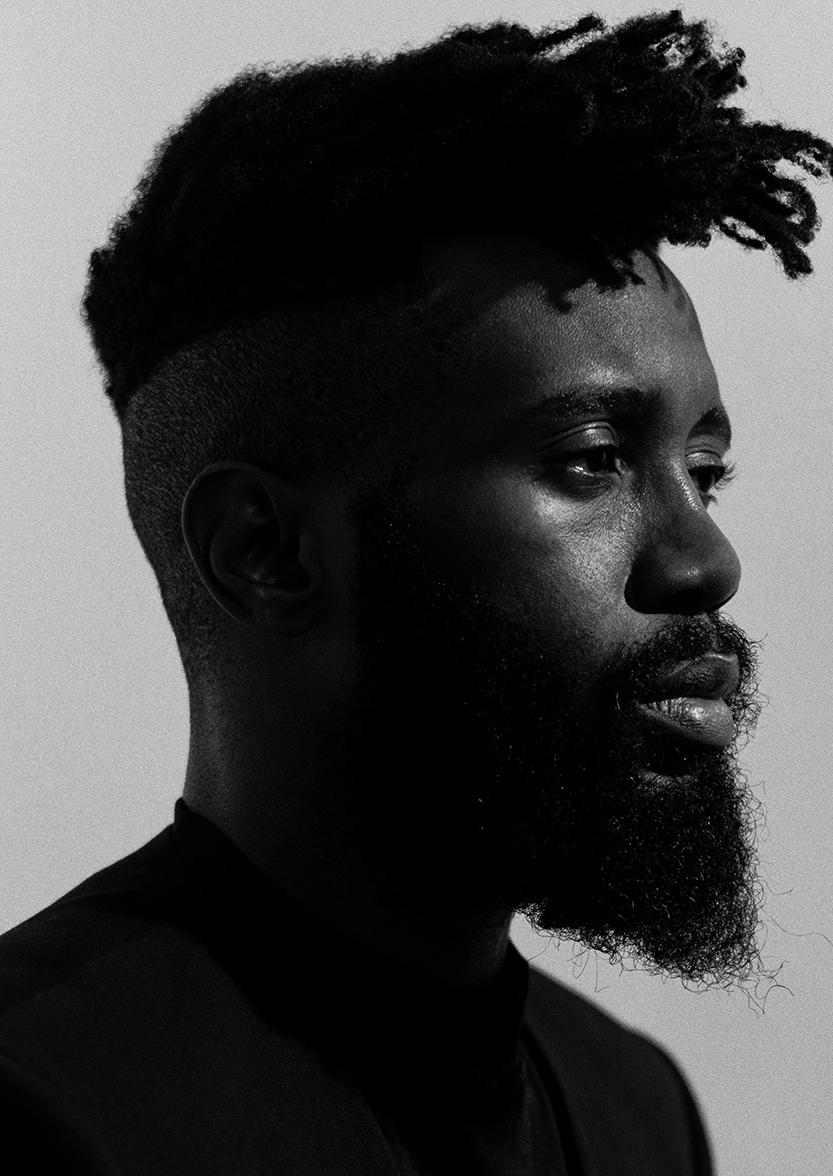
Having split his life between Lagos and Dublin, and now swapping Los Angeles and London depending on which film he’s working on, Ré Olunuga brings a greatly needed wealth of culture, experience and creativity to the world of film composition. He recently scored Rise for Disney+, the remarkable true story of three fellow Nigerians, the Antetokounmpo brothers, who overcome a devastating journey from Africa, across Europe to America, where they become NBA sensations.
While Olunuga’s childhood home of Lagos, Nigeria, is no longer his main base of operations, he calls the city the “geographical heart” of everything he does. Considering himself to be a storyteller as well as a composer, he often draws on the vivid memories of growing up in Africa’s second most populous city to inspire his music.
“The entire country [of Nigeria] is musical,” Olunuga says in his very measured, calming voice. “Every single corner, every single part of the city was just immersed in this texture of sounds. Even the languages are musical, very tonal languages. So I definitely had a musical upbringing. I didn’t have classical training or anything like that. It was just part of the lexicon that existed for communicating between people and understanding the world.”
Olunuga began his forays into music learning the piano, but simply playing the instrument left him with a yearning for something more.
“I felt instinctively that the piano wasn’t enough, there were more sounds that I wanted to add or feel. I started playing with bands, I started to write music for different bands, and friends in Lagos. Then I went to school in Dublin and got into the music scene over there, and wrote for more bands. I was not
thinking about music as a career, it was just something that I loved, something that I like to do.”
It’s fascinating to learn Olunuga moved from Lagos, which he describes as being completely musical on every corner, to Dublin, widely seen as one of the best cities in the world for busking and street performances — music is similarly inescapable when you wander the Irish capital’s center.
“It was thanks to Dublin that I started to see music as a possible career,” he reminisces. “The other side of the coin of music being everywhere [in Nigeria] is that it wasn’t something that was traditionally presented as a career option. It was something you did for fun. And this isn’t to say Nigeria isn’t full of great musicians who have built amazing careers. I just didn’t see my particular approach to music being presented as a career. The thing that Dublin gave me was seeing people my age – 16 – who had locked into the idea of music as a career, pursuing narrative music or whatever version of music as a serious thing.”
Thanks to the nature of the music Olunuga was composing and the sorts of people he was rubbing shoulders with, particularly as he moved to London, he started to
find work writing for production companies and for advertising and commercial films. His ensuing career of 16 years has seen him work on shows, films and projects from across the UK, the USA and Africa. It’s fair to say that when the huge opportunity in Rise for Disney+ came about, this very exciting composer had fully paid his dues.
The film is one of those stories where you double-take at the fact it’s a completely true story, and not simply the work of some genius script writer. It shares the story of the Antetokounmpo family, who perilously emigrated from Nigeria to Greece, and then the United States. Despite all the huge strife they encounter along the way, their sons discover they are exceptionally gifted at basketball, something which changes the family’s fortunes once in America.
“I read the script, and the first thing that I connected to was how much it was a love letter to immigrant parents, and how they sacrifice so much for better opportunities for the kids,” he says. “That really touched me, and it was a true story which shows the challenges the family faced and the hurdles that they had to navigate. But at the end of it, they had this realization of success. It’s one of the most beautiful stories, fictional or real, that I’ve ever read.”
“IT WAS THANKS TO DUBLIN THAT I STARTED TO SEE MUSIC AS A POSSIBLE CAREER.”
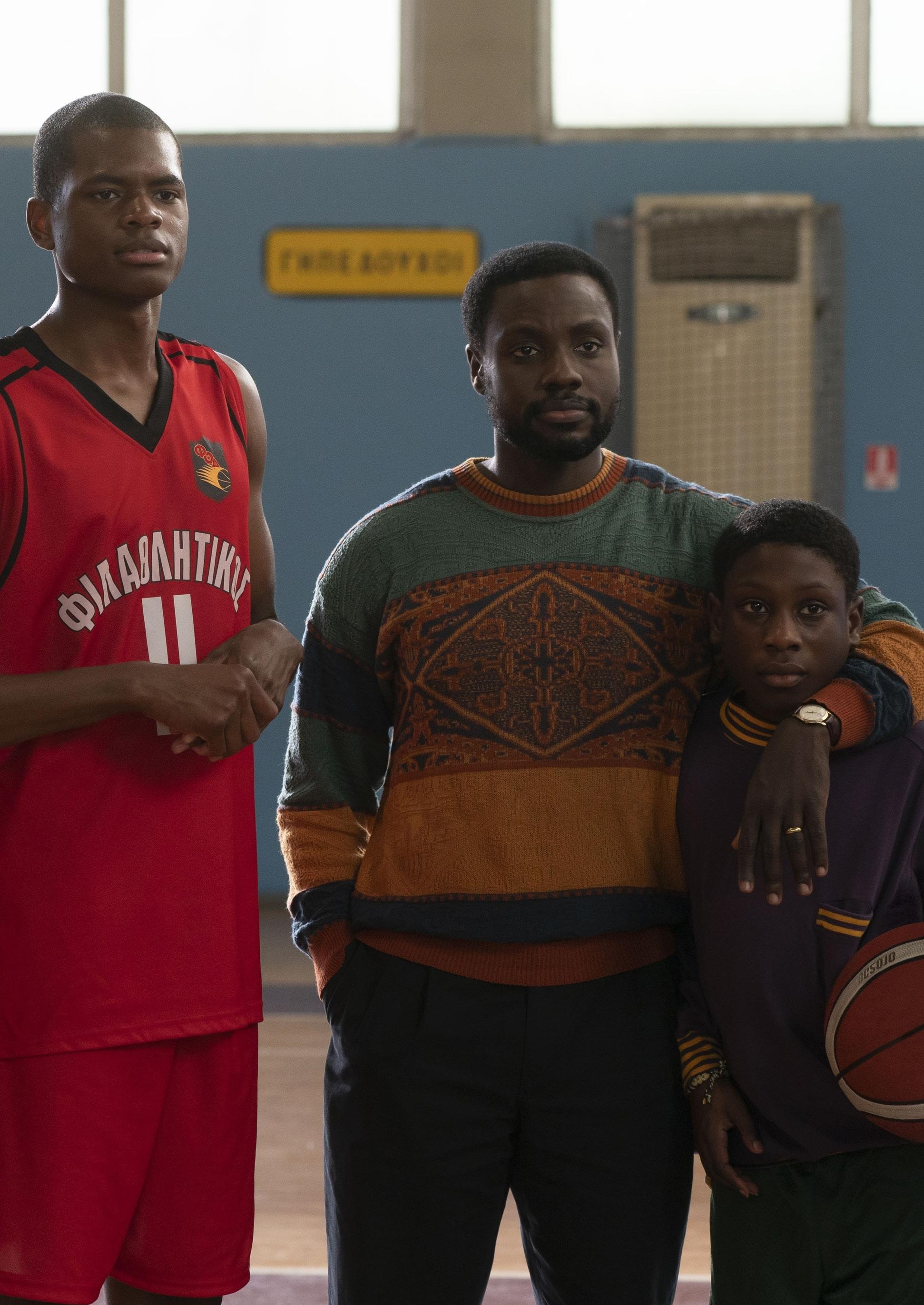
In the music, Olunuga paints a gorgeously cinematic sound with strings, piano, solo violin passages, percussion and interweaving themes. “I was really lucky that the director and I [Akin Omotoso] were on the same page in terms of the tone, how we wanted it to feel and what we wanted the audience to experience and take away from the film.”
Despite the very international settings of the film, Olunuga was careful to not fall into the film music trope you often hear where the music reflects the location of the scene in a very on the nose way. For example, if the characters arrive in Egypt, some composers might opt for very stereotypical Egyptian music with authentic instruments. Olunuga wanted his music for Rise to be more subtle and character-driven, with tasteful instrumentation as a nod to the Antetokounmpo family being from Nigeria.
“What I wanted to mirror was the fact that the family had created their own world,” he explains. “I think that’s something a lot of immigrant families, or anyone who travels, can relate to. When traveling, you’re always a little bit separate from everything else. If you’re having a crisis, or dealing with heartache, or feeling joy when you’re in a country where you’re not exactly from there and you’re not as connected to everyone else, it’s very interior. What was great about the film was that the family had each other. As soon as I could establish the palette of sounds for their story, it could remain the same all through the film. It almost didn’t matter where they were.”
Far more than a stereotype, it’s statistically the case that your typical film composer tends to be a middleaged white man. The conversation turns to the great need for more voices from across the world in the realm of film scoring, and of course, the film industry at large. Not just diversity for diversity’s sake, but for a greater breadth of perspectives and creativity to breathe more life into the cinematic art form that is loved by so many.
“As an art lover myself and as a person who enjoys stories, I’m excited at the possibility of hearing far more voices,” Olunuga says. “Of all the art mediums that exist, film is the most wide reaching. People all over the world watch films and TV shows, as well as listen to music. So it really makes sense that more people in the world participate in that medium. More people in the world have the opportunity. More options, more variety, more choice — not just to have diversity to be politically correct, but to make film the best industry it can possibly be.”
Olunuga then discusses his preliminary work in the studio for Rise , with Spitfire Audio transpiring to be an important part of that. “I basically only use Spitfire for orchestral stuff now,” he says. “Because I know what I want it to sound like in the eventual recordings. It’s important to have the directors and producers in the studio get a sense of what it’s going to sound like eventually, and be able to approve something that is as close to the final thing as possible.
“But really, what’s most important for me when I’m writing is that I’m inspired by the sounds. And Spitfire has been one of my favorites so far. I have the entire Symphonic Library. But I also use the Solo Strings and the Chamber Strings, sometimes, because of my various orchestration choices that I make.”
Olunuga is moving onwards and upwards — he will be scoring Supacall, an upcoming British show from Rapman that follows the success of his directorial debut in Blue Story . And also 2023 film Drift with a host of stars including Cynthia Erivo and James Paxton. Thank goodness he is lending his voice, and stunningly unique sounds to the world of film, shaped by his international background. Rise is available to watch now on Disney+, and its wonderful score is also out now.

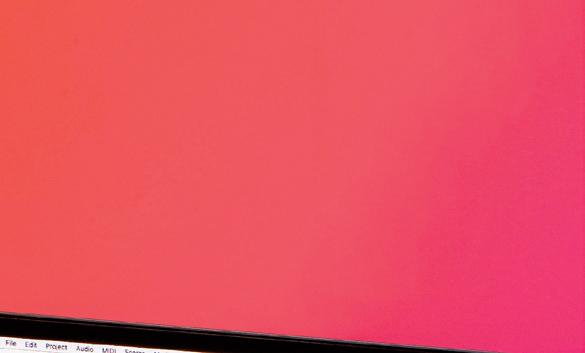
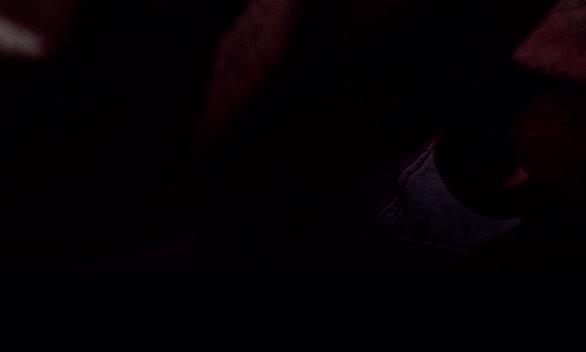






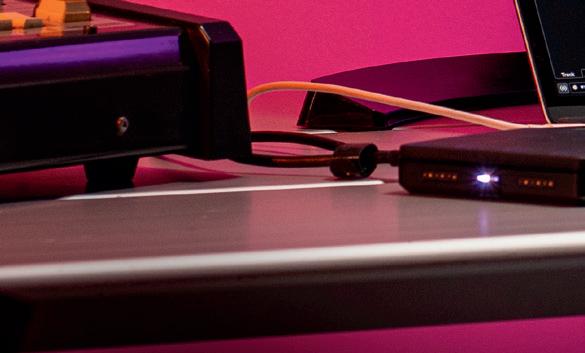



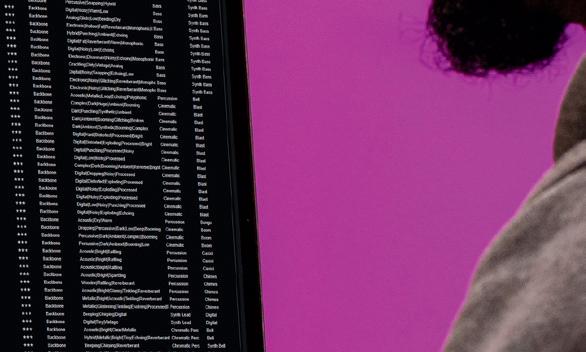





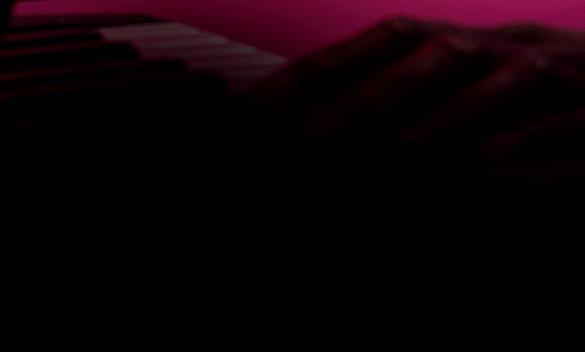
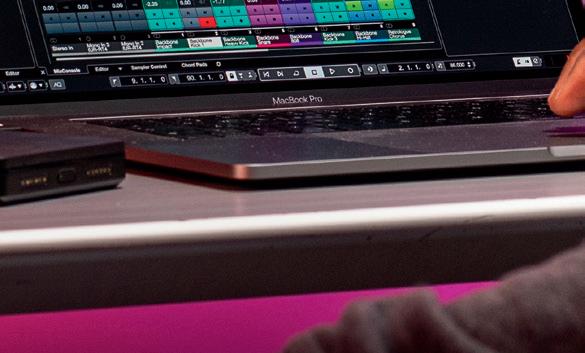




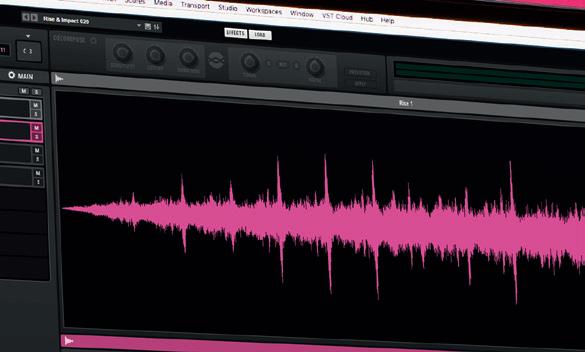
A revolutionary way to design your own drums – Backbone is your new, innovative drum designer for single kicks, snares, hi-hats, percussion, rises, hits and more. Layer up to eight samples and shape them with classic subtractive synthesis, decompose samples into tonal and noise elements and re-synthesize samples to manipulate them in unheard ways.
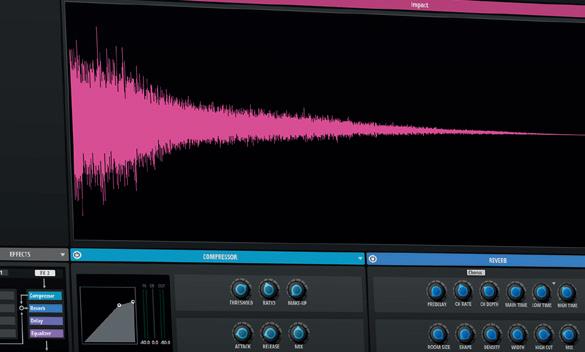

steinberg.net/backbone
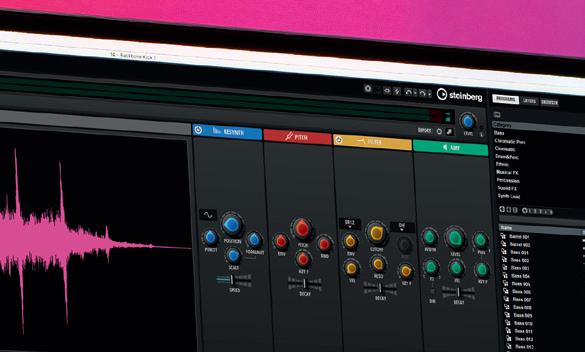

German Lighting Products (GLP) president Mark Ravenhill joins Headliner for a chat about some of the key trends shaping the professional lighting market, pushing the boundaries in event production, and why 2022 has been one of the company’s busiest years on record…
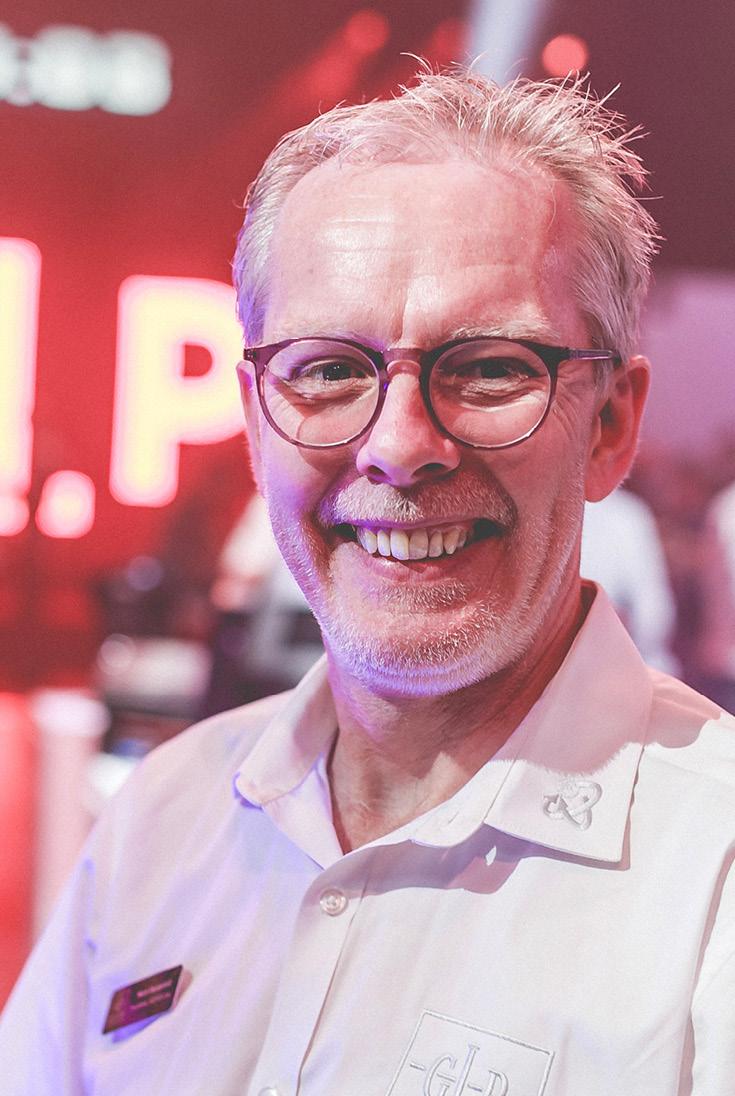
From studio sets to the live stage, the past 12 months have seen GLP systems deployed in a typically vast and varied array of settings. Artists such as George Ezra, IDLES, Scorpions and Ed Sheeran have all benefited from the company’s innovations this year, while its products have also helped to revamp TV productions such as the German version of I Can See Your Voice
Headliner caught up with Ravenhill to reflect on an “adrenaline-packed” 2022, the future of the industry, and the ever-evolving nature of the business…
Tell us about your entry to this industry and how you arrived at where you are today?
My journey started way back in high school. A leaflet went round looking for help on a production of Grease, which a local amateur dramatic society was putting on, and it started from there. They needed some people to help out backstage, and one thing led to another and a college course came along, then I joined my first theater in the town of Winchester. I then hooked up with a company called Martin Professional, who are an automated lighting manufacturer based out of Denmark and I worked with them for a number of years developing various product ranges, and then I went on to GLP, where I came out to America starting the GLP office over here in 2009. And have been growing it since then.
With live shows back to their fullest since the pandemic this year, have you noticed any long-term changes to the way the industry operates?
It’s been a really interesting period. There have been lots of short-term adjustments that needed to be made but there have also been long-term adjustments from a manufacturing point of view. The whole supply
chain is a much spoken about issue and continues to be an issue. We are still finding components with a 52-week lead time, so we are having to adapt the design of our products. That brings its own challenges.
For a while there were longer notice periods. We were talking to people about their shows and events with
greater knowledge of when things were going to happen, and that was a healthy thing that needed to happen anyway. It felt like before covid, too many decisions were being made too late in the day and it was putting unnecessary pressure on the whole system. It really didn’t need to be like that because tickets had already been on sale for nine months. Post-covid a lot of people have realized you can’t just do that, because gear and people may not be available.
There does, however, seem to be a trend that things are reverting to shorter notice again, which is a little bit frustrating. As far as I’m
concerned, the more knowledge everybody has, the better equipped we can all be to deliver the best events and shows possible.
Have you observed any trends regarding the type of productions artists are demanding?
We saw a massive shift early in the pandemic in regard to studiobased work, be it music videos or television items, with virtual reality or augmented reality facilities being built. Those things, as well as having a huge video element, also require specific lighting. So having the right quality of light has always been an important factor when it comes to those projects; having something that
renders color quality and not just a person’s face and skin tone, but also what they are wearing.
In the live environment, we are seeing performers and artists wanting to include their audience more and more, with things like wristbands that can be controlled and lit up. I know there is some new technology coming along that will be able to do that with people’s cell phones, so there won’t be the environmental issue of ‘what do we do with all these wristbands’ after the show. That technology will be tapped into with things like big color waves.

Tell us about Ed Sheeran’s Mathematics tour. It was described by Ed’s production manager as his “most expansive set design to date”.
From the beginning, everything was designed for a stadium-sized show. He plays an in-the-round style, so he’s right in the middle of the field of play at every stadium and the audience are all around him. The design team, headed by Mark Cunniffe, worked with him closely. Mark has been with Ed for a number of years, so they have a great partnership. They designed this system with a circular stage that has different sections, with one of them continually spinning. Then, placed around that, are stations with all of his equipment dotted around the stage, and they are all linked together, so he can effectively pick up on any one of these sections and move all over the stage. And building out from that are these massive pylons which include guitar pick-shaped video screens, so however far away you are from the stage you have this great view. It’s a phenomenal show. Yes. Every department of that creative team is trying to push the boundaries
more. We’ve seen a number of shows this year with artists stepping up and doing something different. The Weeknd was a good example. He went out with a system designed by Jason Berry, performing here in the States at baseball stadiums with a catwalk going right out into the audience, lit all the way along. The way he used it as an element of the show and the way he was lit on it was just great. It was really spectacular.
Also, one that not every artist can do, is what P!nk does. She’s an acrobatic artist and she straps herself into a wire system that flies her around the venue and gets her close to the audience in such a different way. She has to be lit while she’s doing that, so there is that collaboration between the different elements. So yes, we are definitely seeing artists trying to do more and more with their shows.
place we could gather large people again. So having equipment that can live up to being outdoors is something we get more requests for now.
The exciting thing is that for a while we thought that this level of shows couldn’t continue, but I think now that it can. There are a lot of artists who want to get out there and perform, and a lot who haven’t gone out on tour yet. At some point we will get back into a cycle of artists going back into the studio to make new music, but there are still a lot who haven’t gone out to do some big tours yet since the pandemic. I think it’s going to be exciting to see all of that happening and the creativity that is going to come out of that as well.
Are you seeing more of a push to make set designs as spectacular as possible?
The supply chain remains a major challenge. But the one thing I learned during covid is that you can’t get too stressed about the things that are out of your control. You just have to make sure you have contingencies. The other thing that we saw is that a lot of shows have gone outdoors. It was the first
What are the biggest challenges in the market you face going forward?
“WE WERE ASKED TO DESIGN A SPECIFIC FIXTURE THAT DIDN’T EXIST BEFORE AND IT WAS CUSTOMIZED SPECIALLY FOR THIS ED SHEERAN TOUR.”


Rocky Horror Show musical supervisor Greg Arrowsmith and musical director Charlie Ingles take Headliner behind the scenes of the legendary show, as the iconic spectacle celebrates its 50th anniversary. Here, they discuss the enduring appeal of the show, the importance of live musicians in musical theater, and how the new Korg Nautilus has allowed them to ‘remaster’ the production for the stage…
It may have been around for half a century now, but the Rocky Horror Show remains a production quite unlike any other. Ever since Richard O’Brien’s musical masterpiece exploded onto the public’s consciousness some five decades ago, it has not only continued to attract sell-out crowds the world over night after night, but its celebration of individuality, inclusivity, and freedom of expression has never not been relevant – never more so than today.
Of course, the costumes, the glamour, the flamboyance, and the extravagance all play their part in making the Rocky Horror Show one of musical theater’s best loved titles, but for many, its most enduring aspect is the music. The songs, it goes without saying, speak for themselves, but each and every sound and effect contribute equally to the creation of this wonderfully unique universe.
Central to this aspect are the show’s musical supervisor, Greg Arrowsmith, and musical director, Charlie Ingles, who recently welcomed Headliner backstage during the show’s stop at The Belgrade Theatre in Coventry. Here, they walked us through the role they play in delivering the Rocky Horror Show’s musical component and the impact it has on the audience. They also open up on the transformative effect the new Korg Nautilus workstation has had on the production, both in terms of how it has helped to modernise the show, as well as how it has changed their approach to playing their instruments and the simplification of their workflow.
Over to you, Greg and Charlie…
Keyboards are a vital part of this show. How do you utilise them on the Rocky Horror Show?

Charlie: Keyboards in theater have become such an important part of it. If you look back 50 years, a conductor using a keyboard was obviously non-existent, but it has
really become second nature to us. There is the control that you can achieve with a keyboard that you can’t with a baton, and with this being such a rock’n’roll show it’s important that we are part of the band, we are a musician with them. But there is something collective about being at a keyboard with this cast that always feels like an ensemble piece, and we feel part of it rather than leading it. We have so many different sounds on this show, and it’s not just piano. We have space sounds, bells, organs, and it’s vital that we have a keyboard where you can get those sounds as easily as possible, so the show is as smooth as possible.
Tell us about the Korg Nautilus you have recently employed for this show.
Charlie: We’ve just moved over to the new Korg Nautilus and what really excited us about it is that previously we were using two different keyboards to get two different types of sound. This new Nautilus has so many inbuilt sounds, but also fantastic software that allows us to programme things
in such a way that we can move from patch-to-patch throughout the songs with as much ease as possible. It’s not like old school keyboards - it has hundreds of sounds for piano, strings, woodwind. And I remember when I first came on to this production, saying it would be lovely to have multiple piano sounds for this show, and that’s where the conversation started. We always had a generic piano sound, whereas as soon as we started researching this Korg Nautilus and its various piano sounds, it really sparked our excitement. It’s allowed us to add a little bit of sparkle to the show.
Greg: I’m not a technological person at all – I understand notes, not nodes – and for me it is incredibly easy to operate. We often have to do things on the fly, especially when we are setting up a new production, so you can get into the bank or the page that’s required and it’s all clear on the screen. And the way we can switch between patches is fantastic. It’s really user-friendly, which for someone like me who is a bit of a dinosaur, is so helpful.
How crucial is that intuitive ease of use when working on a show like this, where so much is done on the fly?
Greg: The convenience is probably the most important factor. I’m not often on the show, and if Charlie is unwell, we have to get someone else in to effectively sight read the show. So if you have a set up where someone who really only wants to read the notes finds they turn a page and it says ‘press up down four times then press this’, it’s a complete nightmare.
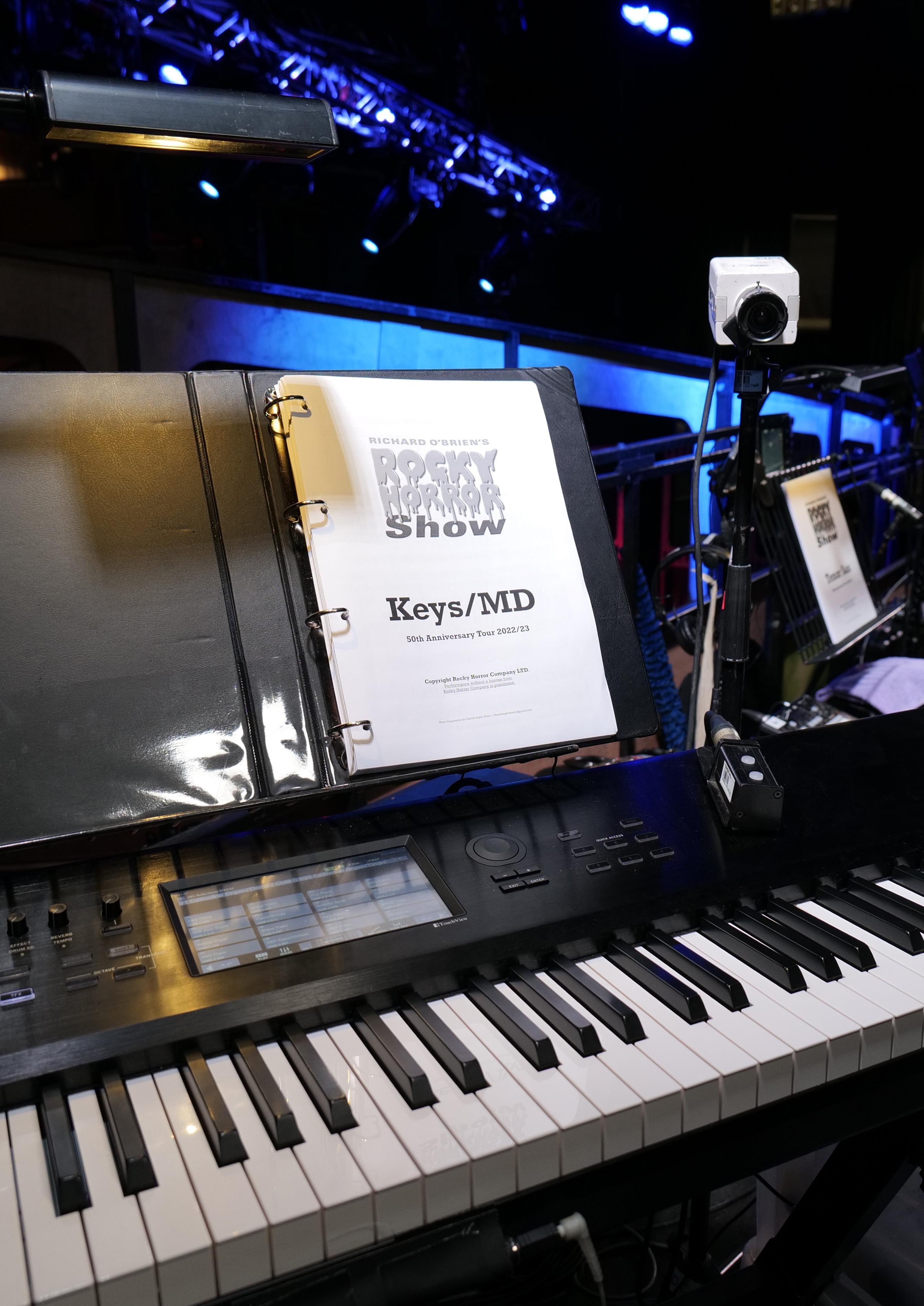
This is such a straightforward layout that no one has to worry about the technology, which is fantastic.
Charlie: Sometimes technology can go wrong, and it can be quite difficult to get some setups to move to another keyboard or another show, but this is set up so brilliantly that we can literally take our programme info and put it onto another Nautilus straight away.
You have described the Nautilus as having allowed you to ‘remaster’ the Rocky Horror Show. Can you elaborate on this?
Greg: The show is 50 years old now and I’ve been in charge of the music department for a year, and I just felt like it was ready for some modernisation. It’s very important with the Rocky Horror Show that it remains true to its roots, but there are certain audience expectations that have changed over the years. It felt like the right time to update some sounds, update some harmonies in the company and slightly modernise it. That’s what we’ve been doing with the Nautilus. We now have multiple piano sounds, which is really important. A rock ‘n’ roll piano sound shouldn’t sound like a honky tonk piano; a Steinway Concert Grand with reverb on it shouldn’t sound like an upright piano. We’ve now been able to fix those things, and they may be things that the audience doesn’t necessarily notice, but they’ll know something is better.
Charlie: I find it really exciting to come onto a show, see how something is being done, and then find a new color and a new life for it. But this show has had so much success because of its roots that we have to stay true to that. The Nautilus has lifted the show in such a way that everyone knows something is different but they don’t quite know how. People don’t necessarily think about having the different piano sounds on a show, but we notice the difference as pianists. You hit the key and it responds in a way that that piano would, which I find remarkable. You play a rock ‘n’ roll piano, and it feels and sounds like you’re smashing a rock ‘n’ roll piano. You get to a pop piano and it has such brightness that it cuts through like never before. For me, it’s changed the way I
play the show slightly, because my fingers are reacting to it in a different way.
How important is it to keep looking at ways to modernise long established stage productions?
Greg: This is something we could apply to a lot of different shows. Shows like Les Miserables and Phantom Of The Opera have all gone through reorchestration processes recently. What is crucial is that the advances in technology don’t come at the expense of musicians’ jobs. There have been instances where large orchestras have been reduced to very small orchestras because a keyboard can do what 10 musicians can do - that’s not what we are doing here. We are one of the last remaining completely live bands in a musical. Nothing you hear is pre-recorded from a band point of view. It’s a question of modernisation and integrity going hand-inhand, which is really important.

“YOU HIT THE KEY AND IT RESPONDS IN A WAY THAT THAT PIANO WOULD, WHICH I FIND REMARKABLE.”



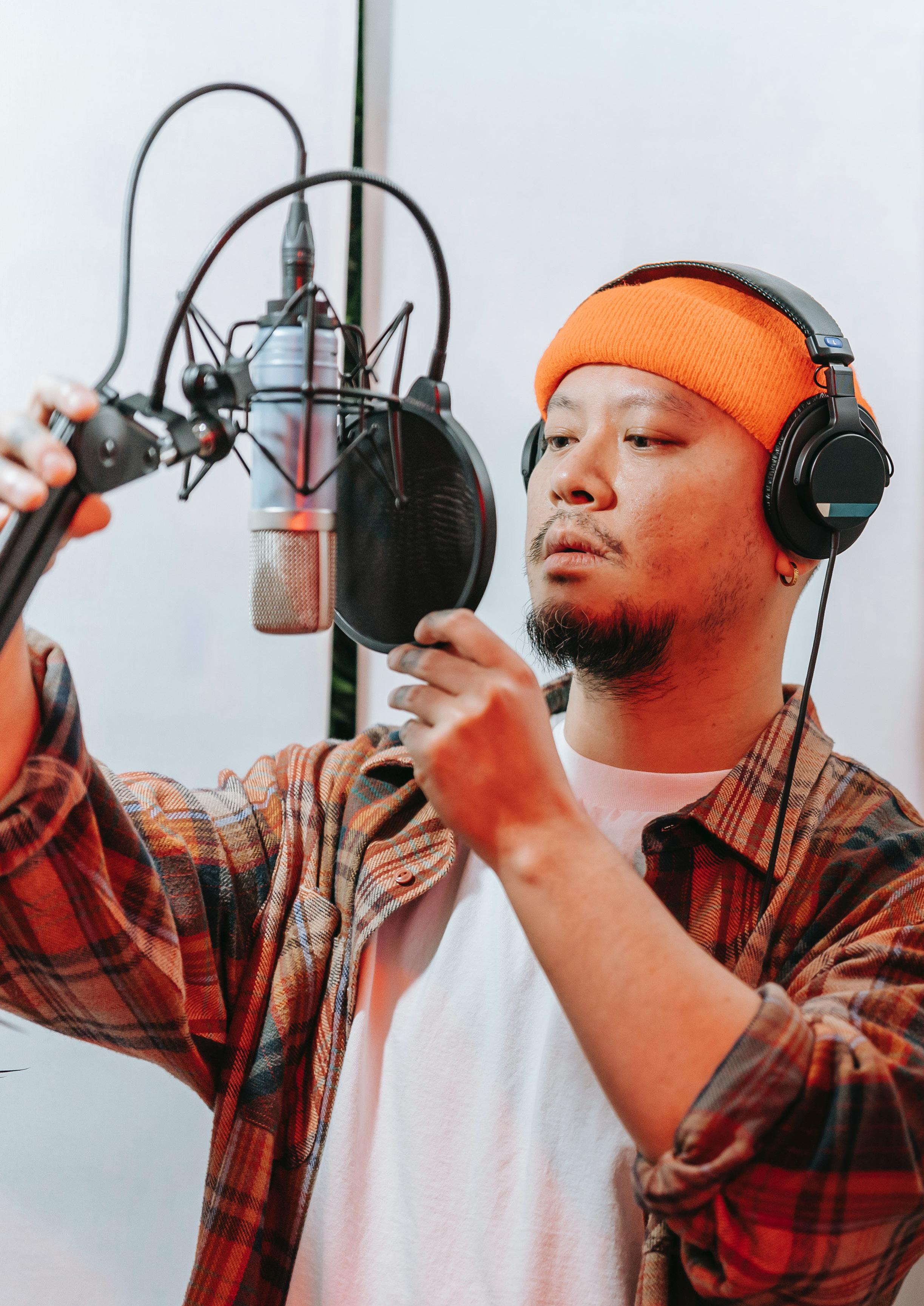
A successful vocal recording session is all about preparation. There’s a time and a place for spontaneity and capturing the moment, but it’s a fact that you will increase your likelihood of success by taking just a few extra steps before rushing for the recording button. Given that vocals sit front and center for the vast majority of popular music styles, it’s worth taking a little extra time to get your voice and setup firing on all cylinders. Headliner presents this quick-start guide on how to prepare for recording vocals…
Create the Right Atmosphere
Recording Studios (and even home studios, for that matter) can be quite clinical places. The fact is, though, how you feel and how relaxed you or the vocalist are can significantly affect the creative output.
Creating a relaxed atmosphere, including the right refreshments,
lighting, and overall environment, is one of our top tips for recording better vocals, simply because capturing the best performance possible is so fundamental.
The small details are often overlooked when preparing for recording vocals. Getting plenty of
rest, staying hydrated, and eating healthily can greatly improve a singer’s performance.
Your voice is an instrument and a part of your body; it needs plenty of rest, water and high-quality fuel to perform at its best – just like the rest of you for that matter.
Don’t Skip Your Vocal Warm Up
Jumping right into the deep end and singing from the top of your voice is a quick way to cause damage and will invariably affect your pitch.
Many rock performers are guilty of this, as vocals are often a secondary instrument after guitar or bass. It’s often common for performers to be formally trained in the latter and not the former. Being well rehearsed is often overlooked, but the better you know the song and your lyrics, the more confident your delivery.
Also, if you require a lyric sheet during tracking, it could affect your posture and have a detrimental effect on your performance.
recording time, after which the moment of inspiration may already have passed. To strike while the iron is hot, it’s worth having your go-to mic ready to rock n’ roll at all times.
profile of a different mic. For example, many rock and rap vocals sound great and have an easier time sitting in the mix when recorded using a dynamic microphone.
Plugging in and setting up a mic correctly can take up precious
If your budget stretches, consider trialing more than one vocal mic. It’s worth keeping a variety of mics in your cabinet for different vocal styles and performances.
It’s easy to assume a large diaphragm condenser microphone will be the best choice for recording vocals. After all, they’re the most common type of microphone for studio vocals, and we’re used to seeing them in studios worldwide.
For a good reason, they dominate, thanks to their ability to capture a refined high-end and plenty of detail. All large diaphragm mics sound different, of course, so you’ll hear many tonal differences from one model to the next.
That said, many vocal styles and music genres can benefit from the
In your vocal preparations, take that extra few minutes to trial both types, and perhaps even a ribbon mic if you can – you’d be surprised how much it might test your old assumptions.
Clear headphone monitoring can elevate a vocalist’s performance. Make sure the vocalist (be it you or the recording artist) can clearly hear their own performance in context with the track.
If the rest of the track is drowning out their own performance, it can significantly hamper their confidence and pitch, resulting in a sub-par recording. You can enhance a performer’s confidence further by adding a little reverb to the monitor mix. Some call this trick ‘the singing in the show’ effect.

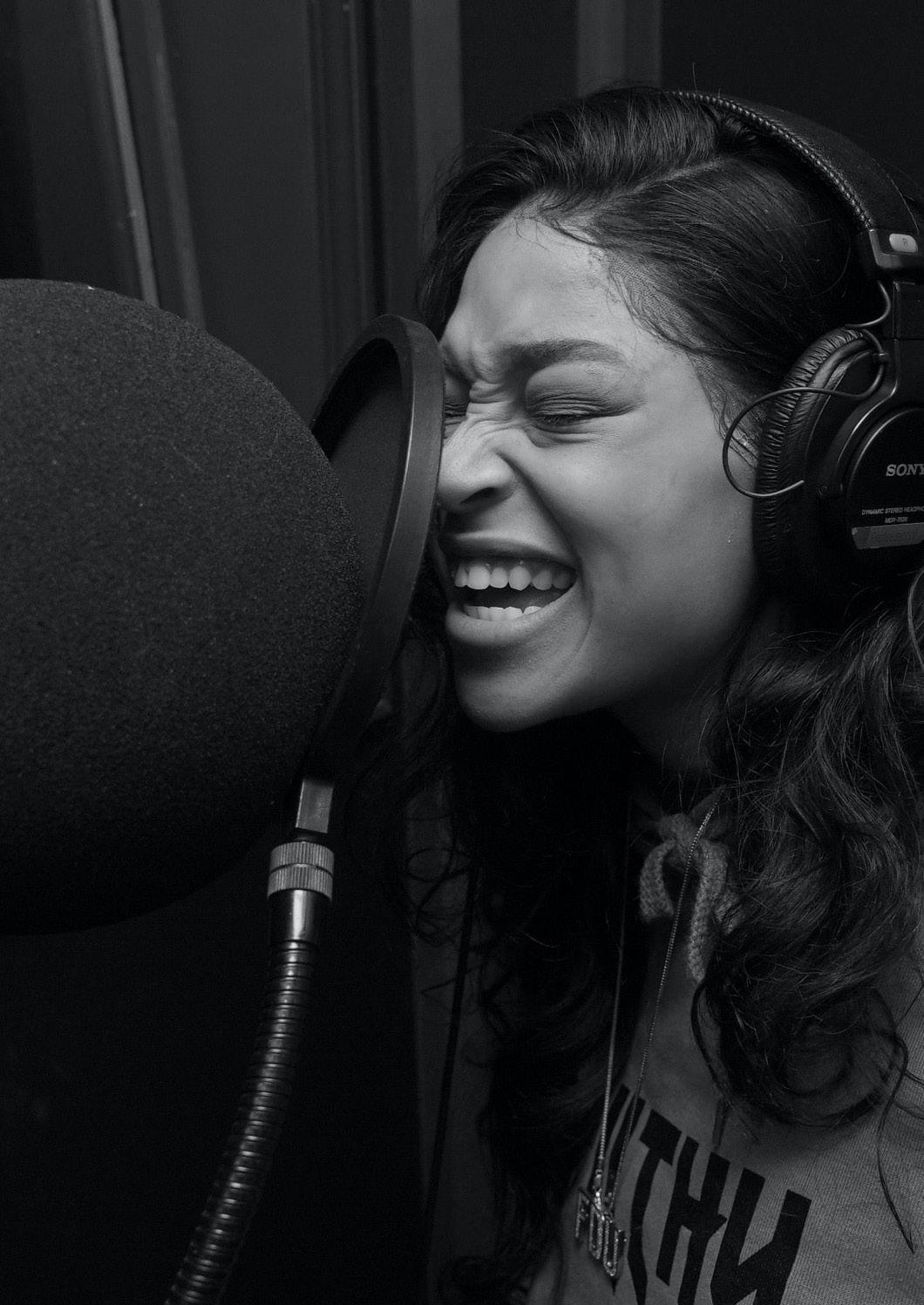
Distance and position of the microphone can make a huge difference to a vocal recording. Depending on your microphone, there are many points to consider here:
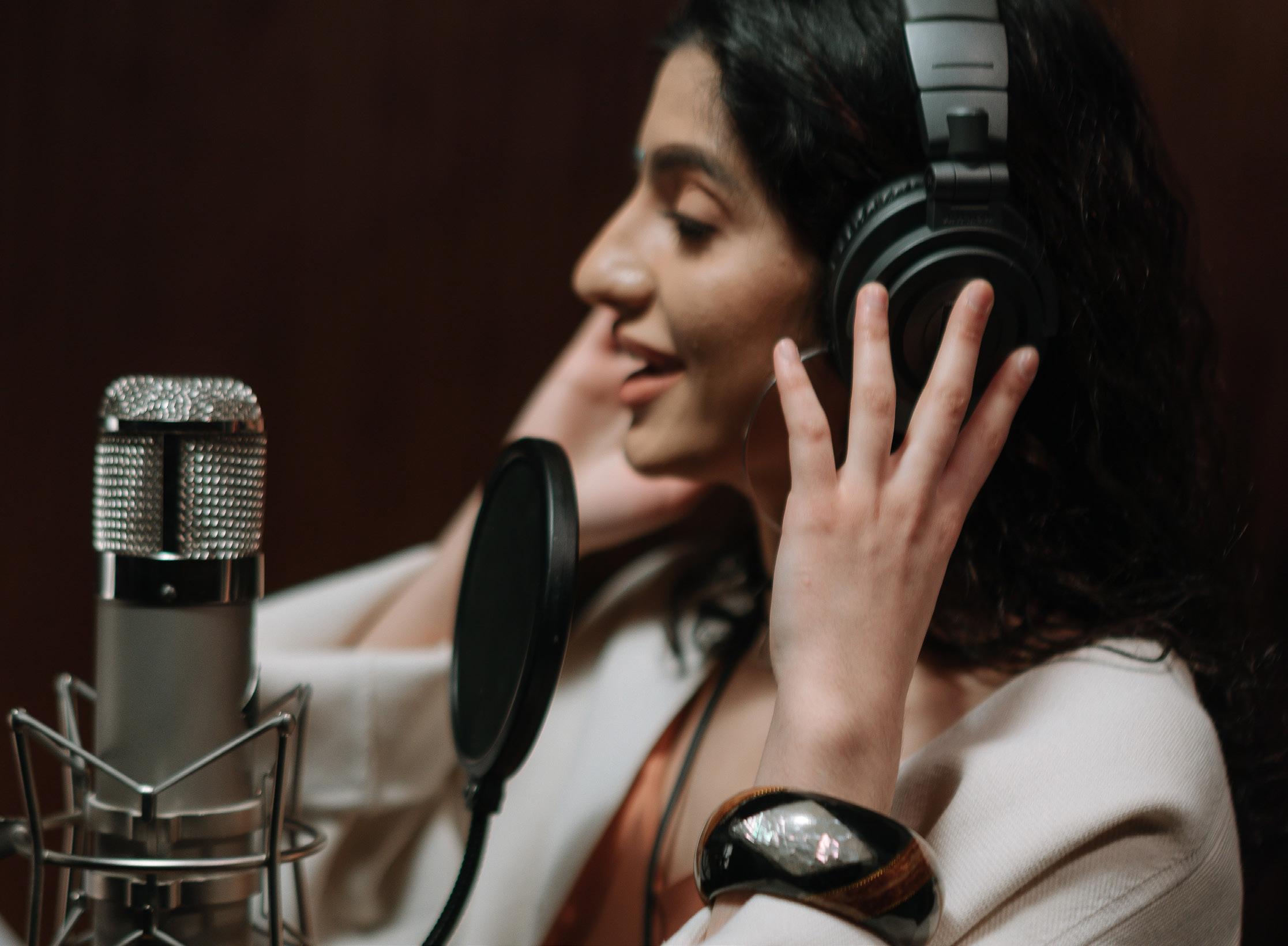
1. As a default position, start with the singer roughly six inches from the mic. Moving closer to the mic increases the intimacy of a recording, while moving further away will introduce more room reverberance.
2. Tilting the mic off-axis or pointing it below the singer’s mouth can help reduce highfrequency sibilance.
3. Good posture will improve a singer’s performance, so keep this in mind when setting up your mic position.
Aggressive ‘P’ and ‘T’ sounds, otherwise known as plosives, can send a gust of air into the mic capsule and destroy a vocal recording. No amount of editing can truly remove or fully mitigate this problem, so it’s best to place a pop filter between the vocalist and the mic to filter these out.
vocalist are in tip-top shape before heading into the studio.
That said, steps one, two and three are the most important aspects of preparing for any vocal recording session. You can have the best gear and microphone technique this side of Abbey Road, but if your voice isn’t warmed up correctly and you’re hungover from last night’s party, you’re setting yourself up for an uphill struggle. Get these stages perfected, however, and you’d be surprised what you’ll squeeze out of the most rudimentary of recording gear.
It’s important not to get hung up on the technical details when recording vocals. Recording, mixing and microphone technique are all important, but you’ll make life a whole lot easier if you ensure you or your
Using amp modellers or IRs? Then check out the revolutionary new Celestion F12-X200. It’s the first and only guitar speaker to combine the Full Range performance your modelling amp requires with the Live Response you need to feel connected to the music. Find out more at celestion.com
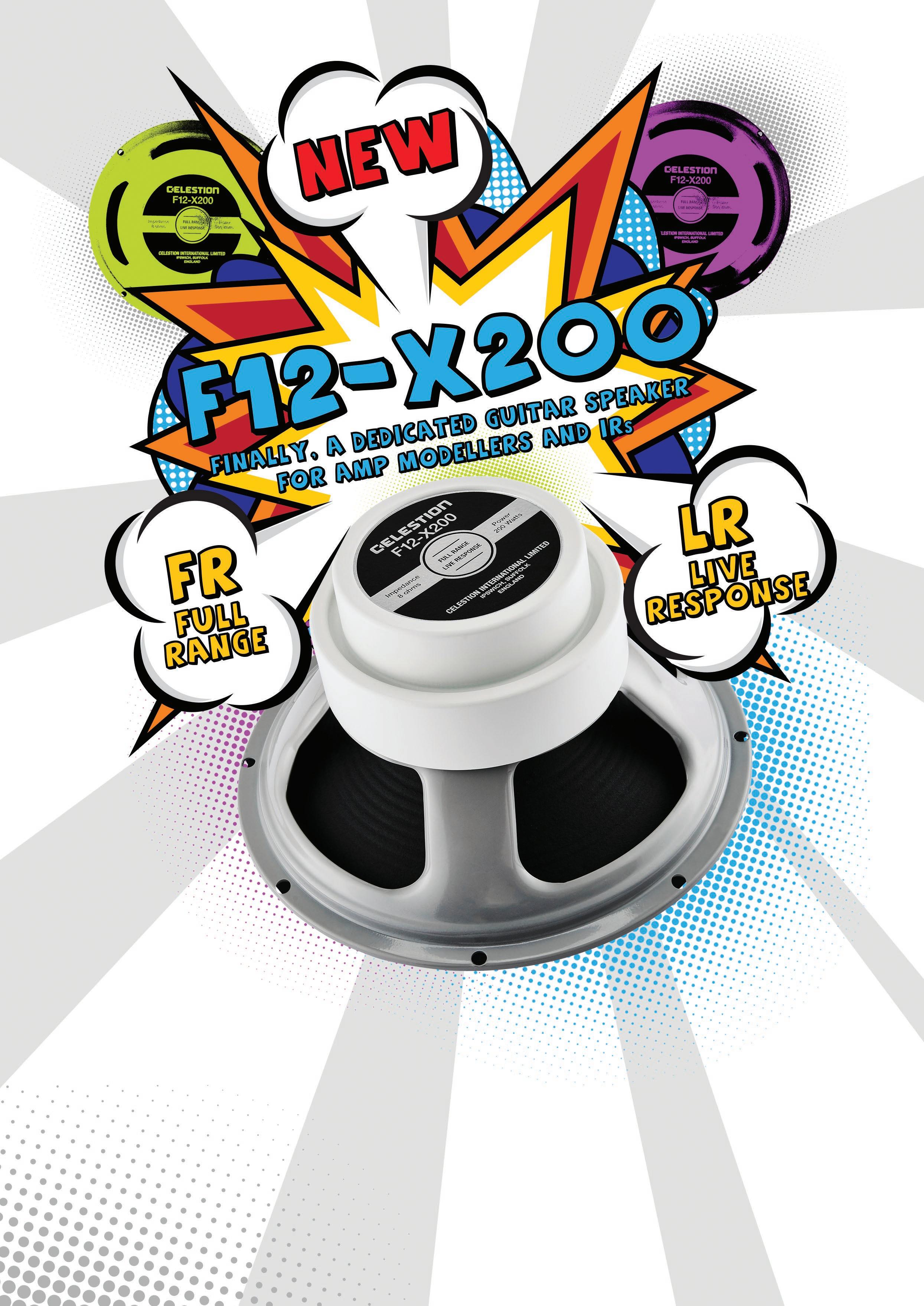
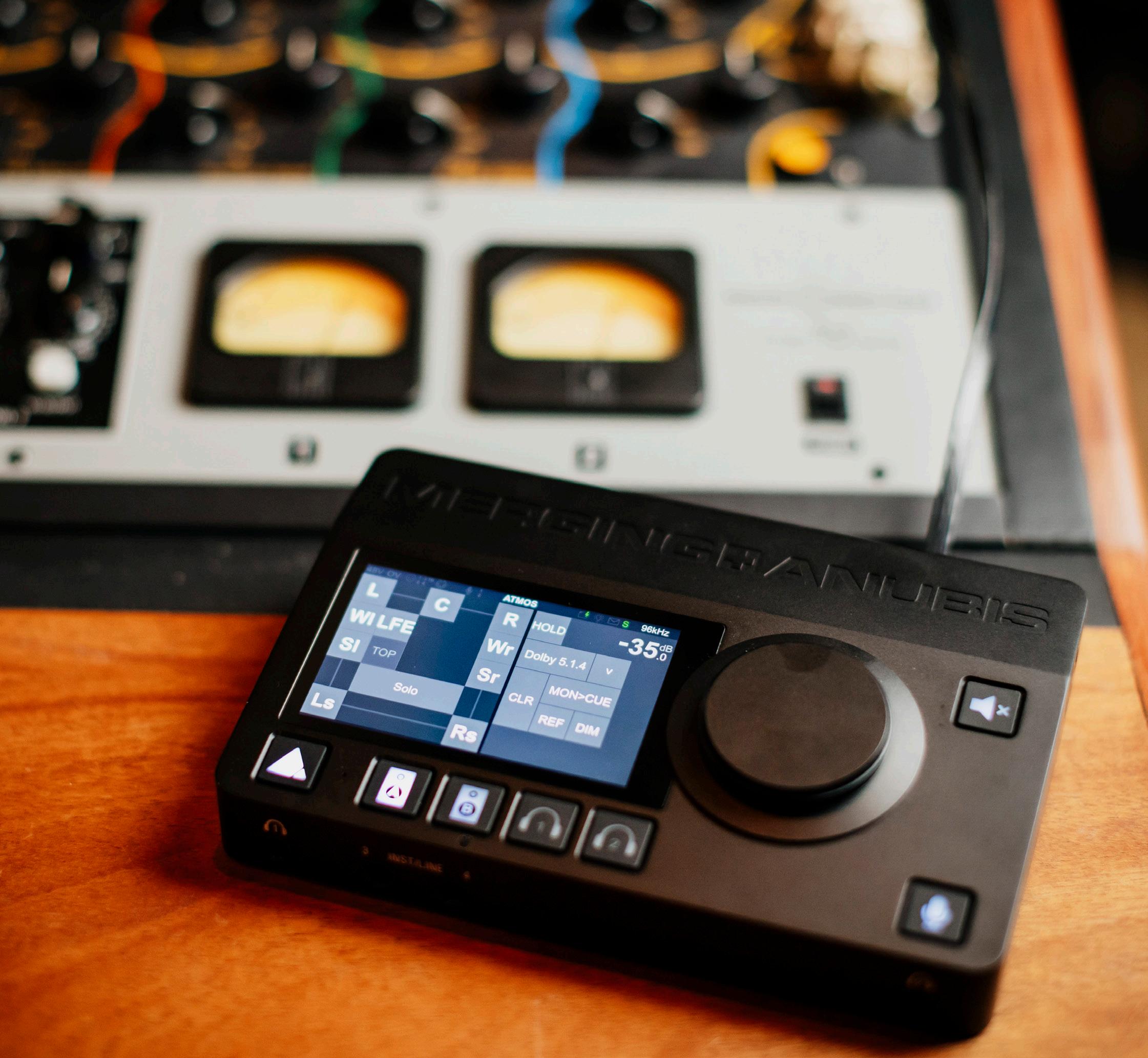
One of the most in-demand mastering engineers in the business, Stephen Marsh has applied his signature touch to some of the biggest titles in the worlds of music, film, TV, game soundtracks, and more. Indeed, his regular client roster comprises a glittering array of Grammy, Oscar and Golden Globe winners. Headliner caught up with the man himself to talk about the art of mastering, his approach to his craft and the Merging Technologies kit that is so central to his process…
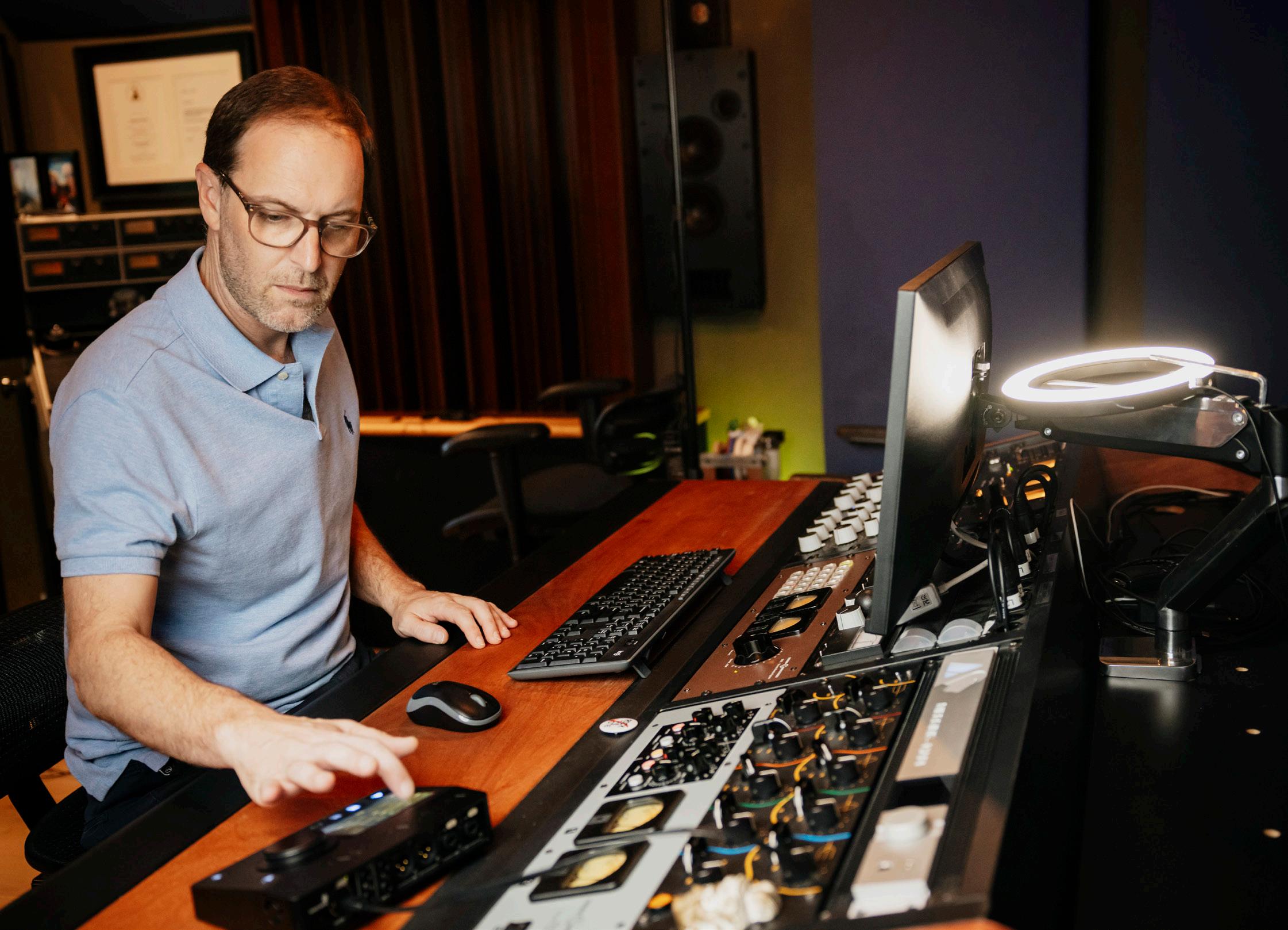
For those who may not be fully familiar with the art, what does the mastering process entail?
Mastering is essentially the completion of the recording. It is inherently about sound, and the way we manipulate sound is the process of mastering. The goal isn’t necessarily to make anything sound different, and that’s the part people find hardest to understand. One of the primary functions of mastering is to finish the
mixes and also make sure that they are presented properly and formatted appropriately for the various streaming formats, production for vinyl, Atmos etc. It’s about increasing the connection between the artist and their creation, their vision and the audience.
Mastering is so specific, and some people may not realize why it’s so important to use an expert. How would you explain that to someone who was thinking about doing it themselves?
One of the greatest challenges of mastering yourself is perspective. A lot of artists, especially when you’re doing so much of the process yourself, are considering so many different things at once. When I come into it, I’m considering things on just one level: how am I reacting as a new audience to this creation? It’s a very different experience for me compared to someone who is already way inside of it.
How long does it take you to master a track?
If it’s a straightforward, well-mixed pop song, it may only be 20 minutes. If it’s a piece of score, where there are different tonalities, you might spend three hours on one song.
Why did you decide to go into mastering?
An opening came up in a mastering department for the studio I worked at. Very graciously, the engineer that ran that studio said to the boss, ‘why not give me a shot?’ He allowed me to succeed and fail on my own, but he got me in the door and that was huge.
Who were some of the mastering engineers you admired?
When I moved to L.A to start mastering, all the legends were still working. A few of them still are. When I arrived it was Wally Traugott at Capitol, Doug Sax at the Mastering Lab… these were the people that created my job. They took
mastering form a perfunctory process of translating something off of one media and getting it onto another, so they could mass produce it, and they elevated it to the art that it is now.
How does mastering for Atmos differ from mastering for stereo?
One of the biggest differences is that a lot of stereo mastering is about making things bigger and bringing things closer to you, and so much of Atmos mastering is not necessarily about pushing things away but
allowing there to be distance if there should be.
What is your Atmos setup?
Our Atmos setup here is Pyramixbased and works all within one system. So, I have a Pyramix on a DAW and a PC, and my Dolby renderer also on the same PC. Everything talks via the Merging audio driver. All of the monitoring gets handled between the Dolby renderer and the Pyramix DAW via internal links. And then my
monitoring comes through my Anubis.
One part of Atmos is making sure that all the downmixes translate, so if someone is playing it back in 7.1.4, or 7.1.2, or 5.1.4, or 5.1, two-channel, binaural, they all need to sound like they make sense together. The Anubis allows me to do all of that stuff very quickly.
“OUR
How did you come across Merging Technologies, and how has that been a breakthrough for the work you do now?
I came by Merging about 10 years ago. I needed to work in DSD, and they were the only company offering a true end-to-end solution. The by-product of that was that I found it was a system that literally did everything I needed it to do. Traditionally, maybe 15 years ago, the standard in mastering was to do a thing called pitch catch, where you have one DAW which will receive all of your source files, and you then play those down through your analog console and capture them with another DAW. That would be your mastering workstation. What I found was that Pyramix replaced both. It allows me to work with all the material in one unit, one DAW. It allows me to work with mix sample rates, mix bit depths, all of my plugins work at high resolution, and it allows me to have one version of everything. So, I work at the very highest resolution and then everything can come down off of that. That means I only have to proof it once, I only have to do all the metadata and clerical manipulation once, and then it can go out in all the necessary formats. It’s unparalleled as far as I’m concerned.
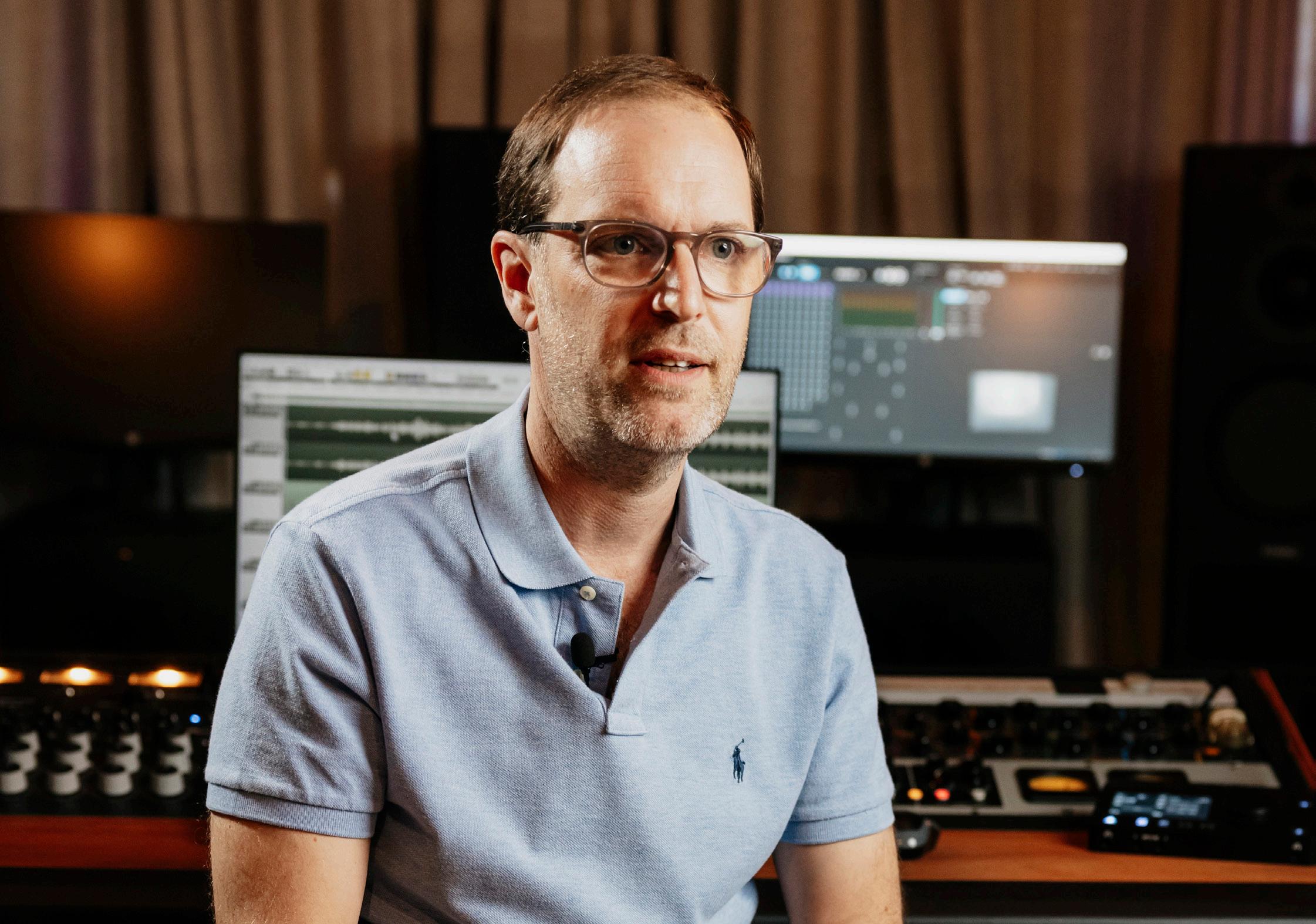
Tell us about the integration between all the Merging products.
At Marsh Mastering we have Pyramix as the DAW, Hapi as our main D/A and A/D, and an Anubis as our monitor controller. The beauty of it is that they all just work!
How is the Anubis implemented within your chain?
My Anubis is integrated in my chain as my monitor control, and it essentially replaced my main stereo monitor controller. When you are critically listening to audio you need to be able to filter it in certain ways to be able to expose different elements of it quickly and easily, just to find out what’s going on. The Anubis handles all of that really cleanly. The interface is super clean, easy to use, and once you get into the thinking of the way Merging stuff operates, it’s really easy to make it go fast.
You have a lathe system in the studio. How did you get into cutting vinyl?
When I first got into mastering in the mid ‘90s people were still cutting them, but very limited – primarily just a couple of genres. I started off at Sony Music Studios and they didn’t have a lathe on the west coast at the time, so I never cut much; I was in a couple of cutting sessions but that was about it. Anyway, I had the opportunity to purchase a working system, so we jumped on it, started working on it, brought it up to snuff, and we’ve been going gangbusters on it ever since. We have a 1947 Scully lathe that has been fully updated and modified to cut modern records.

The thriller Paradise Highway, the debut offering by writer-director Anna Gutto, opened in US cinemas in July 2022. With a solid backbone and familiar story arc, the film is clever in its ability to subvert the tropes and add depth, twists and ethical challenges surrounding its central theme of human trafficking. Taking inspiration from Thelma and Louise, Gutto pays homage to the film in a number of ways and successfully carries out what she saw as its ability to be “a movie about sexual assault that managed to not be an ‘issue’ movie.” It stars Juliette Binoche as Sally, a trucker in the Deep South, who gets caught up in the dark underbelly of human trafficking alongside Morgan Freeman (Gerrick), a retired police officer who’s worked tirelessly throughout his career in pursuit of ending it.

Anné Kulonen, a Finnish-British composer born and raised in the city of Tampere, was on hand to bring Gutto’s gritty drama to life: “Leading up to the shoot, Anna didn’t have a composer yet, so we had a call after I’d read the script and talked about the trucking world and her research into human trafficking. She didn’t want the film to ever seem exploitative, because it could easily become that, and I think she handles the topic really sensitively. The numbers on how many kids are being trafficked are pretty scary. They don’t necessarily need to be physically chained, control can happen in other ways – like drugging or threats to your family and she wanted to highlight that.”
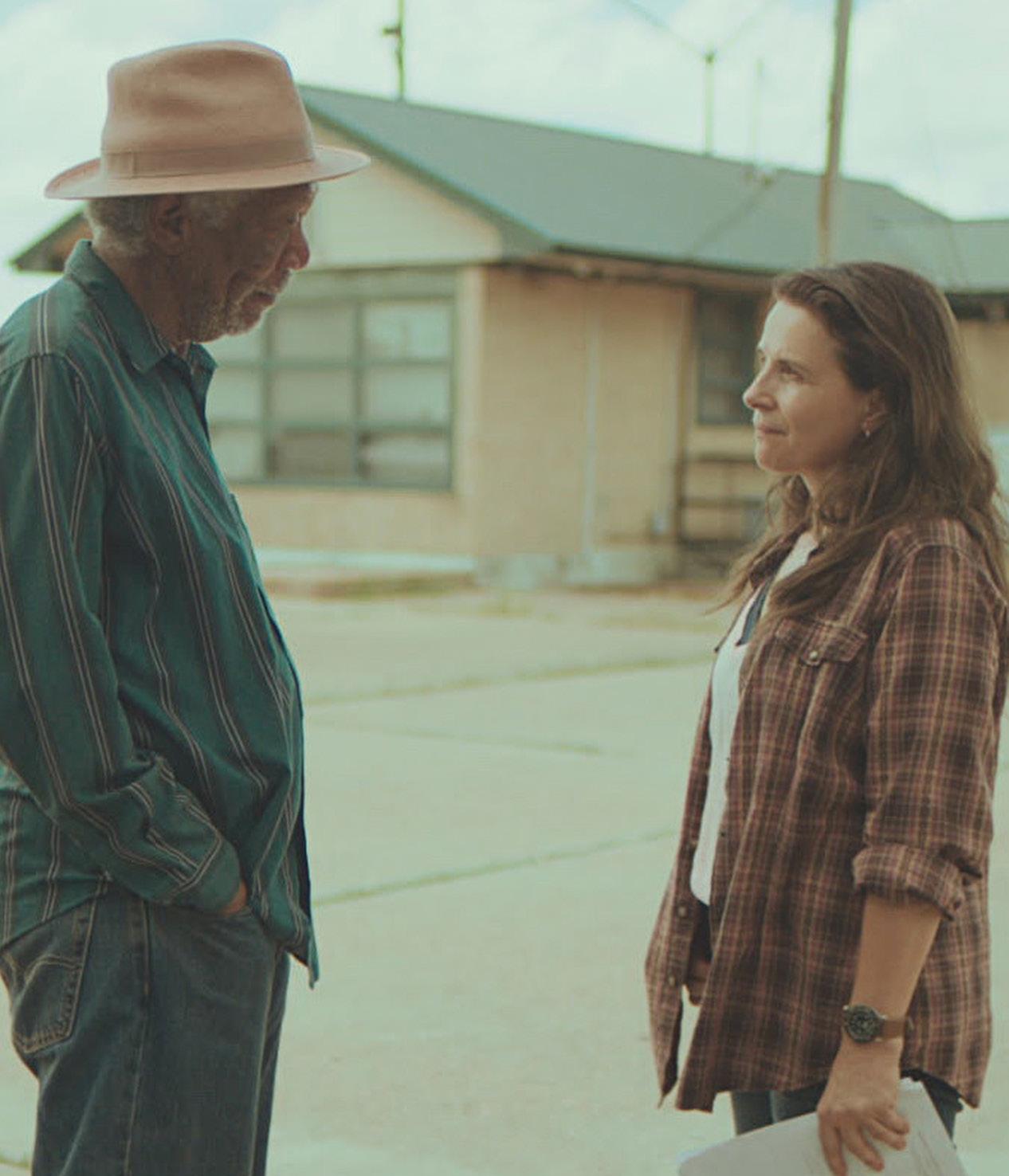
Growing up, Gutto actually had neighbors that turned out to be trafficking young girls, “Anna wanted to show that it really can happen right next door and it doesn’t seem that extreme.”
When researching the film Gutto became friends with American female trucker Desiree Wood: “Both Anna and Juliette traveled around with her and even slept in the truck, to get a real sense of what it was like,” Kulonen explains. “Anna was talking about the sound world and how crazy it was, with all these constant different noises and sounds. There’s a scene in the film where Gerrick after seeing Sally beaten up says to her, ‘Your truck got a beating too,’ and Sally replies, ‘My truck and I - we’re one.’ This line really stuck with me: Sally’s truck is her home and her life, it’s where she always is - always on the road. It felt more than just an arbitrary location. It felt like an extension of her and her character. So I thought - let’s mess around with that sound world and see what we find. Lucky for me Anna was instantly on board!”
The Peterbilt truck is that very specific American long-haul truck and Kulonen set about finding ways to incorporate its sound into the score: “There wasn’t really time to record the truck on set, so I used a Peterbilt library I bought - a few long
recordings of someone driving along somewhere and recording everything for about three hours straight - and I started experimenting with those. The film has this real sense of forward drive and constant motion, so I wanted to have a lot of pulses and repetitive, relentless rhythms at the core of the score. Rather than use too many synths, I wanted this to be more of an organic electronic score, where the sounds come from the trucking world as much as possible and they’re very much our own. To bring out some music and textures from the truck engines, I messed with the time and pitch and used different plugins to help create clearer rhythmic motion. Movement by Output is great for this kind of stuff. Signal, their pulse engine, is also a great tool for rhythmic structures.”
Amongst the more traditional sounds were the guitars: plucked, bowed, electric and acoustic. “Cory’s amazing, he’s an American living in Paris,” Kulonen says of her guitarist Cory Seznec. “Originally, we were exploring going a bit more bluesy with the score, obviously Mississippi/ Tennessee [where the film is set] is the area for it. Anna and I talked about this a lot and what felt right in the end was to feature blues by showcasing the music of local musicians in scenes that have diagetic music. Robert Kimbrough Sr, who Anna met when
in the US, actually plays in the bar during a scene in the film and his music is also what Gerrick listens to in his car.”
When watching the film, the sweeping shots of the huge dusty roads and expansive landscapes work very well with the guitar choices that Kulonen went for. “Sally’s instrument is the bowed guitar. It was really early on when that idea started. It is not an easy thing to get exactly what you want out of it, at least for me,” she laughs. “The neck is not curved like a cello or violin. But I really like the brittleness and scratchiness, because it kind of felt like her, she had a rough childhood and not an easy life. That really became her sound and motif and it reappears throughout the score. The themes for three of the main characters - Sally, her brother Dennis [Frank Grillo] and the trafficked young girl Leila [Hala Finley], are closely connected and for me that was purposeful, as I felt they’re all quite broken souls, just searching for family and connection and that’s why I didn’t want them to be that different - it’s all part of the same fabric. The score as a whole has a dirty, distorted, rough sound and that’s what we wanted, not polished, so it reflects what the characters are like.”
“I WANTED TO HAVE A LOT OF PULSES AND REPETITIVE, RELENTLESS RHYTHMS AT THE CORE OF THE SCORE.”
In order to create that sound, Headliner asks her what tech helped her get there.

“In my setup I use a lot of Universal Audio plugins. With this score the Little Labs VOG Analog Bass Resonance Tool was great for max lows, Maag EQ4 for adding space and air to the bowed guitar and strings. Brainworx bx Saturator V2 allows for really precise saturation and it’s a great coloring tool for getting the tone you want. Reverb wise, I’m generally using Lexicon for elements that sound good with longer, fuller reverbs, and the EMT 140 Plate on elements that need a shorter snappier reverb, like drums/percussive elements. Decapitator by Soundtoys is great for adding crunch and distortion.
“Cory recorded remotely for me using a bunch of guitars: a 1939 Recording King Carson Robison Model K, 1960s Harmony Sovereign H1260, late ‘60s Kent 740 and a National Estralita Deluxe, recorded using an Audio-
Technica AT4040 mic with a Focusrite Scarlett 2i2 audio interface.”
Another important aspect of the composing process is of course the working dynamics between the post-production team, and Kulonen brought up how pleased she was with the process. “One thing that was really great about this project was how collaborative it was between Anna, editor Christian Siebenhertz, sound designer Hugo Ekornes and me. Anna is really generous when it comes to collaboration, encouraging everyone’s opinion, and both Hugo and Christian are amazingly analytical and articulate about sound, so that made up a super open and creative atmosphere. All the post was done at Storyline in Oslo and Steve Parr, my trusted mix engineer finished the score with me.”
A poignant element in the soundtrack is the use of Blondie’s One Way or Another during a driving scene where the young girl Leila and Sally
are enjoying their time together and singing along, which is then reflected in a cover version by Anné and Philip Kay in the closing credits, produced in a way that compliments the overall sound of the movie.
“After doing a couple of rough sketches, it didn’t quite feel right, so I parked it as it made more sense to bring it out of the fabric of the film. I knew the scenes that I wanted it to be connected to but they weren’t that set yet,” Kulonen says. “My thought behind the cover was always about turning the original’s meaning on its head and making it about hope and connection - these lost and fractured souls finding each other. Phil’s just brilliant to work with and I’m really happy with what we came up with.”
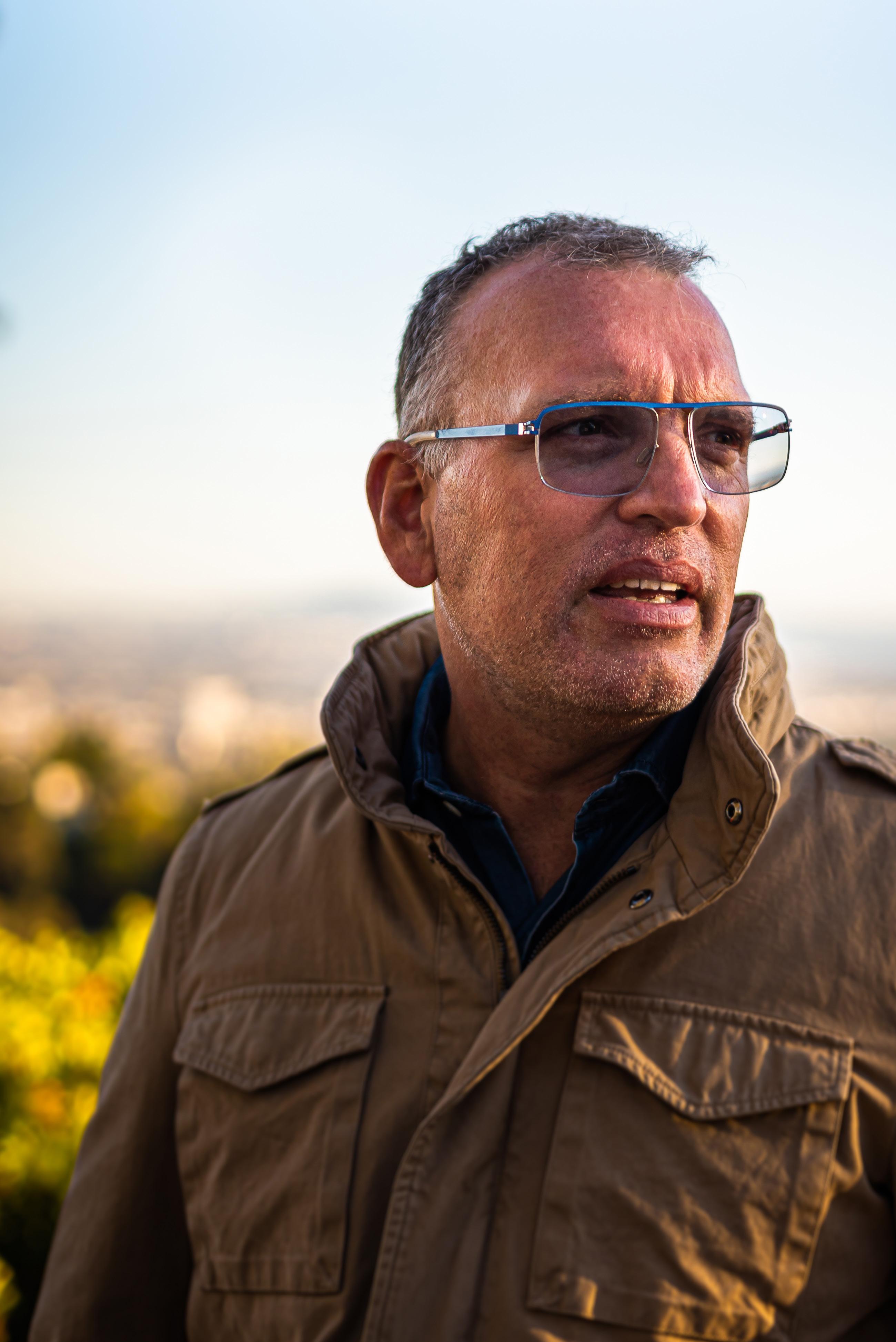

Captain America: Winter Soldier and Captain America: Civil War, all the Kingsman films, Ron’s Gone Wrong — this is only a cursory glance over Henry Jackman’s brilliant career so far as a film composer. Headliner finds out how a choral childhood, followed by a love of the UK’s rave scene somehow lead to a chance meeting with Hans Zimmer and working with him at Remote Control Studios in California. Jackman opens up about working on Netflix blockbuster The Gray Man, starring Ryan Gosling, Chris Evans and Ana De Armas, and why he decided to spend six months composing a 17-minute suite for the movie before he had officially been asked to start.
Born in the suburban London borough of Hillingdon, Jackman’s upbringing was about as classical as you could get musically — he learned choral singing at one of London’s great landmarks, St Paul’s Cathedral, had music lessons at Eton College, and eventually attended the University of Oxford. But despite all these opulent surroundings and learning from some of the most in-demand teachers in the world, Jackman felt a strong yearning for the contemporary.
“I did have a very strict classical upbringing,” he says. “I was in St Paul’s Cathedral singing Tallis and Palestrina. It was all very disciplined with very exacting choir masters. My music teachers might have considered this going off the rails, but I went in a completely different direction when a friend of mine showed up with a little eight-bit sampler. I just completely abandoned all classical education and spent all my time going to raves.
“I was listening to breakbeat and hardcore, going from endless studying and piano practice to nonstop Fabio & Grooverider, which led to a whole career in the record industry. But at no point was I really thinking about film music.”
Indeed, Jackman suddenly found himself working in studios alongside the likes of Seal, Elton John, Gary Barlow and many other artists in this period, in which he reinvented himself into a record producer. As much as he enjoyed this rollercoaster, he did feel a pull back to the world of orchestration and classical harmony.
“Around this time I was always trying to squeeze in interesting chords and string arrangements, I think I was getting a little bored,” he says. “I made this weird music for an album called Transfiguration, which was my poor man’s rip-off of Björk’s albums, Homogenic and Vespertine, and Hans Zimmer got to hear it one way or another. Which is a great piece of luck, because you can imagine how many CDs were being sent his way then.”
It was not only film music mogul Zimmer, but also fellow Britcomposer John Powell who discovered Jackman, plucking him
from his studio work and essentially throwing him into the film industry. In their early conversations at Zimmer’s Remote Control Studios in California, the veteran German musician told Jackman he was “wasting his time” as a producer with his wealth of both early and contemporary music knowledge, and that he was far better suited to scoring to picture.
Yet another abrupt U-turn saw him assisting these two composers on some of the biggest films being released at the time, including The Dark Knight, several Pirates of the Caribbean films, Kung Fu Panda and many more. Eventually stepping out of Zimmer’s gargantuan shadow, Jackman’s first solo endeavor was for Monsters vs Aliens (2009), and then quickly ramping up his credits as many more films like Kick Ass and X-Men: First Class followed.
Like several UK-born composers such as Lorne Balfe, the Gregson-Williams brothers and the aforementioned John Powell, Jackman is very much established as one of the top, go-to composers for some of biggest films to come out in the last two decades, whether they be Marvel hits such as the second and third Captain America films, or beloved animations including Puss In Boots and Ron’s Gone Wrong
Having written some excellent music for those Captain America flicks for the director brothers Anthony and Joe Russo (whose Marvel winningstreak continued when Avengers: Endgame became the world’s highest-grossing film at the time of its release), it’s not surprising Jackman was called upon by the pair for their Netflix commission, The Gray Man, which was watched for a total of 88.55 million hours in its first week of release.
In the build up to starting work on the film, Jackman had several months of downtime to spend with his partner and newborn son, but kept being drawn to doing bits and pieces of preparatory work on the Ryan Gosling, Chris Evans and Ana De Armas-starring feature. The Russo brothers told him to enjoy his time off, however they “gave me a heads up that, as well as all the action and big setpieces, they’d need some music for the flashback scenes for Six [Gosling] and his childhood trauma.
“But then new themes and ideas kept coming out. I spent ages making all these handcrafted percussion sounds and distorted breakbeats and recording clocks and slowing them down. The track got to eight minutes, and then 10 minutes, and then 12 minutes, and I kept all this secret from Joe and Anthony. I ended up spending six months on this 17-minute track and I was terrified they’d tell me none of it was usable.”

This wasn’t the first time he’d written a suite of different music and themes to lay the groundwork for a film, he did so also for Captain America: The Winter Soldier among other films. But it’s astounding that this 17-minute suite was created in such a spontaneous and unplanned way. Most wonderful of all, it’s the opening track on the soundtrack album, and its various themes and motifs can be heard throughout the movie. So, suffice to say, the directors were very pleased with what they heard.
To achieve these wonderful sounds on the electronic side, Jackman turned to his older gear, experimenting around
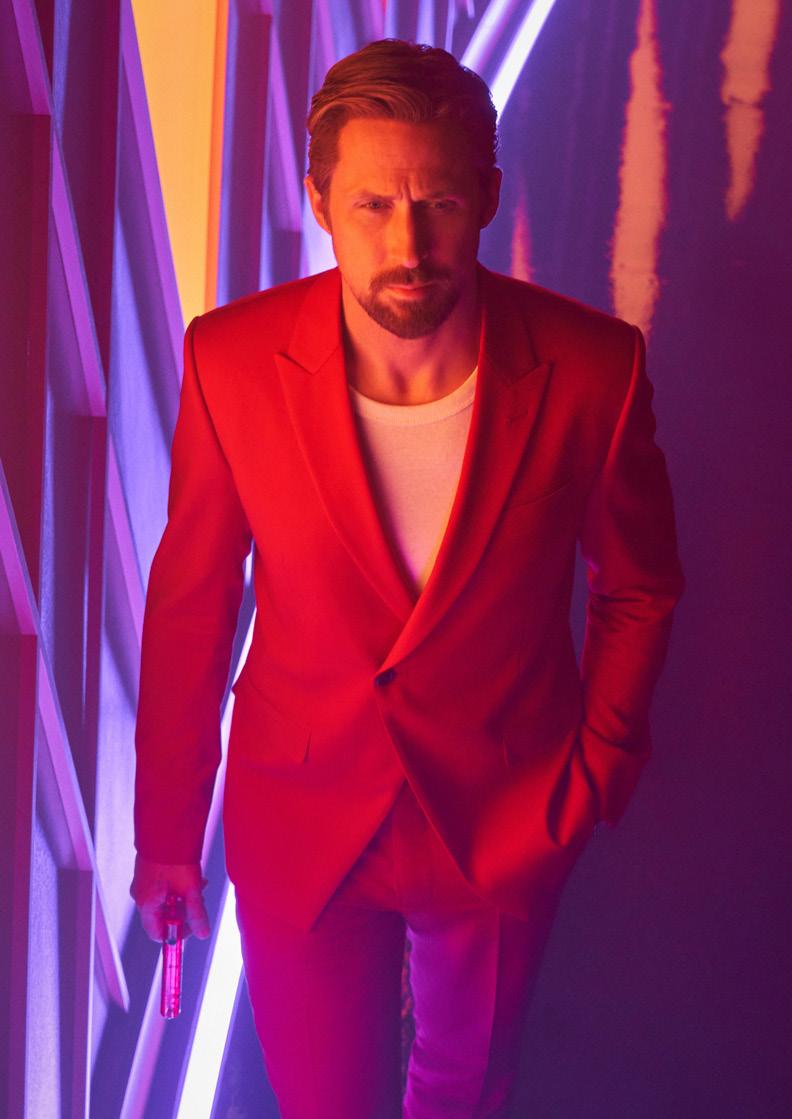
and using minimal amounts of digital processing to cover up some of the “crusty” sounds.
He explains: “I’d be throwing it back into the analog world and shoving sounds through a Roland SH-5 or a properly old Korg MS-20 where the circuitry is not quite as it should be. I’d be getting a bit of break up and distortion. Not using too many plugins, I’d just bake it and bake it over and over again through different bits of old gear until it sounded the way I wanted it to sound.”
Understandably, he has to remain tight-lipped regarding upcoming
projects (he’s probably up to his nose in non-disclosure-agreements for upcoming films), but the good news is, the full soundtrack, including that masterpiece of an opening suite, are available to listen to and stream now. And, of course, The Gray Man is streaming on Netflix now — it’s the ultimate film for switching your brain firmly onto the off-position, sitting back and watching the mad, glorious action unfurl in front of you.
“I ENDED UP SPENDING SIX MONTHS ON THIS 17-MINUTE TRACK AND I WAS TERRIFIED THEY’D TELL ME NONE OF IT WAS USABLE.”Credit: Paul Abell/Netflix

Loveless are a 2000s emo band for the TikTok generation. Julian Comeau explains why he’s just fine with that.
“People ask me, ‘What’s it like navigating the music industry?’ I’m like, ‘Well, we didn’t really navigate the music industry. We navigated social media and the world of social media has eclipsed the music industry,’” says a refreshingly honest Comeau –singer, songwriter, producer and one half of alt rock-pop band, Loveless.
After exploding onto the Billboard charts with their emo version of Elley
Duhé’s Middle of The Night, they’ve been busy feeding the algorithm with relentless 30-second cover videos of whatever song is trending in the charts or elsewhere on TikTok – and it’s working. In a very short amount of time, the band has racked up 1.9 million followers on the platform and over two million monthly Spotify listeners.
“There’s way more power in being an influencer than there is being a rock star,” shrugs Comeau. “A lot of people are afraid of that – they want the mystique and the image of, ‘I’m a rockstar,’ but for me it’s like, ‘I don’t care. I’ll be an influencer’. I’ll sell the Sunset Lamp if that means that people care about my band more,” he laughs.
Comeau’s methods of getting the band’s music into the social spotlight may seem calculated, but the results speak for themselves. TikTok and Instagram is the new way to market music to a young, scroll-addicted demographic, and he’s giving the people what they want. He usually makes two or three videos for socials a day.
Just six months after meeting and quickly forming a friendship, Comeau and multi-instrumentalist Dylan Tirapelli-Jamail officially formed Loveless in 2020. They’d been uploading music for about a year until their cover of Duhé’s Middle of The Night changed everything. Loveless were inundated by record labels requesting specific covers and
managers wanting to work with them. “I guess we’re a band now,” he says on picking a management company. “We’re in the system and now people pay attention to us. It’s all very cool, but it’s all based on 30 second covers that I made on the internet.”
Loveless’ music is a 2000s emo fan’s dream – sounding like a combination of the best bits of Thirty Seconds To Mars, My Chemical Romance and Evanescence – and Comeau has got the vocal chops worthy of the comparison. It turns out that he’s actually a big musical theater fan, discovering rock music a little later in life.
“I’m pretty sure if you look at my Spotify Wrapped from 2014, it’s going to be exclusively Newsies. I got musical theater for days! For years and years and years, my favorite was probably Newsies or Spring Awakening. It definitely inspires how I create rock music. I didn’t discover heavy music until I was 18, and the – quoteunquote – heavy music someone showed me was Beartooth when I was 19. I was like, ‘This is my life now’.”
A receptive fanbase in place, Loveless has now shifted its attention to creating original music with the release of their End of an era EP, featuring four original songs alongside their most viral renditions so far. The title simultaneously embraces moving away from the covers that made their name and Gen-Z’s aversion to using Caps Lock.
“We were calling it an End of an era but it’s a lowercase E on era because we acknowledge that the covers are the reason that we are here. But also, let’s adapt, let’s grow with that platform. Let’s not just do the same thing over and over again, because the fans and the comments are kind of over the covers – they’re ready for new originals.”
In a match made in TikTok heaven, Loveless just released original track, Supernova with fellow social media sensation Nic D. Comeau is relieved the track has been a hit with fans despite being a slight departure from their usual sound.
“WE ACKNOWLEDGE THAT THE COVERS ARE THE REASON THAT WE ARE HERE. BUT ALSO, LET’S ADAPT, LET’S GROW WITH THAT PLATFORM.”
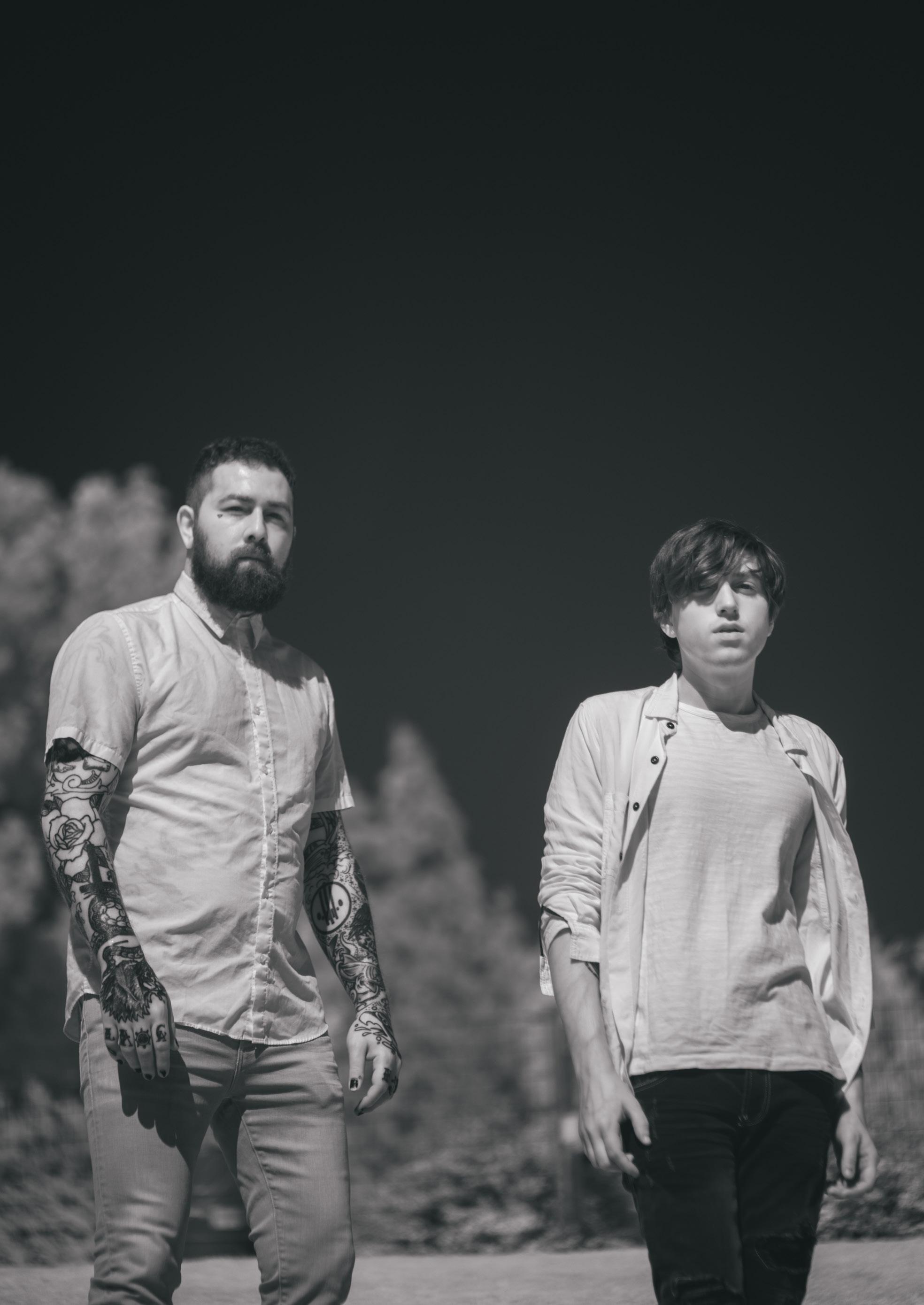
“It’s really a pop song,” he acknowledges. “But people love it. That gets me excited for what we can do in the future, because obviously our biggest song is a heavier track. A lot of people expect us to lean into that heavier, more screaming stuff, so then for us to be like, ‘Here’s a pop song about falling in love with somebody,’ they’re like, ‘What?’ I’m really happy with the response on that one though.”
End of an era’s IS IT ME is the original track Comeau is most proud of on the new album, although he isn’t sure the US is ready for it yet. “It’s a banger. I think that one is great. Everyone else seems to like Worst Case Scenario, but I’m all about IS IT ME. Maybe that song will do better in the UK,” he muses, disclosing that the band are playing their first London headline date in January 2023.
“I think maybe it’s trying too hard in the US – I don’t think the US is ready for something like that. There’s a lot going on, stylistically, and maybe people are like, ‘Is it a trying-to-toethe-line pop song? Is it a pop-punk song? Is it a rock song?’ It also shows off a lot of what I can do vocally and the musical theater influences –there’s a lot of big, long, high notes. It’s very much written for a live show. When we start playing the songs live, this one’s gonna be fun every single night.”
Loveless fans might not be aware that Comeau is also a producer for other rock and heavy metal acts as well as having a hand in producing Loveless’ music.
“We have a third, secret member of Loveless – our engineer Nick Morzov. He’s worked with everyone from Animals as Leaders to Travis Barker. Dude’s a serious engineer and he’s been helping us engineering everything and producing stuff on the new record. I built the tracks at the start, I produced the basic demos with all the production, and then handed that to Nick who then does all the drums, the live instruments like the guitar and bass, because we use real amps. It’s a whole thing,” he grins.
Helping him lay Loveless’ groundwork is Steinberg’s Cubase DAW, which he switched over to from Pro Tools five years ago.
“I switched because it’s what my friends were using. It’s what Tyler Smyth [producer and frontman of American metalcore band Dangerkids] was using, and it’s what my band at the time was using. I wanted to work with Tyler, so the way that I got into Cubase was session compatibility, but I fell in love with the tuning and the workflow. I’ve always been a big fan of the workflow – I could never switch back to Pro Tools. It’s just so customizable. It’s so interchangeable. You can use the stock sounds and the stock plugins for everything. I still think the Cubase compressor is the best compressor,” he enthuses. “It’s just the best compressor. Put that thing on any vocal, it’s amazing!
“And with a high ratio, fast attack, fast release, you’re set to just crush it. It does so much to a vocal. Just the fact that you can change key commands
– which you can’t do in some DAWs – that’s kind of a deal breaker. Plus you can make macros built-in. I have a macro that if I have a stereo track that I need to make into a mono track, it does all of those things in two seconds – it splits the track into a mono track, it disables one of the tracks, hides that track, and then it keeps one of the mono tracks there. It does all of those options for me in one click, and I only had to do it one time. Cubase is cool. I’m a fan.”
In terms of new original Loveless music, Comeau reveals there’s a lot to come. “We have so much music. We have 100 demos, so it’s time for me to start narrowing it down a little bit. We just started working on a new song that I’m really excited about, so there’s a bunch of new Loveless stuff in the works.”
With that, he has to go – he’s got a TikTok video to make.
“It’s always been really important to me that I’m a performer at heart,” he points out. “If I wasn’t making music, I’d probably be acting or doing something behind the scenes. It’s important to me that no matter what, people are checking out the music. I’m not gonna suffer through it and be like, ‘Oh, we have to do this ‘the right’ way. No, I’m gonna cheat, lie and steal as much as possible on social media and be this influencer type, because the power of social media is huge.”
“I’M GONNA CHEAT, LIE AND STEAL AS MUCH AS POSSIBLE ON SOCIAL MEDIA AND BE THIS INFLUENCER TYPE, BECAUSE THE POWER OF SOCIAL MEDIA IS HUGE.”

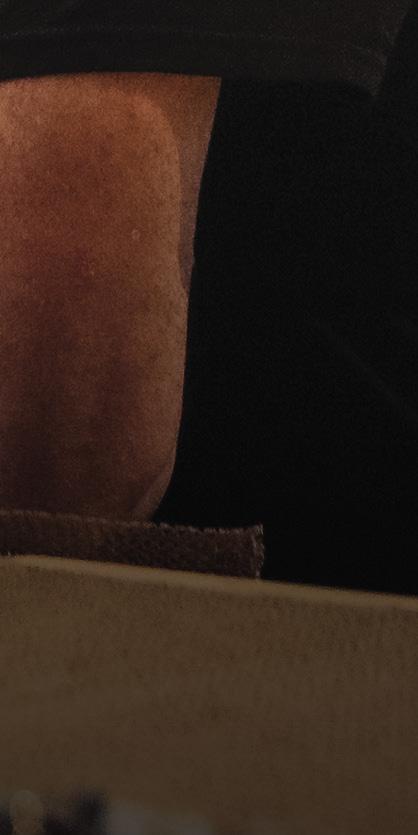



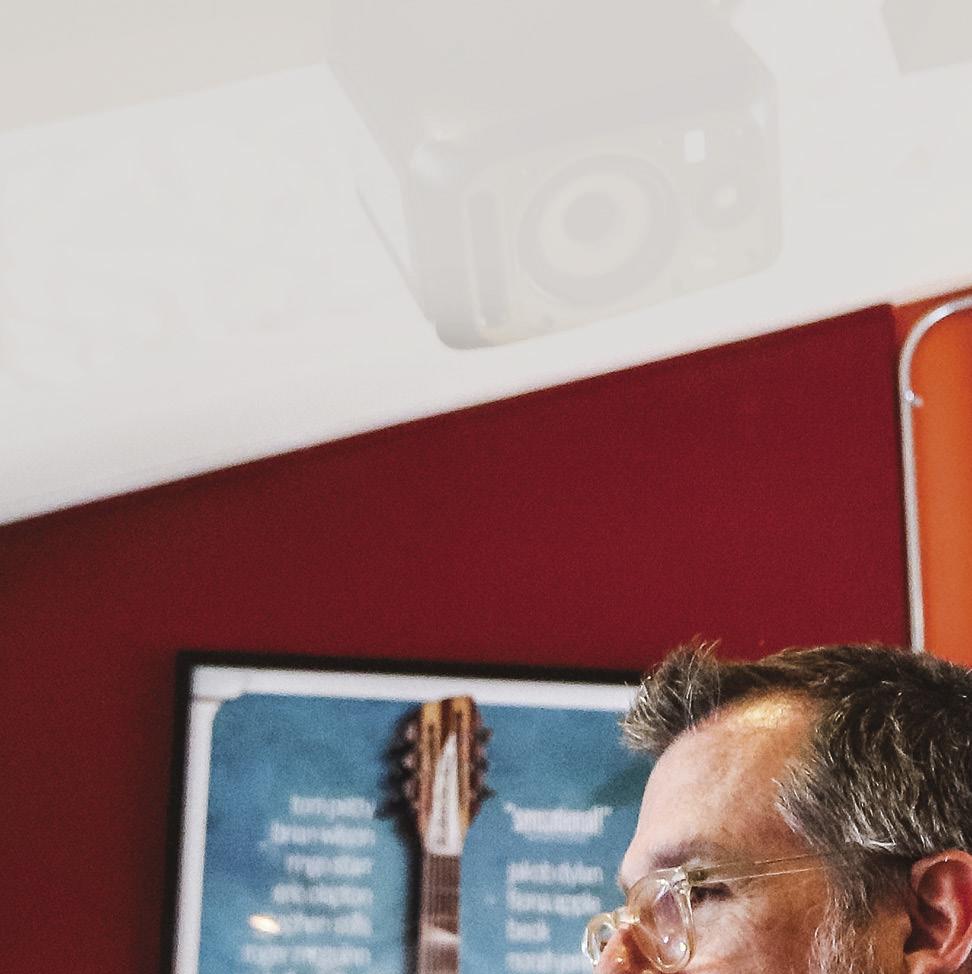

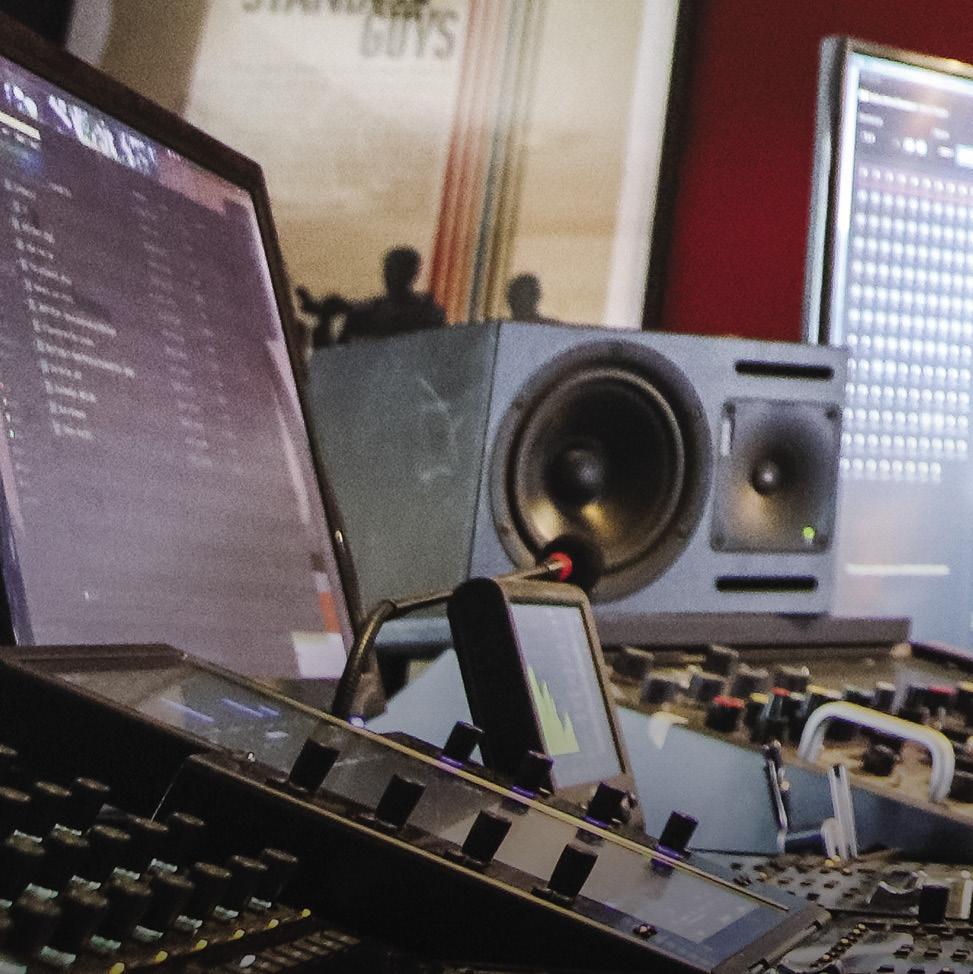
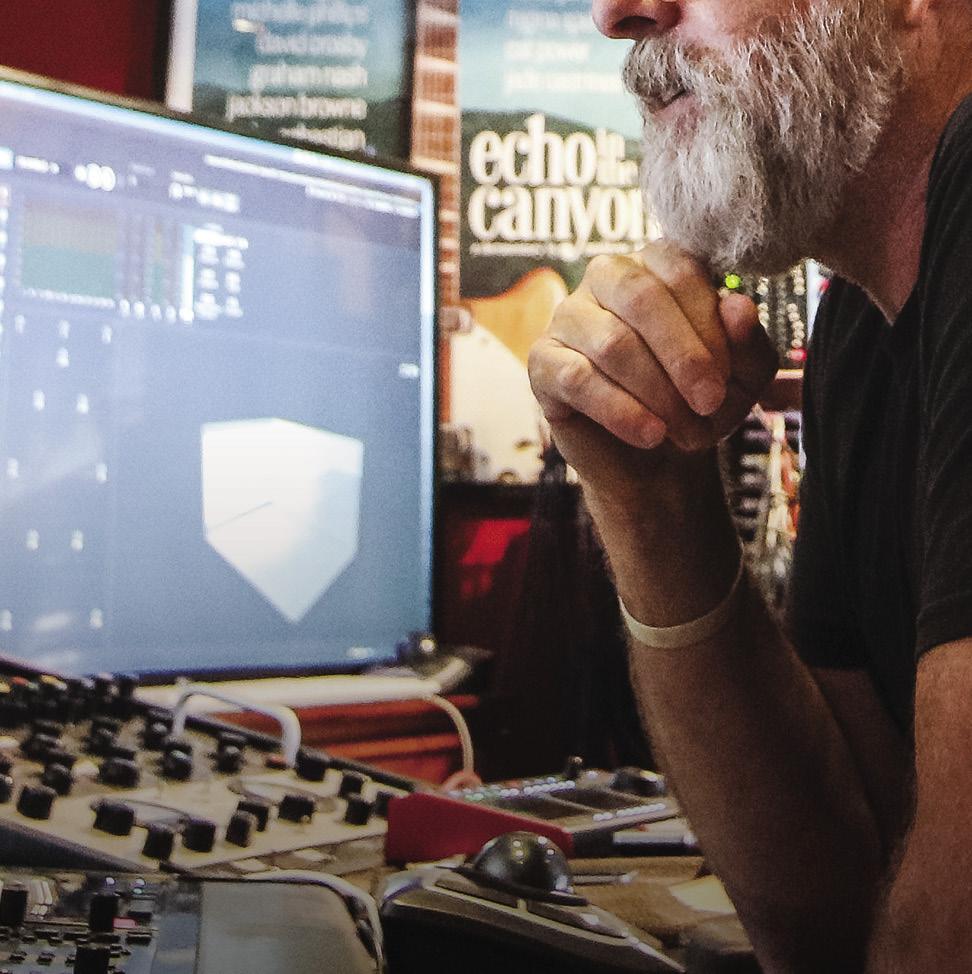
GRAMMY ®-winning producer/engineer Dave Way's resume runs across all genres , spanning pop, rock, R&B and more, and his credits include such acclaimed artists as Christina Aguilera, Fiona Apple, Ziggy Marley, Macy Gray, Michael Jackson, “Weird Al" Yankovic, Phoebe Bridgers, Ringo Starr and dozens of others, in addition to the acclaimed soundtrack to Echo in the Canyon. His most recent GRAMMY nomination was for “Best Immersive Audio Album," for his work as immersive audio co-producer on the 2019 album The Savior by A Bad Think.
Learn more at pro.focusrite.com or scan the QR code below
Like many working in the world of immersive audio, Way's attention has turned to the Dolby Atmos ® format, and in 2020 he took the leap and upgraded his personal facility, Waystation Studio, to be able to mix in Atmos. Since last year, he has been settling in with the new setup, mixing several projects and even recording an entire album specifically to be mixed in Atmos –helped in no small part by his arsenal of interfaces and a RedNet R1 controller from Focusrite Pro.
